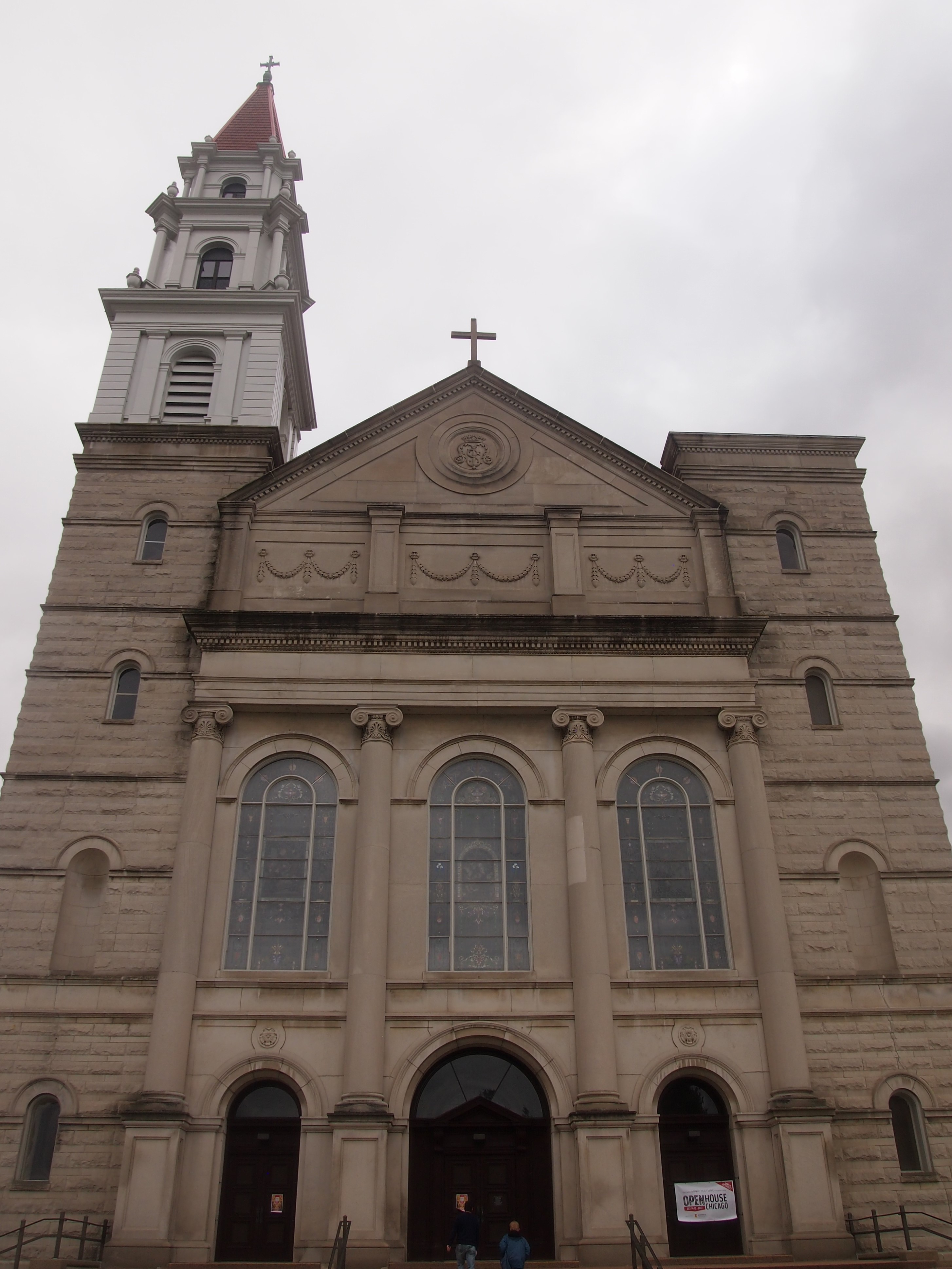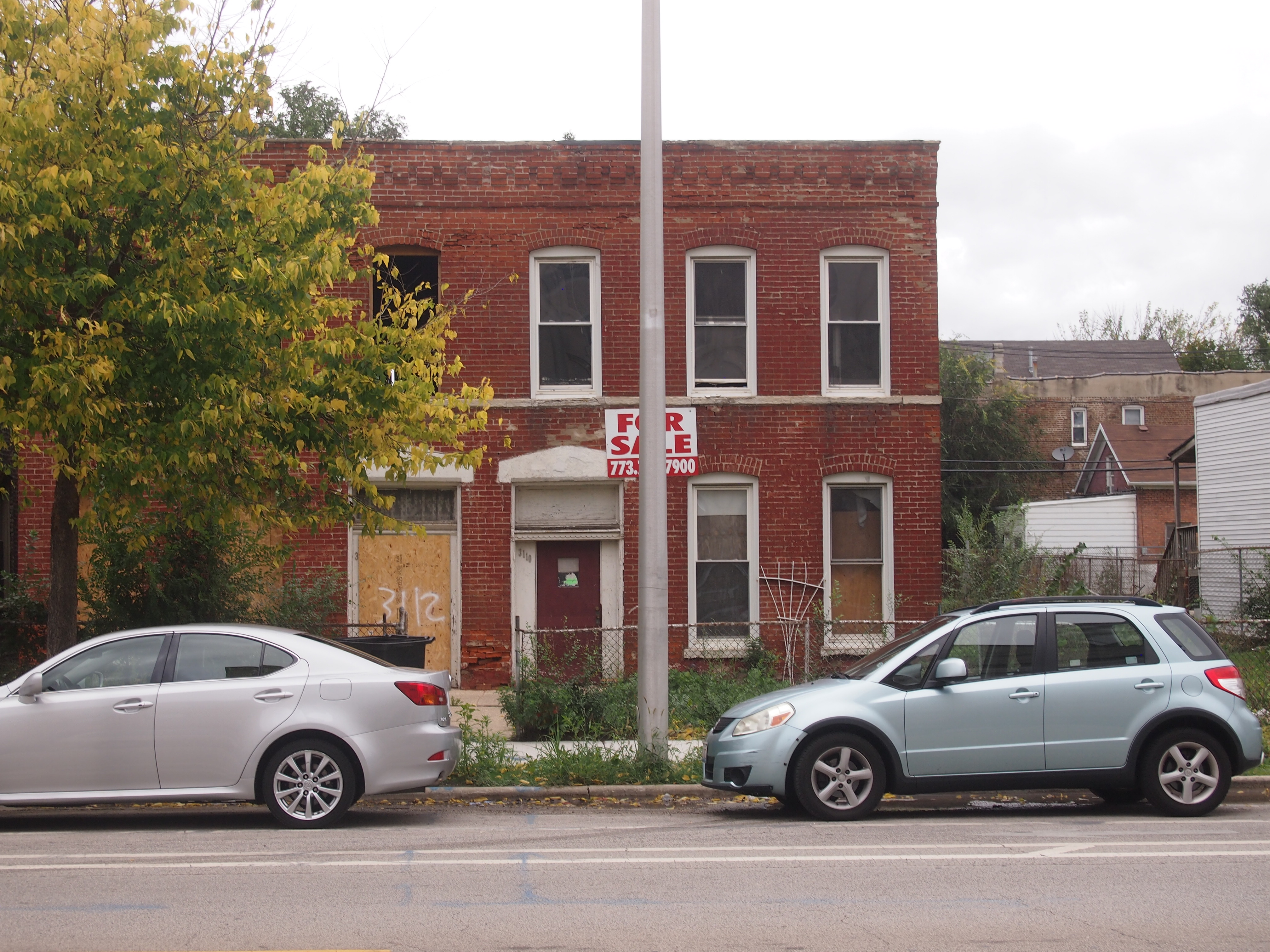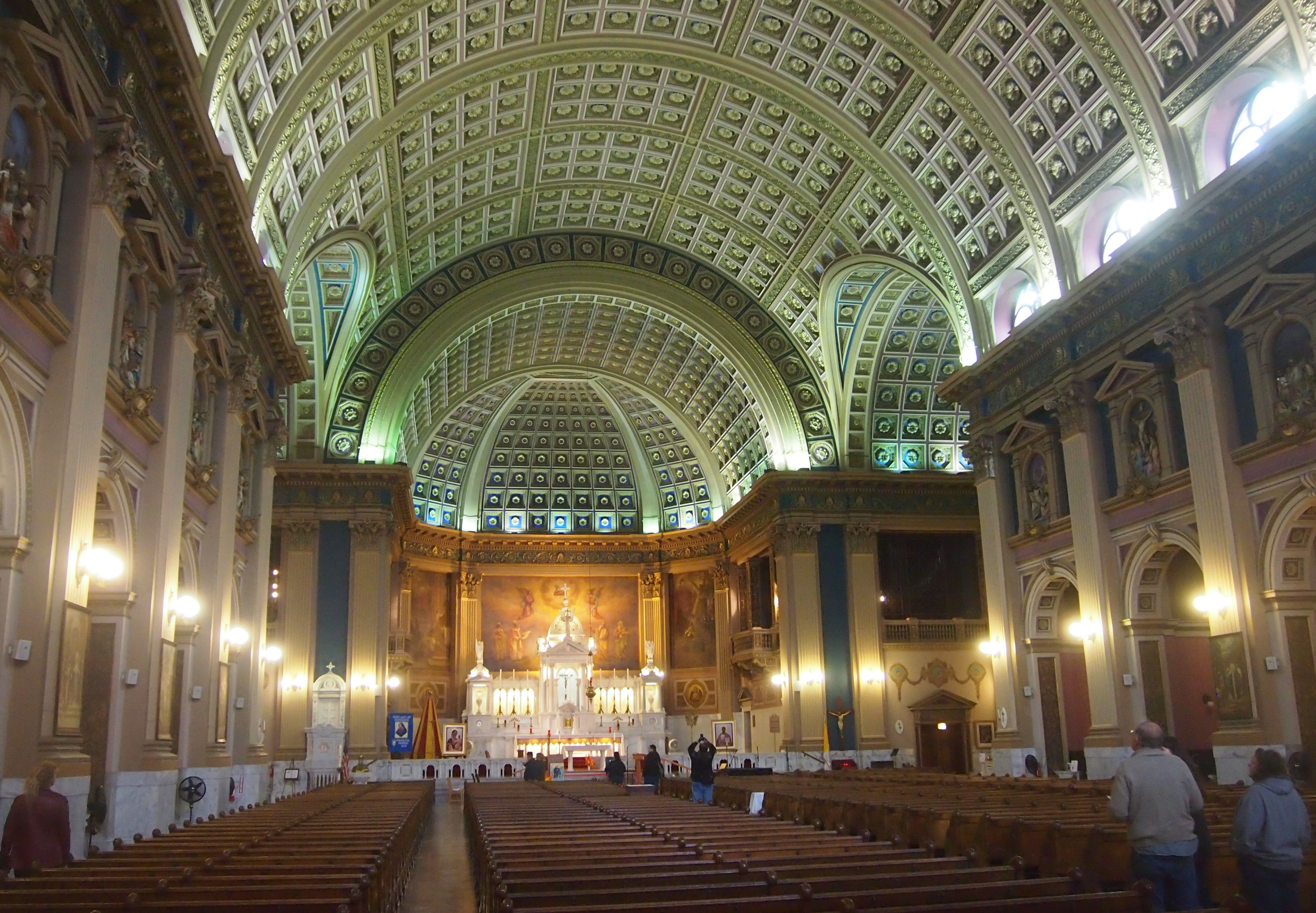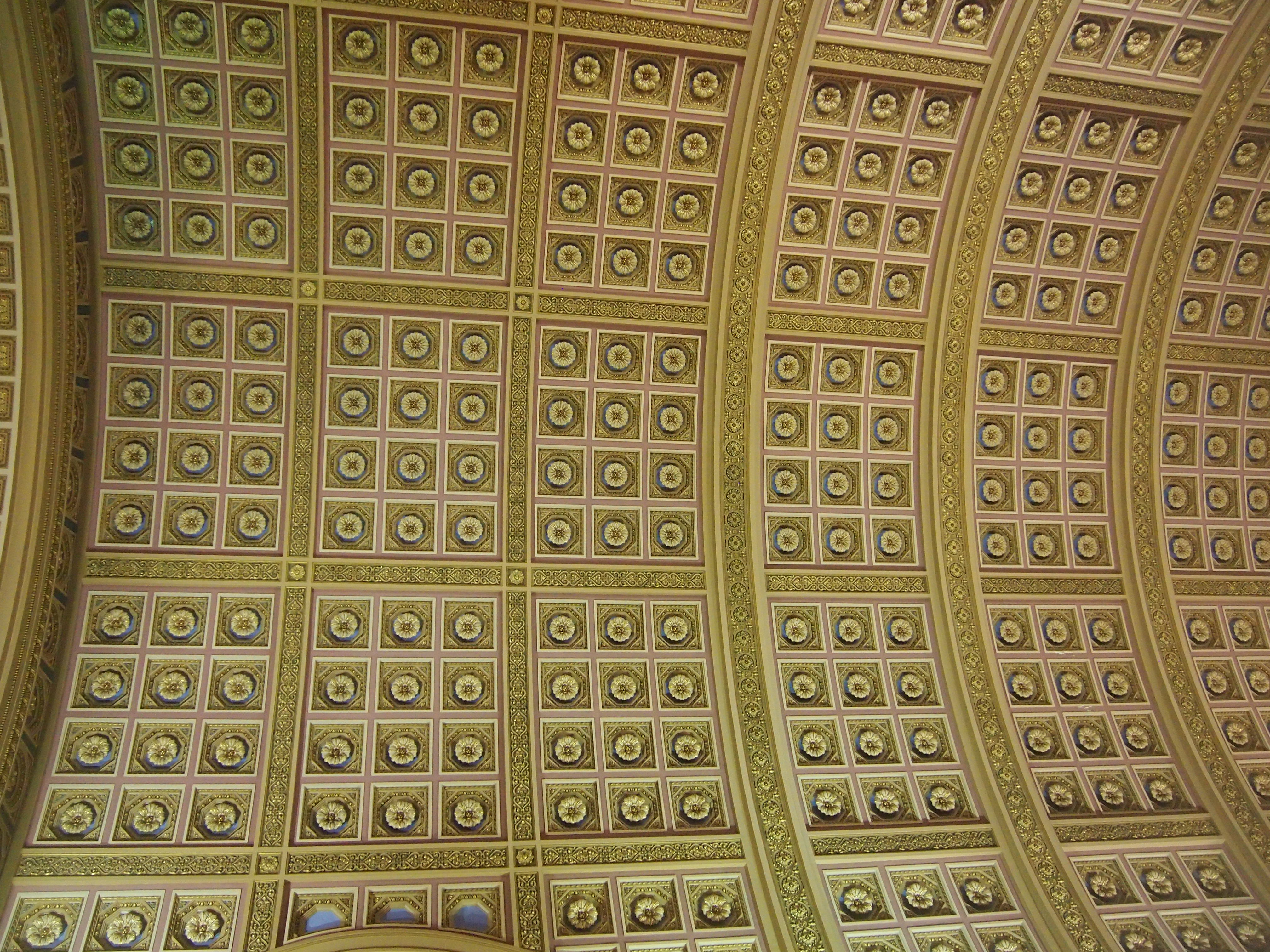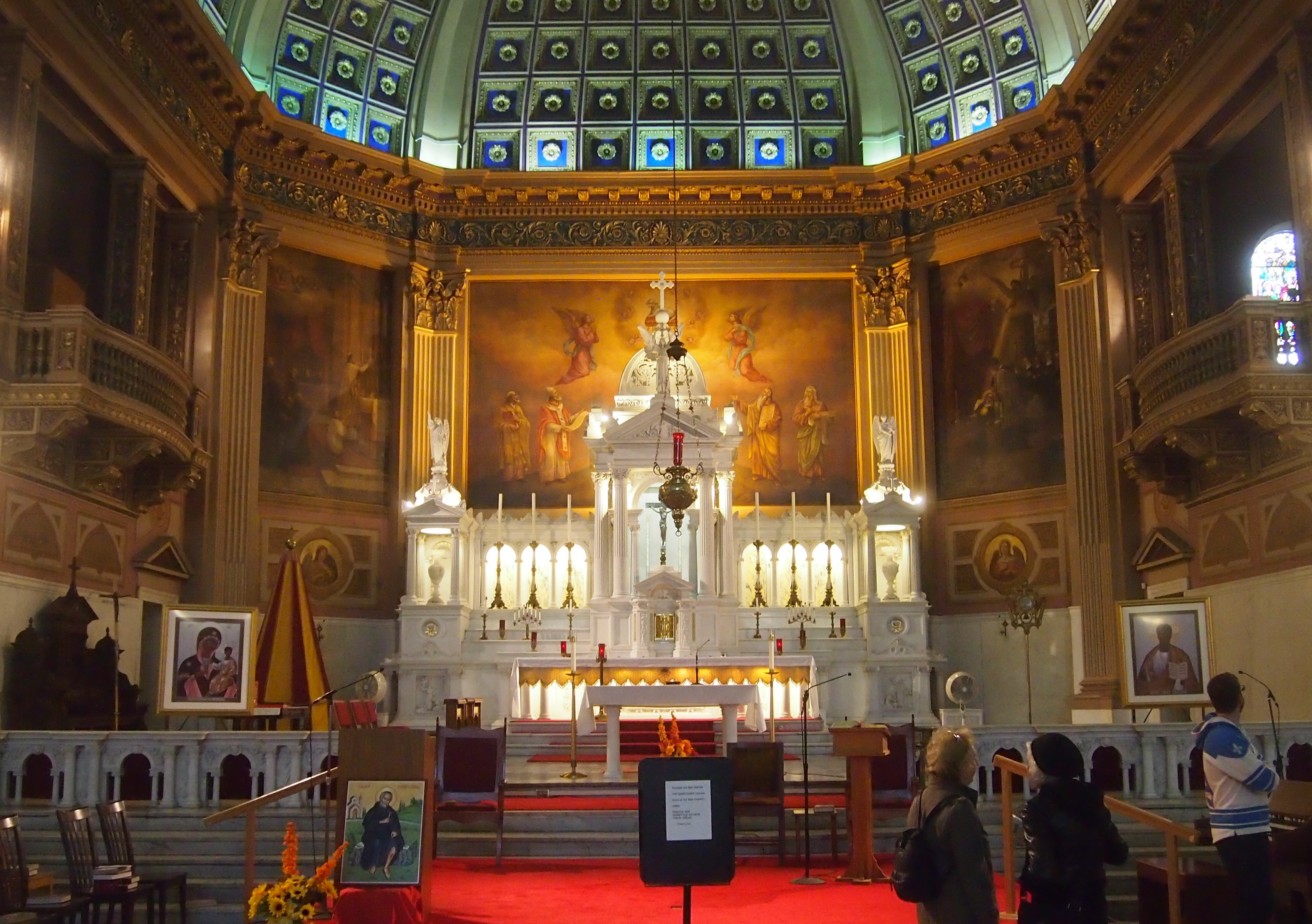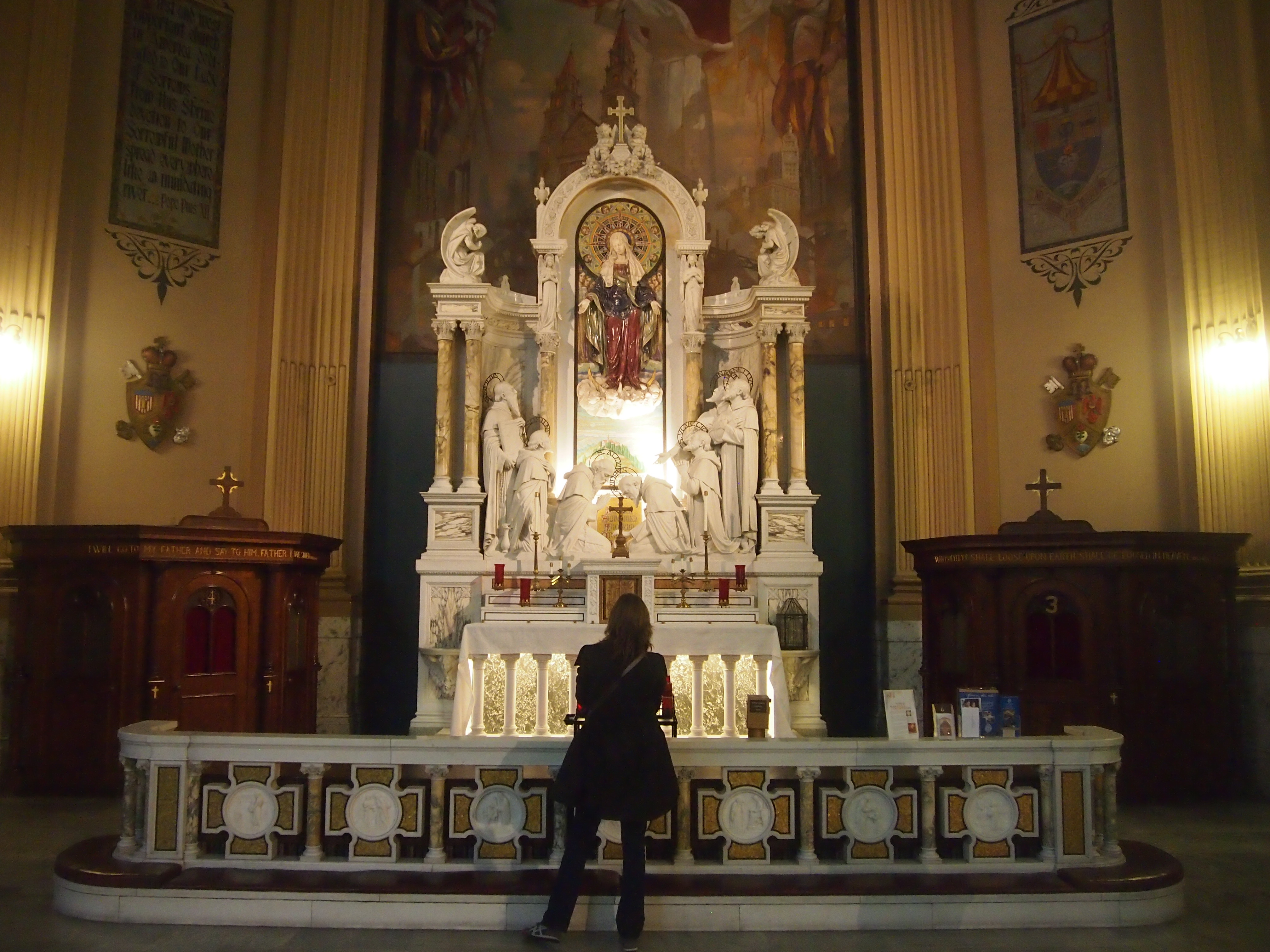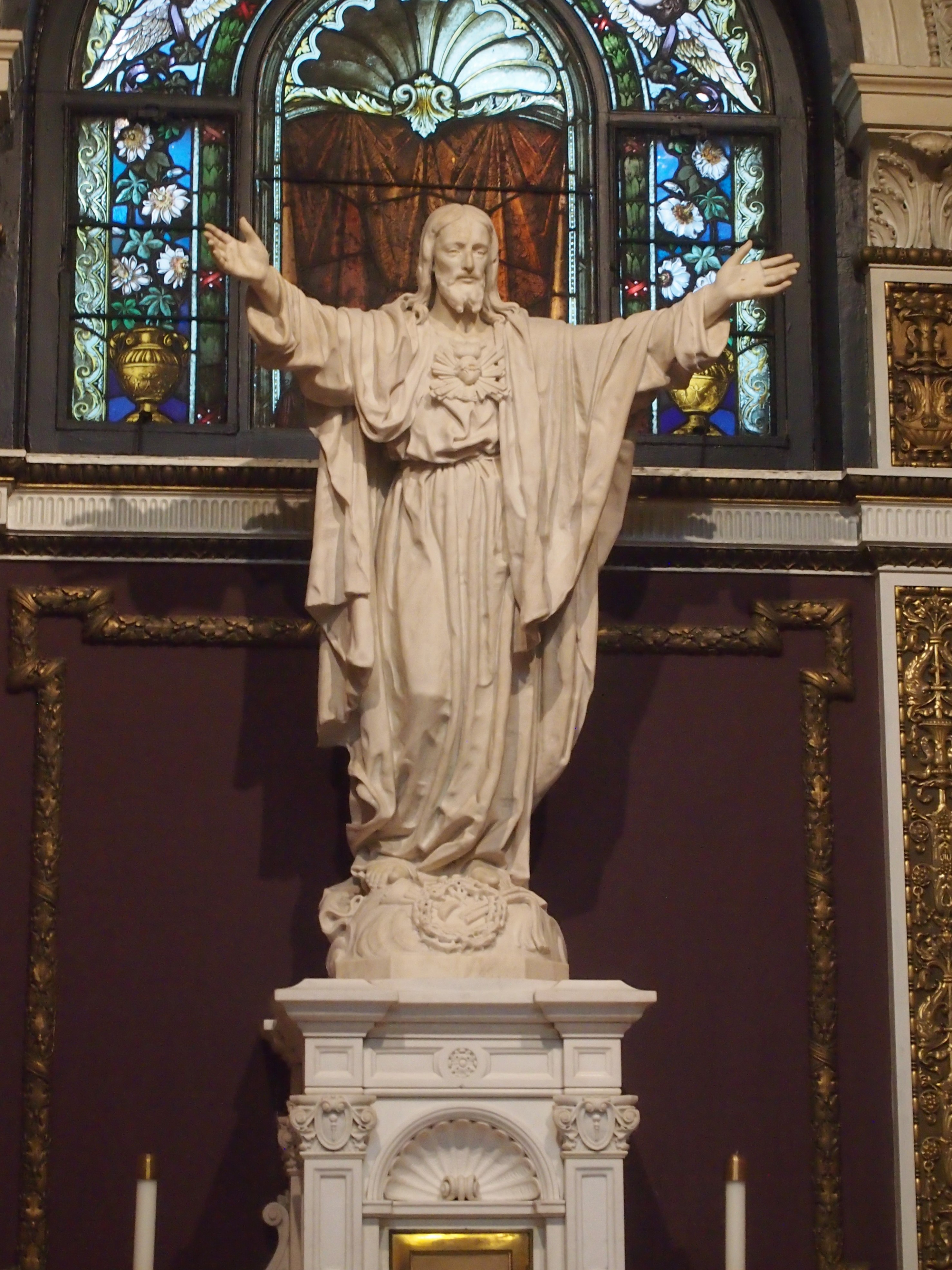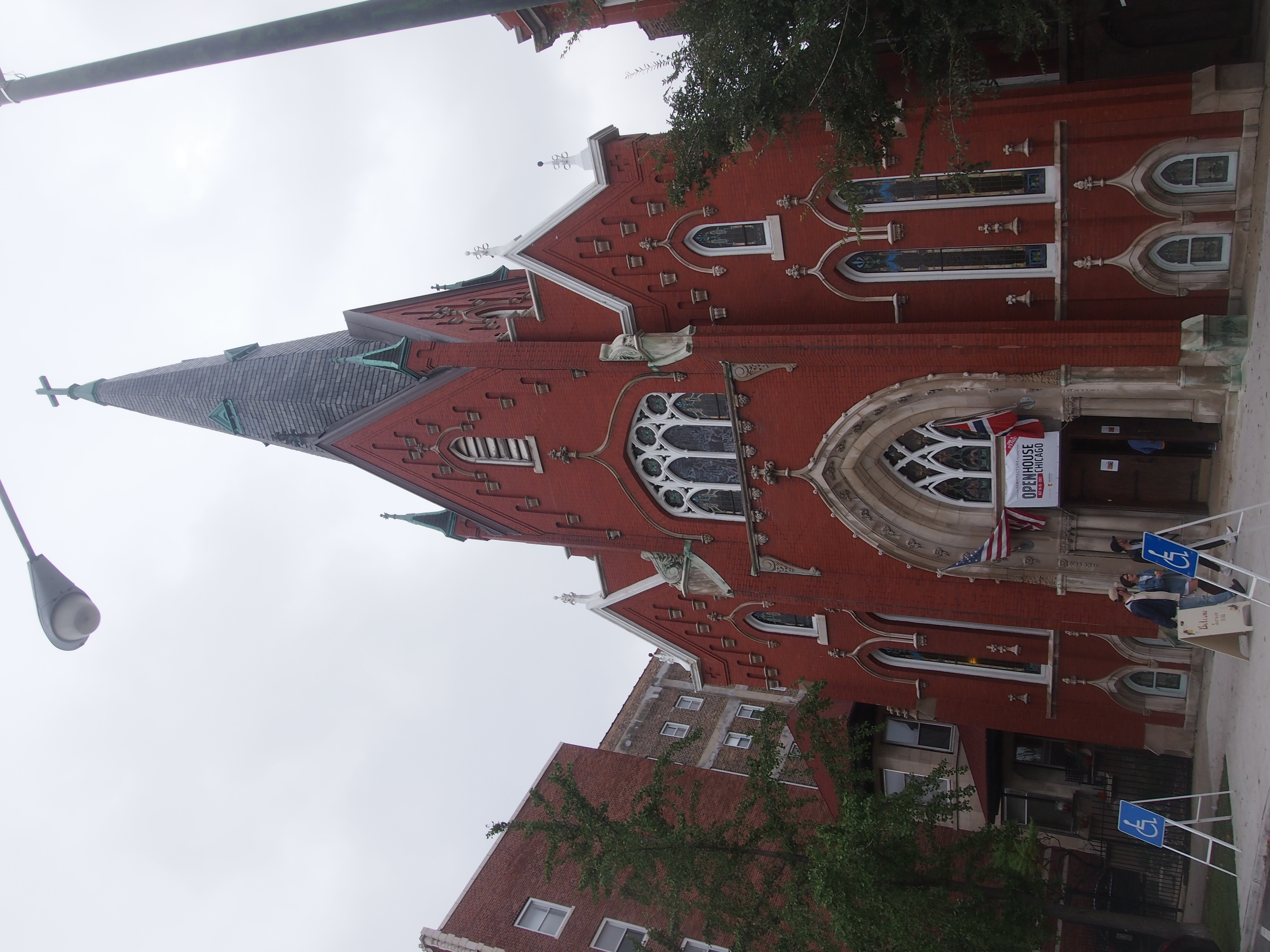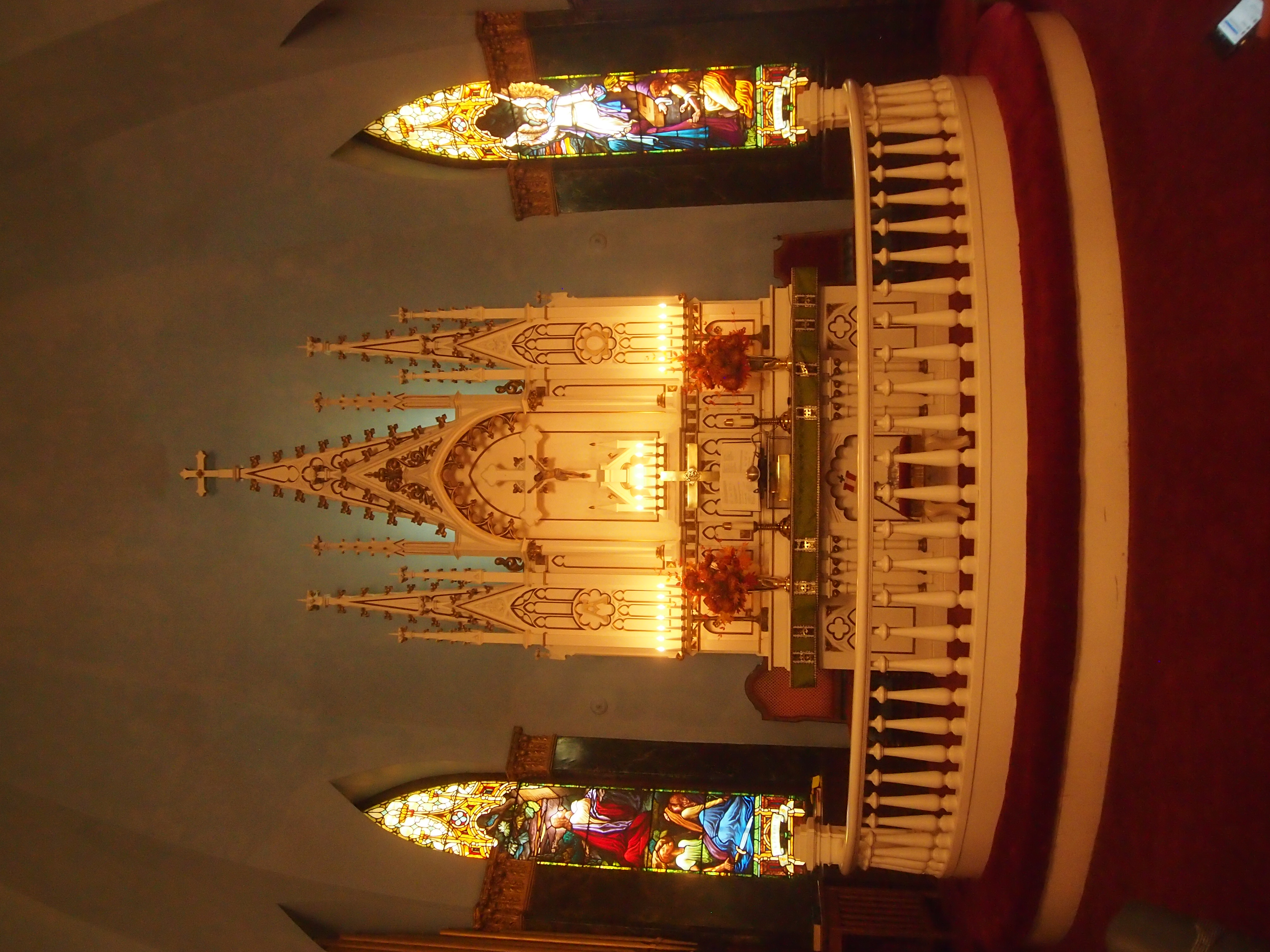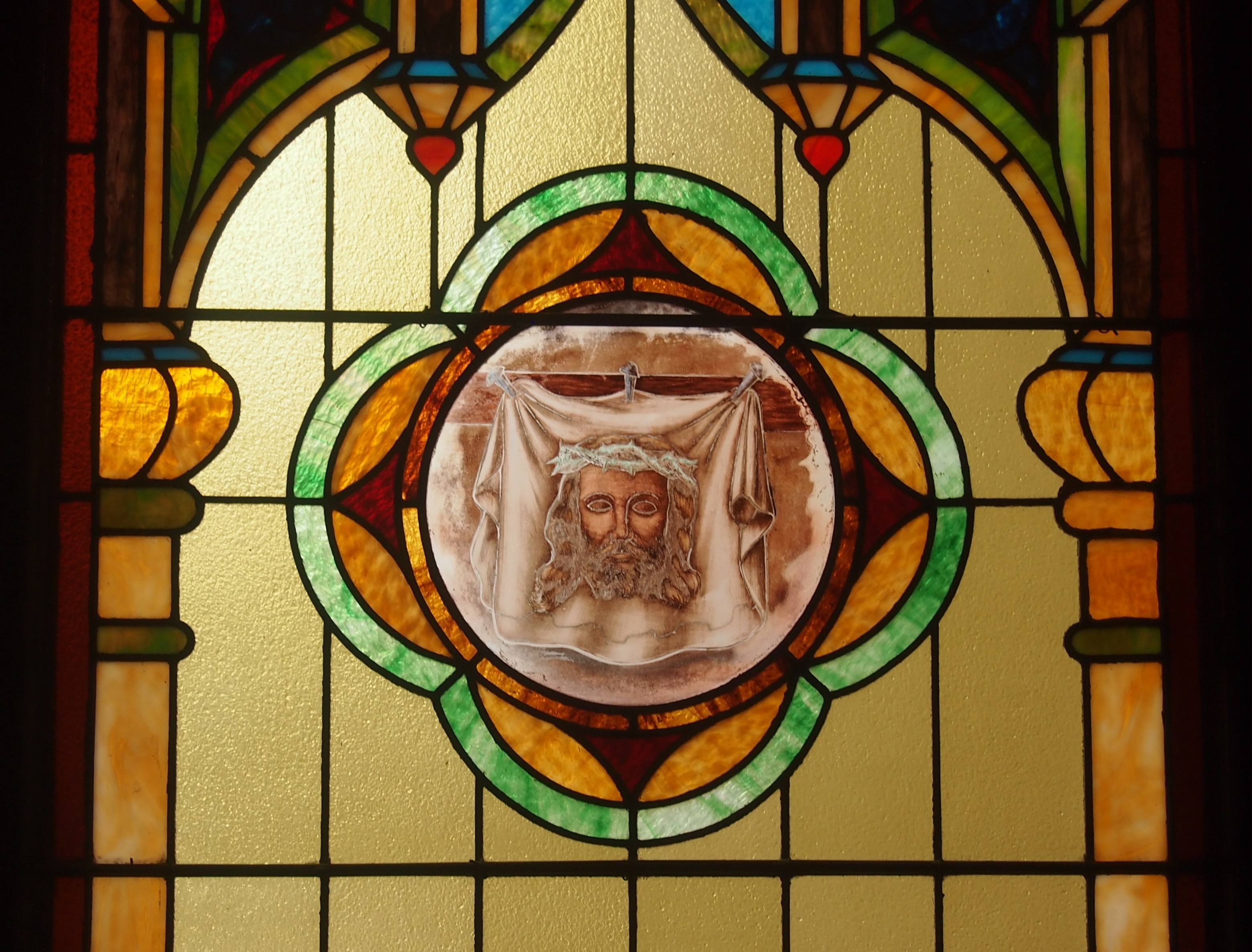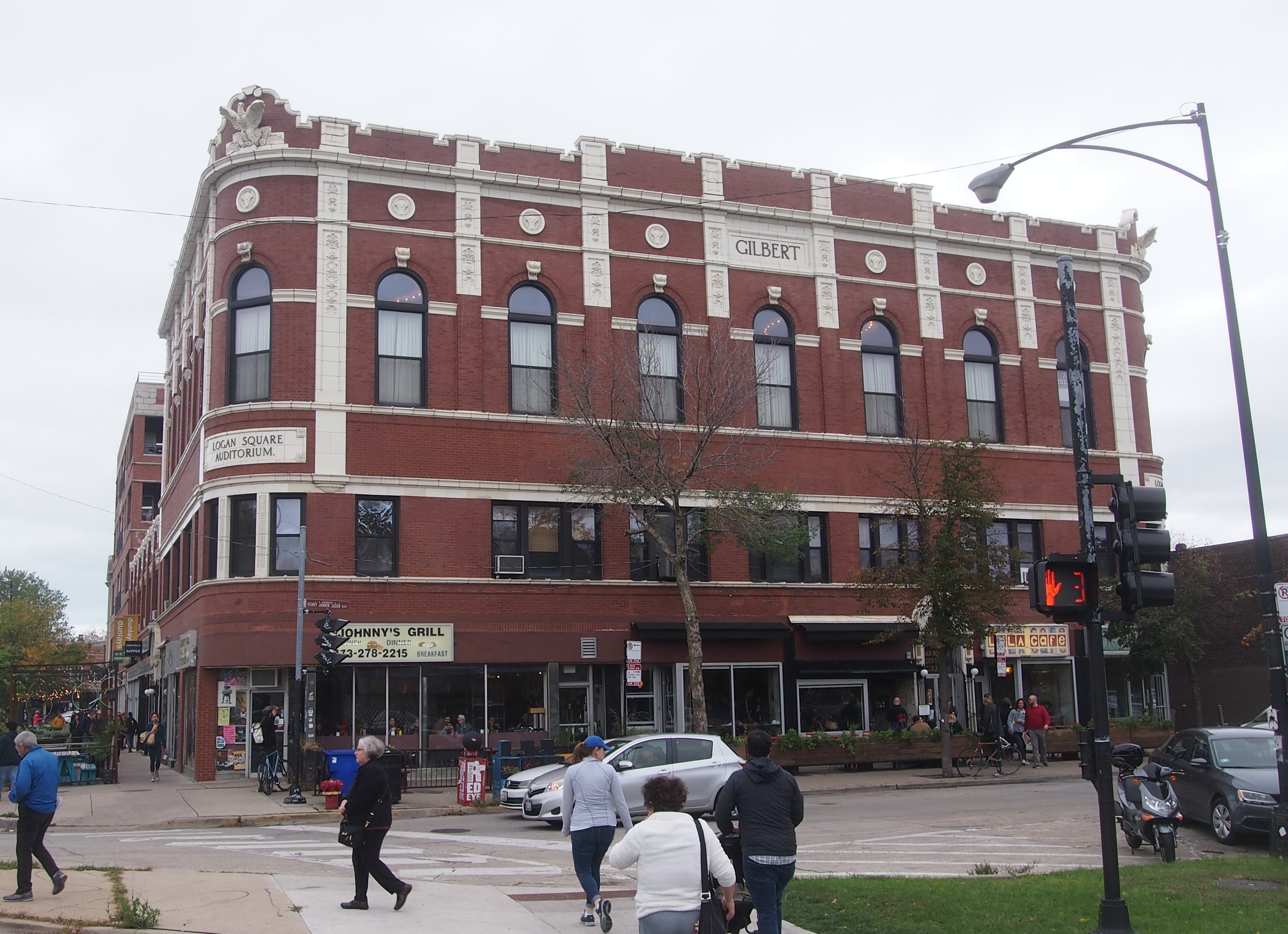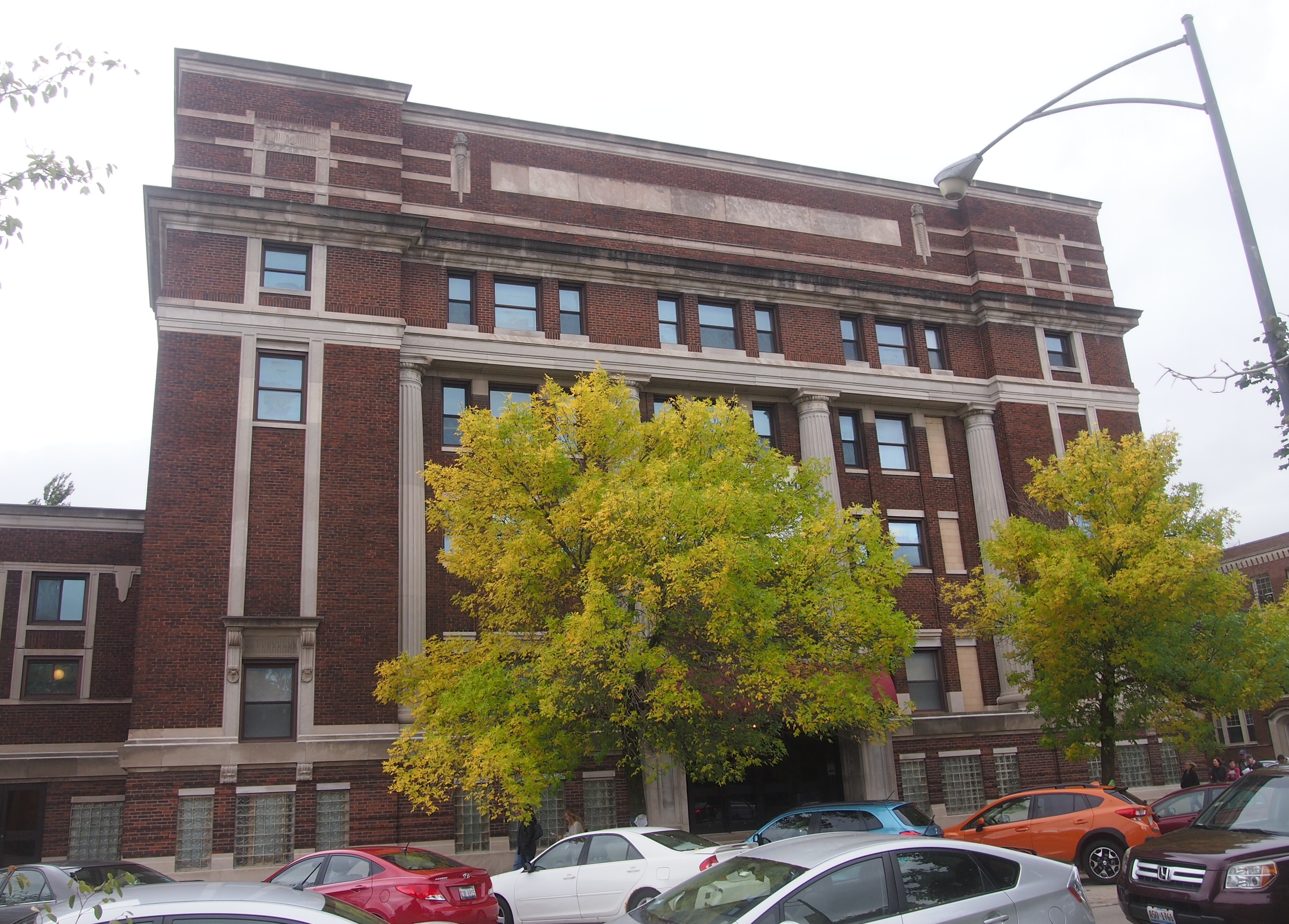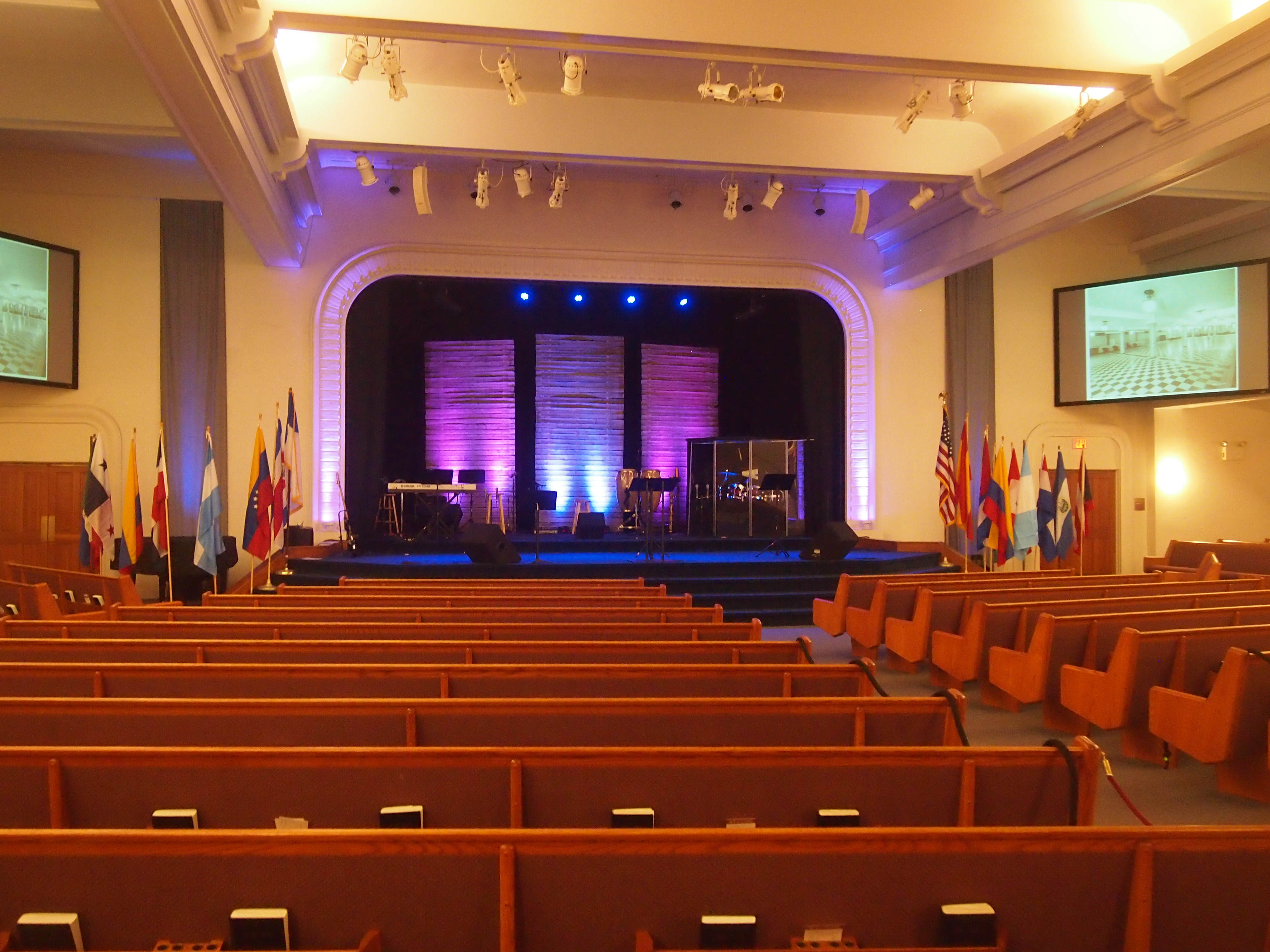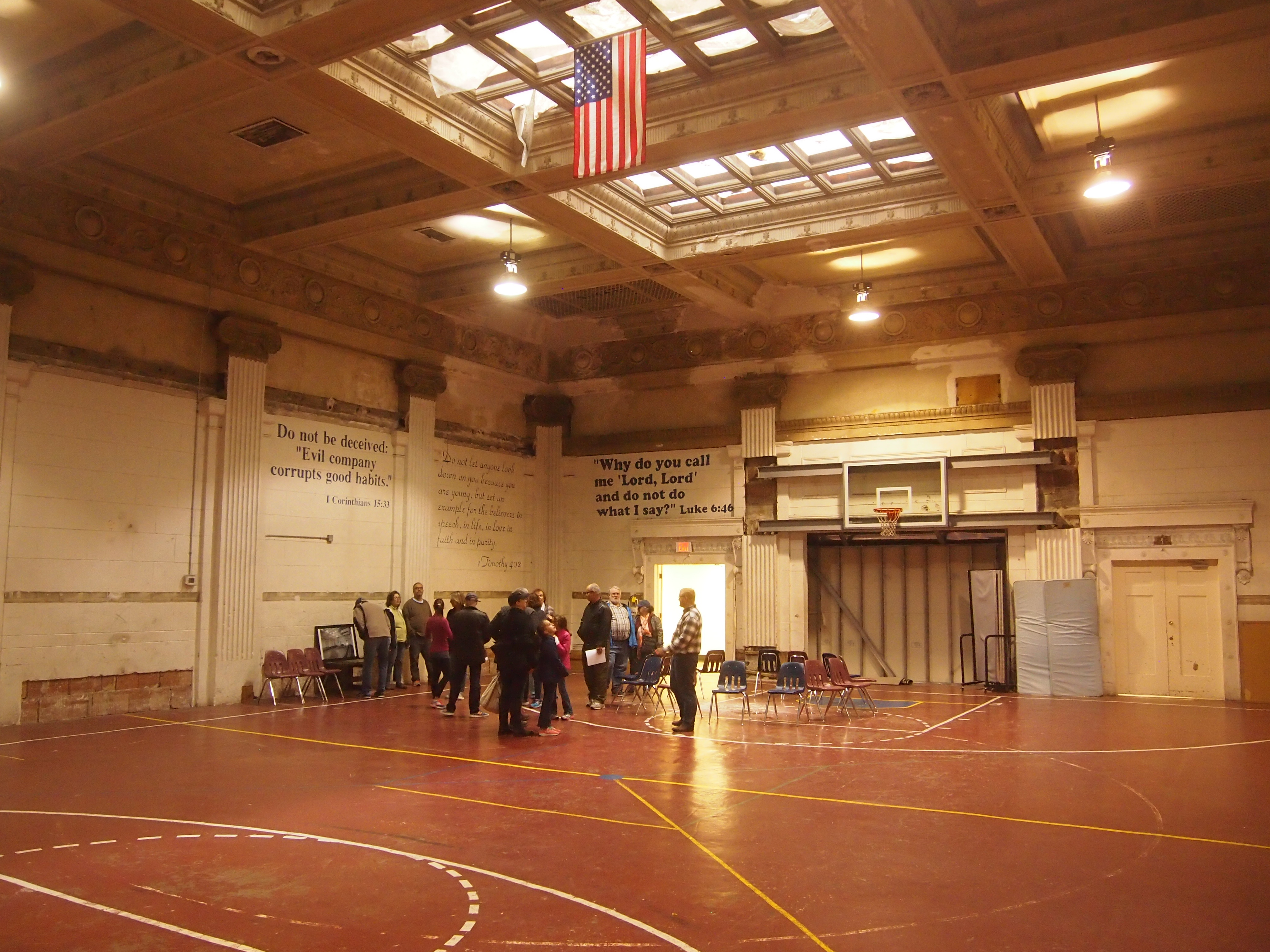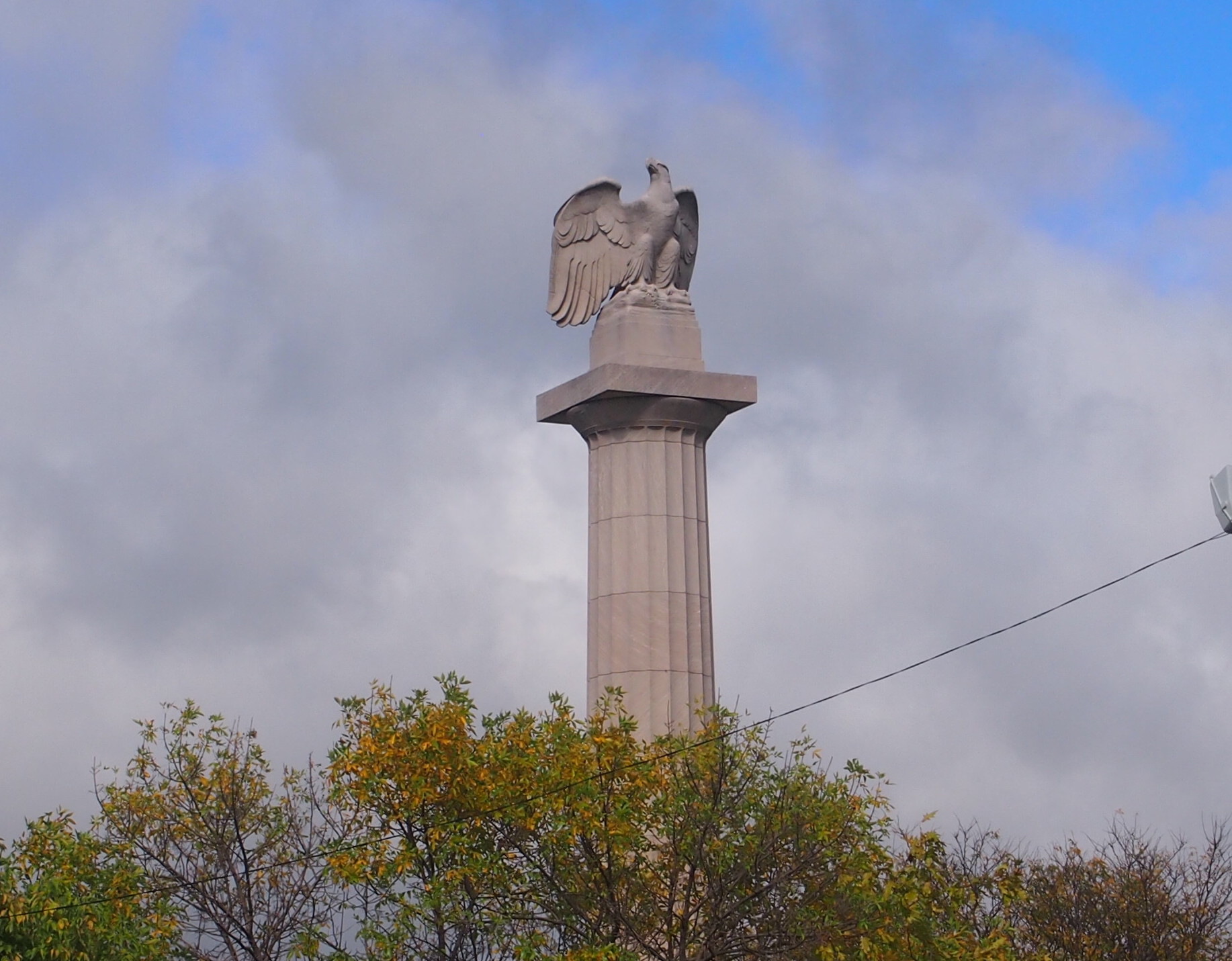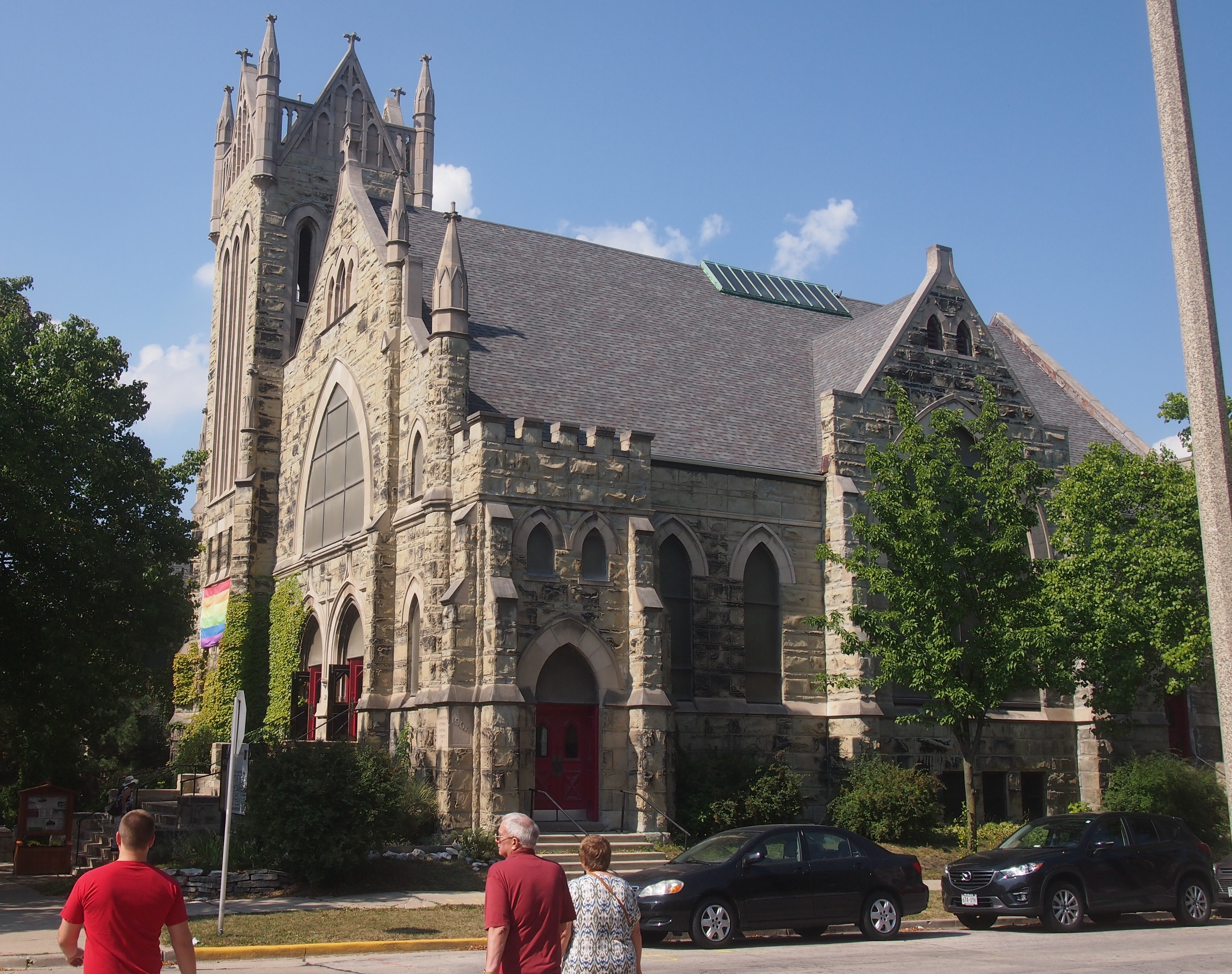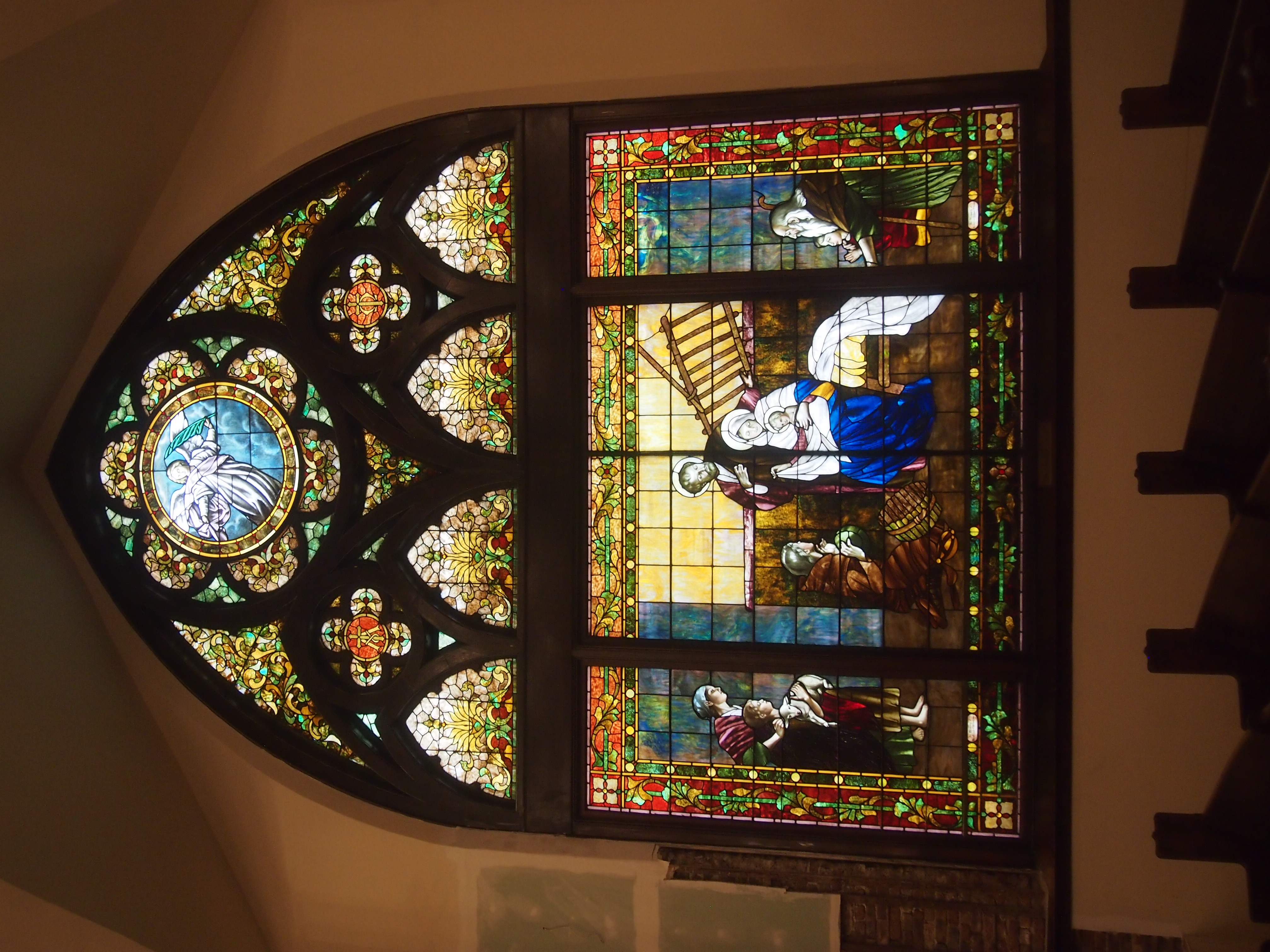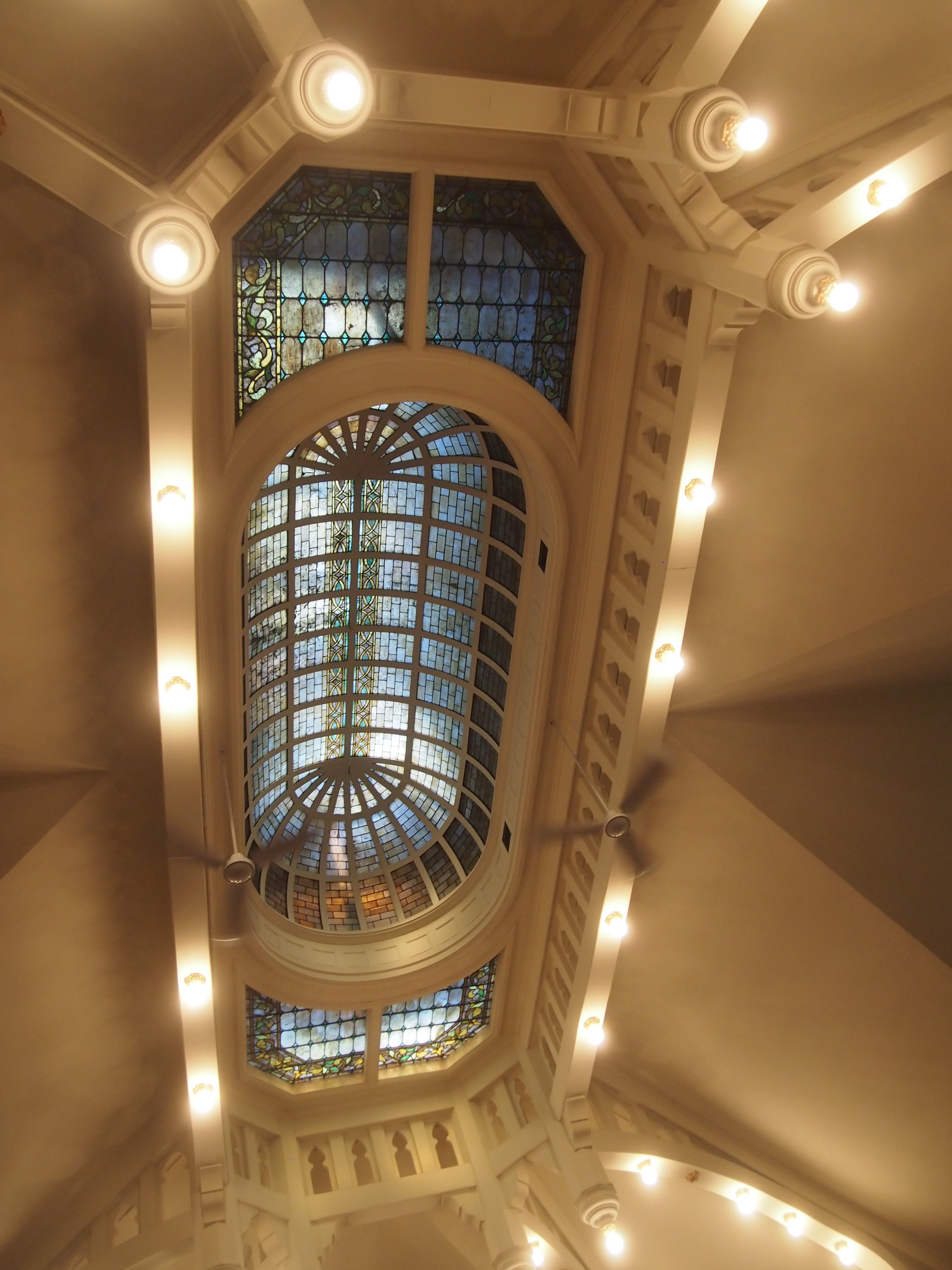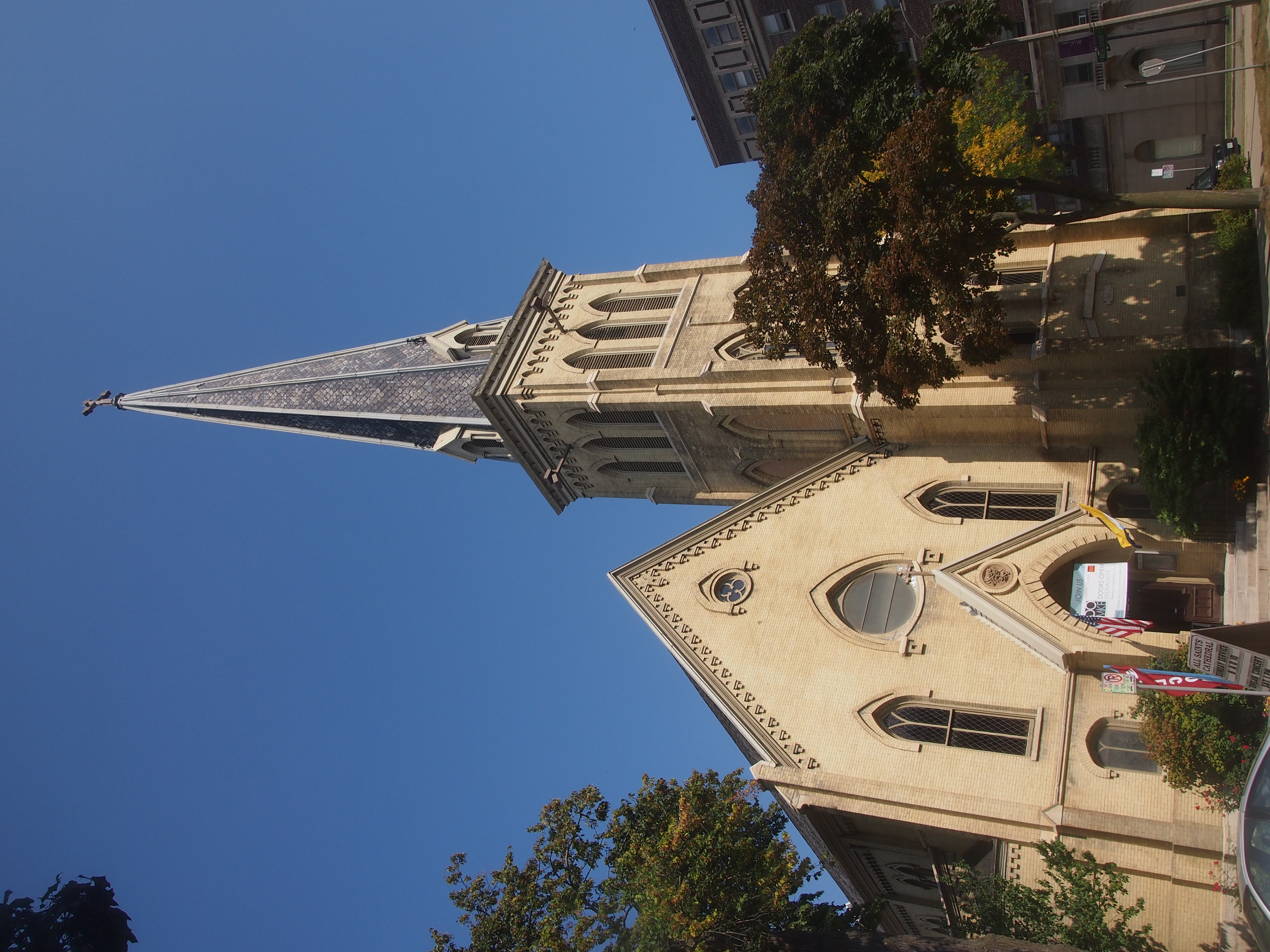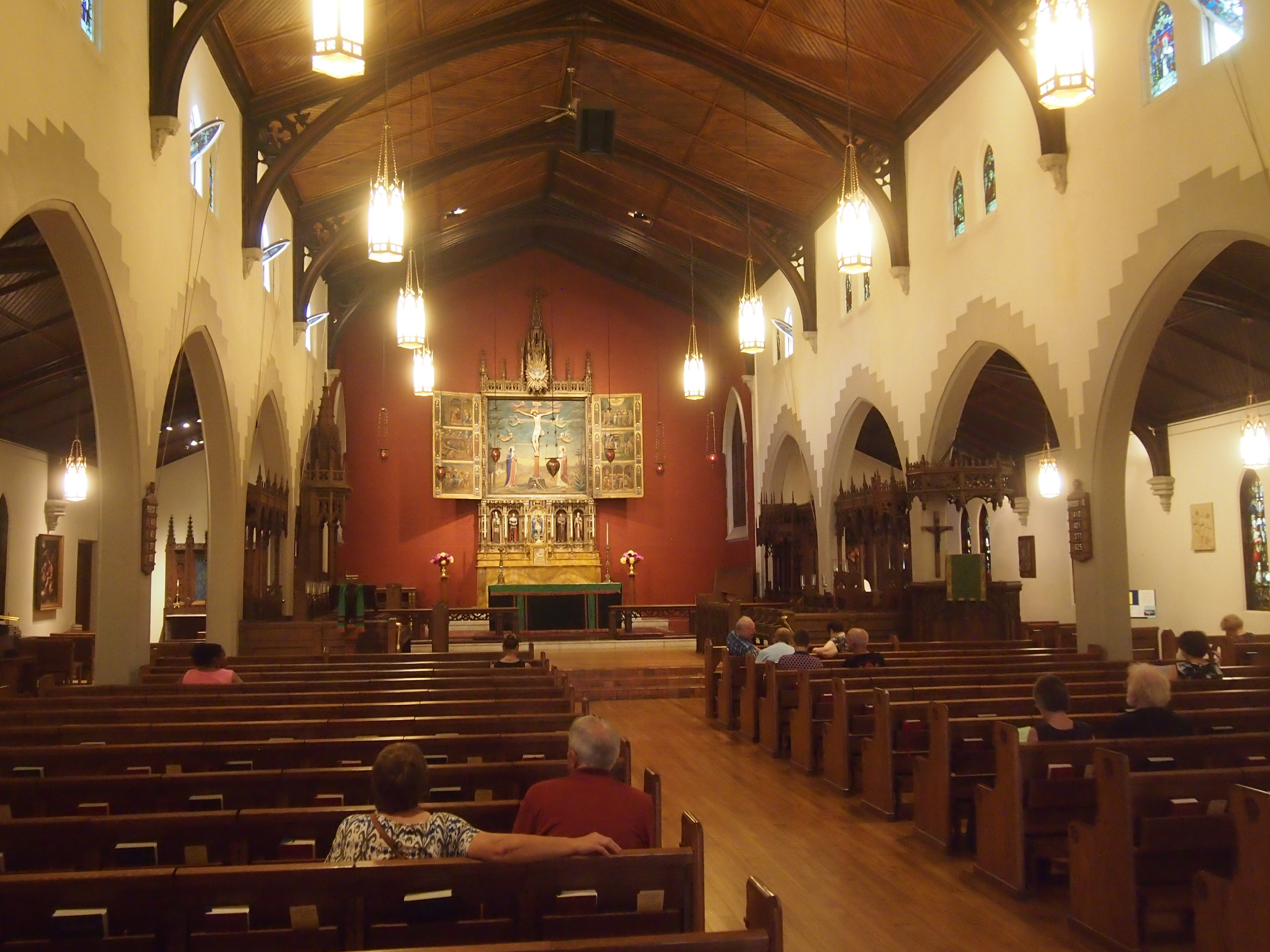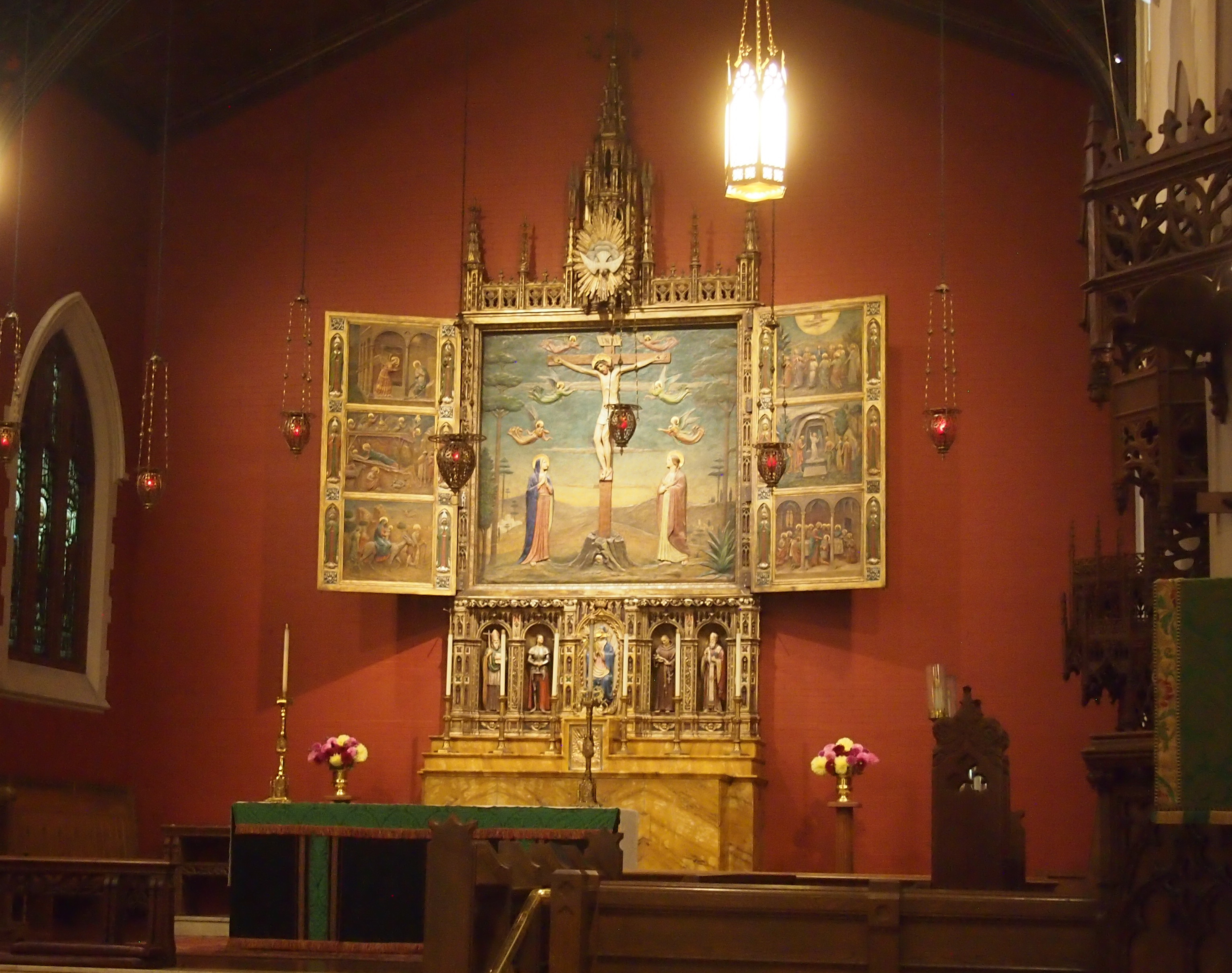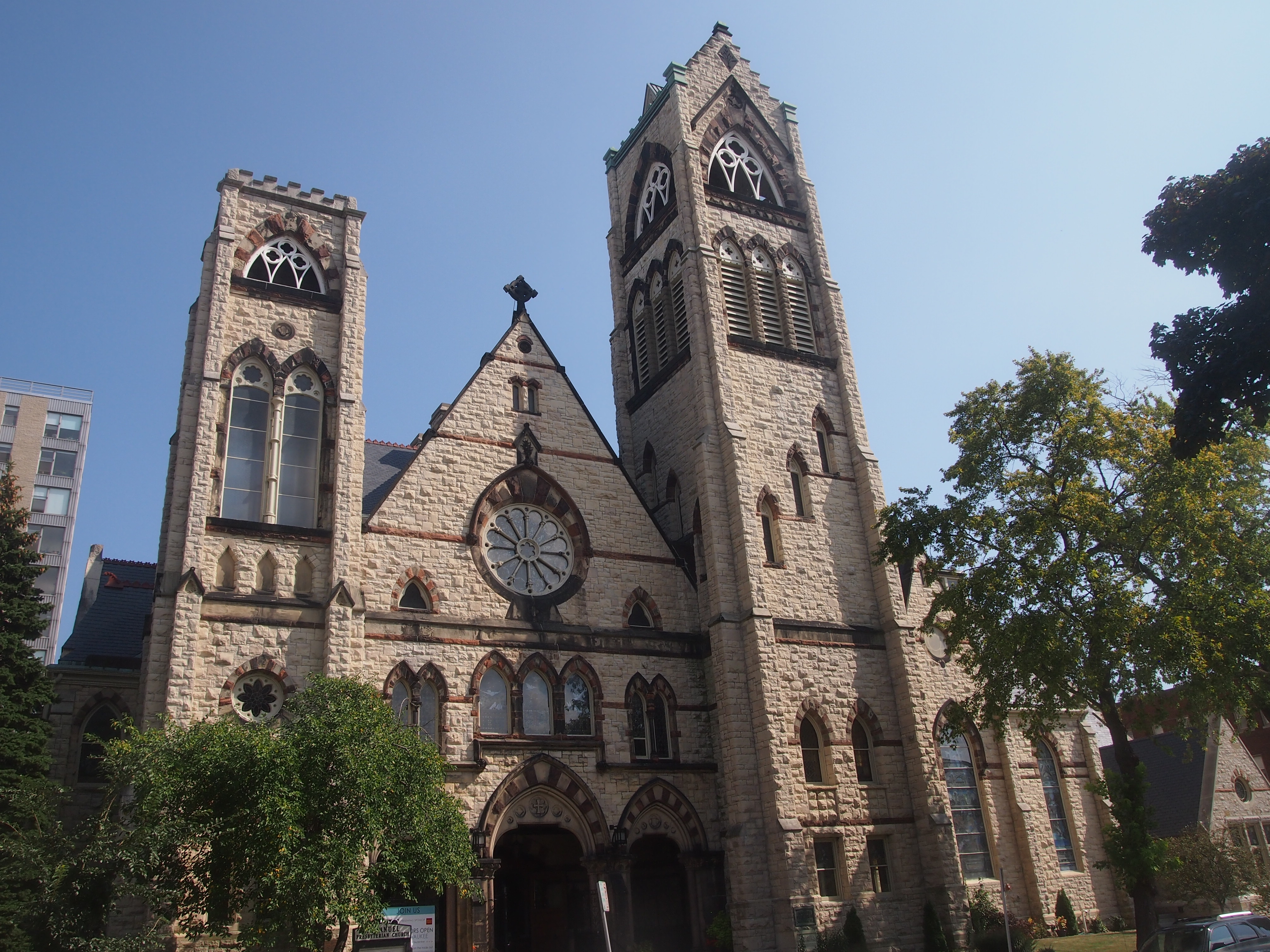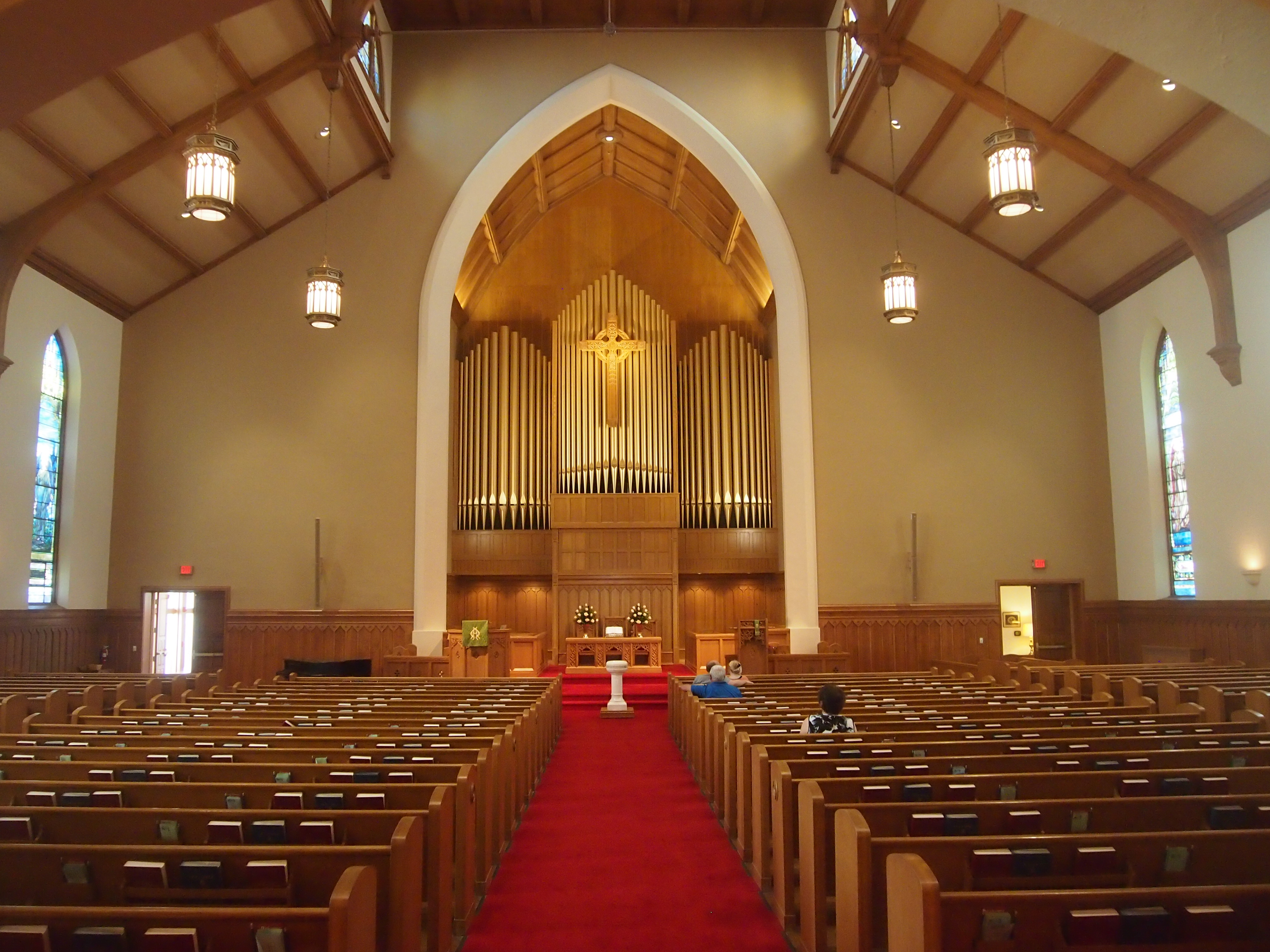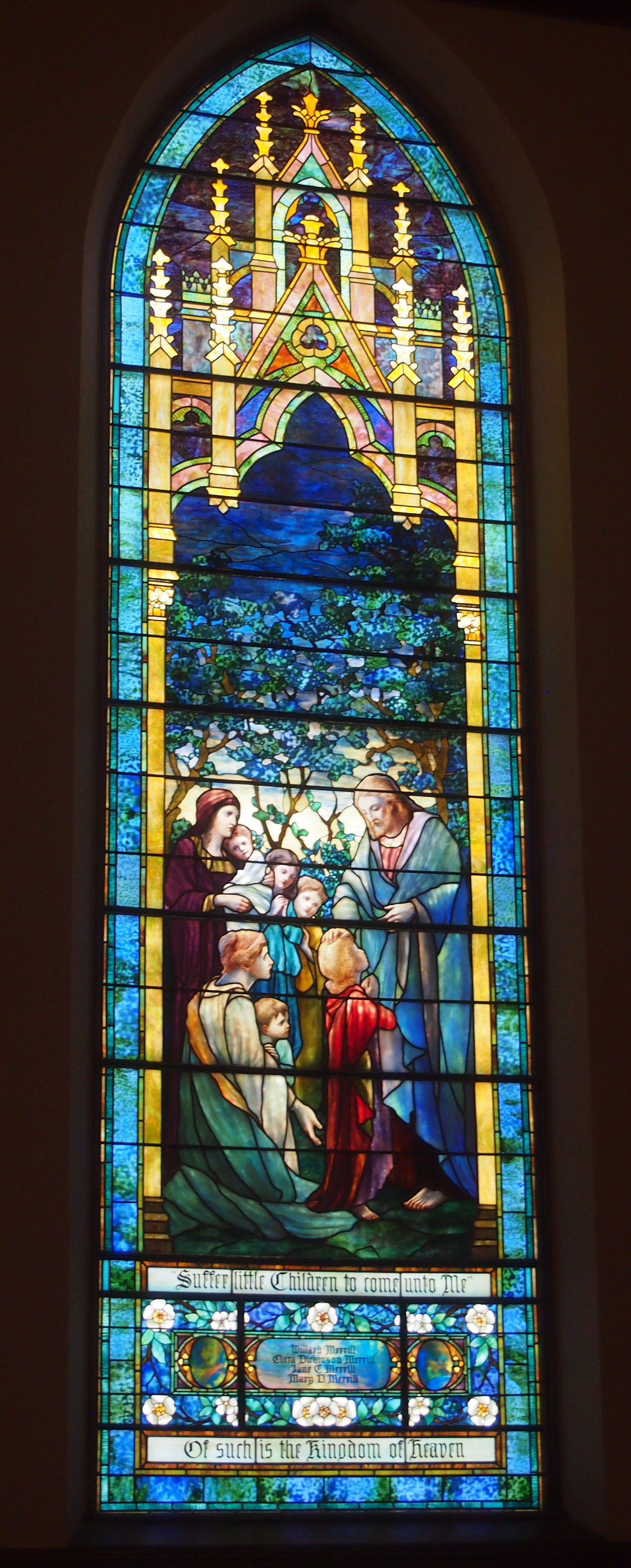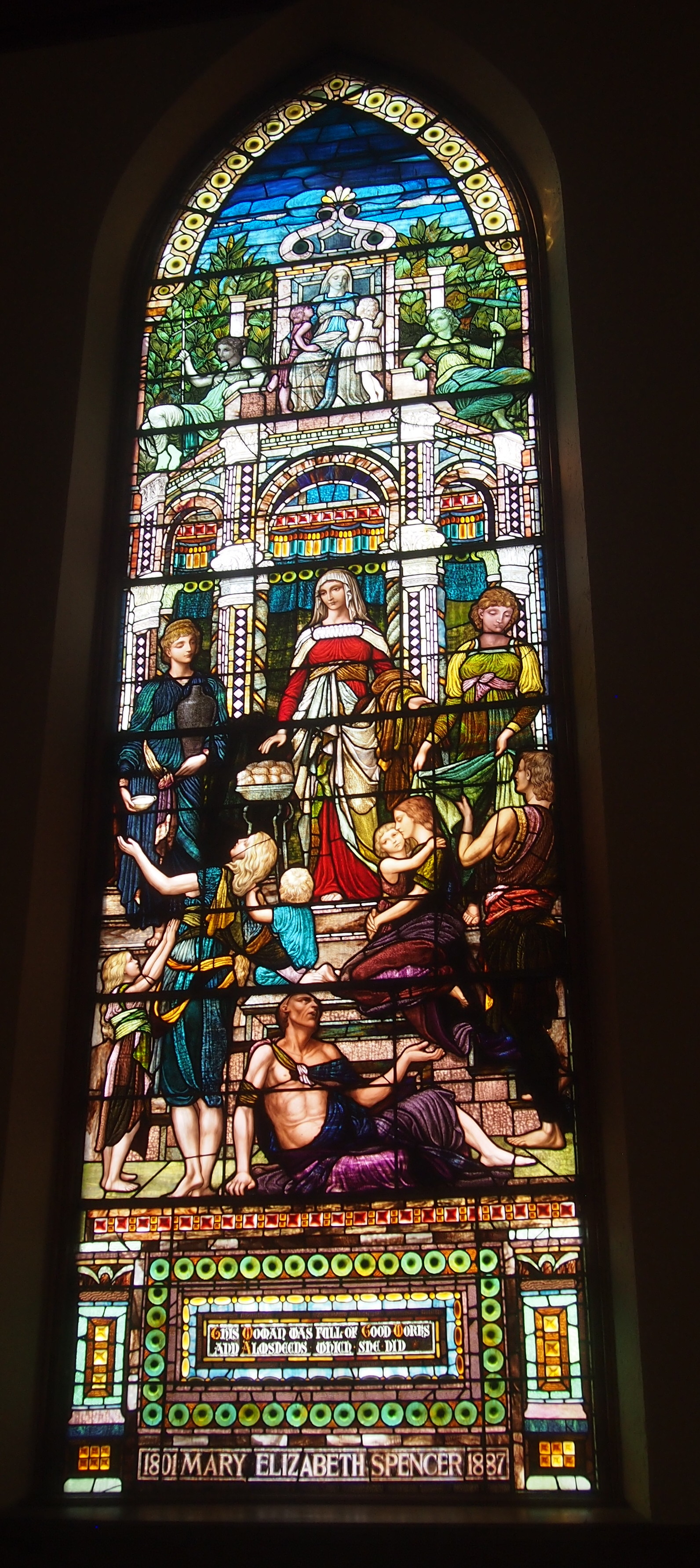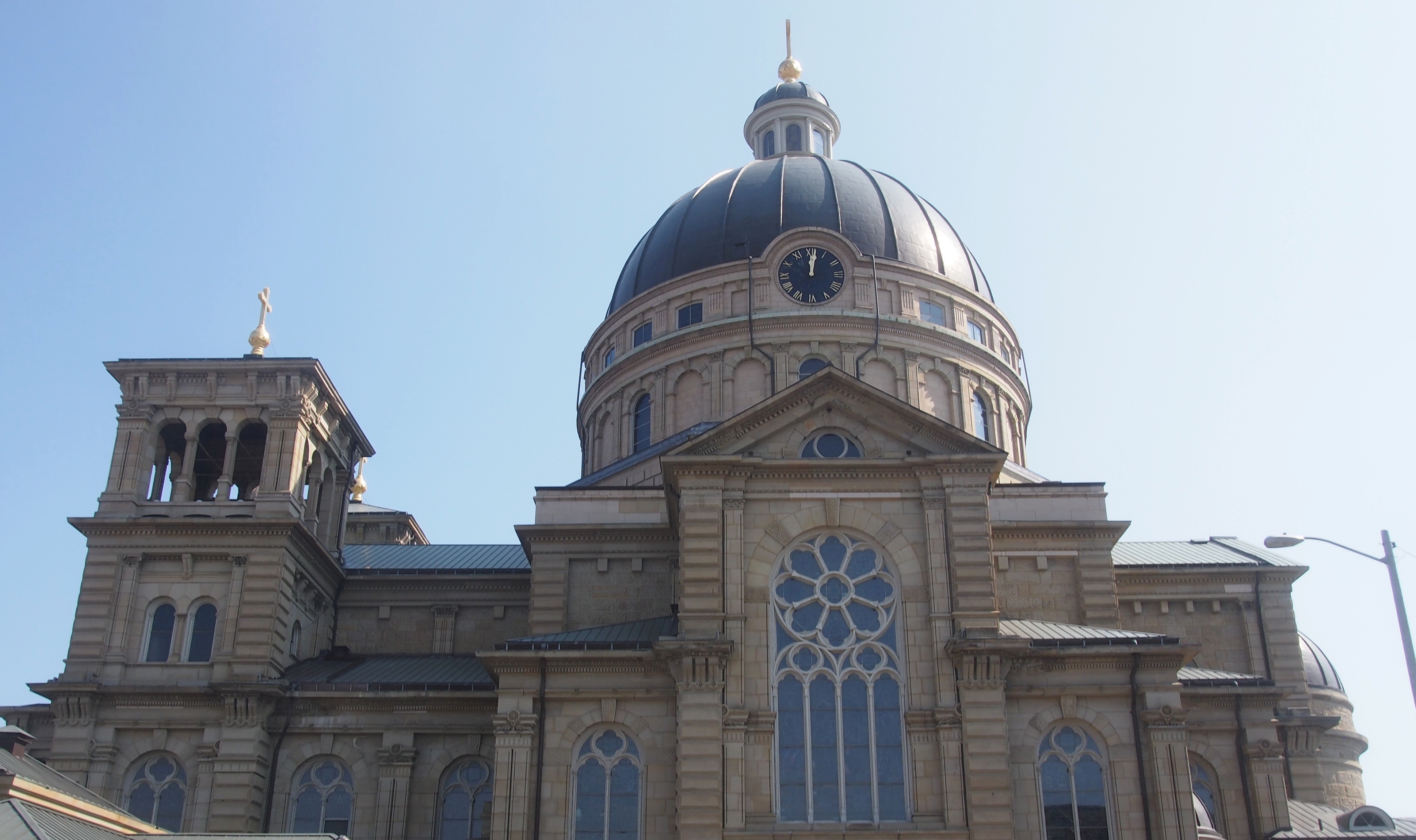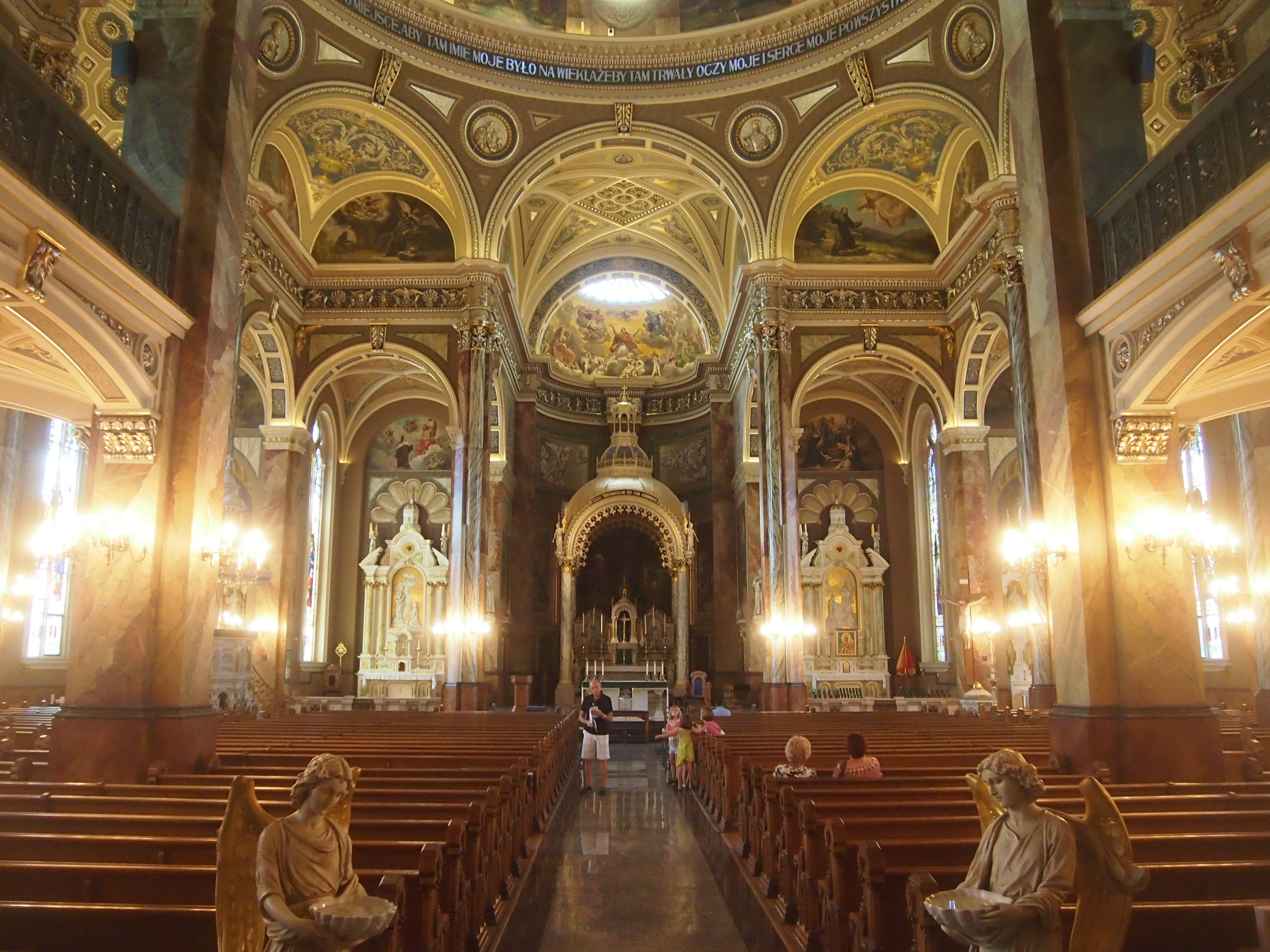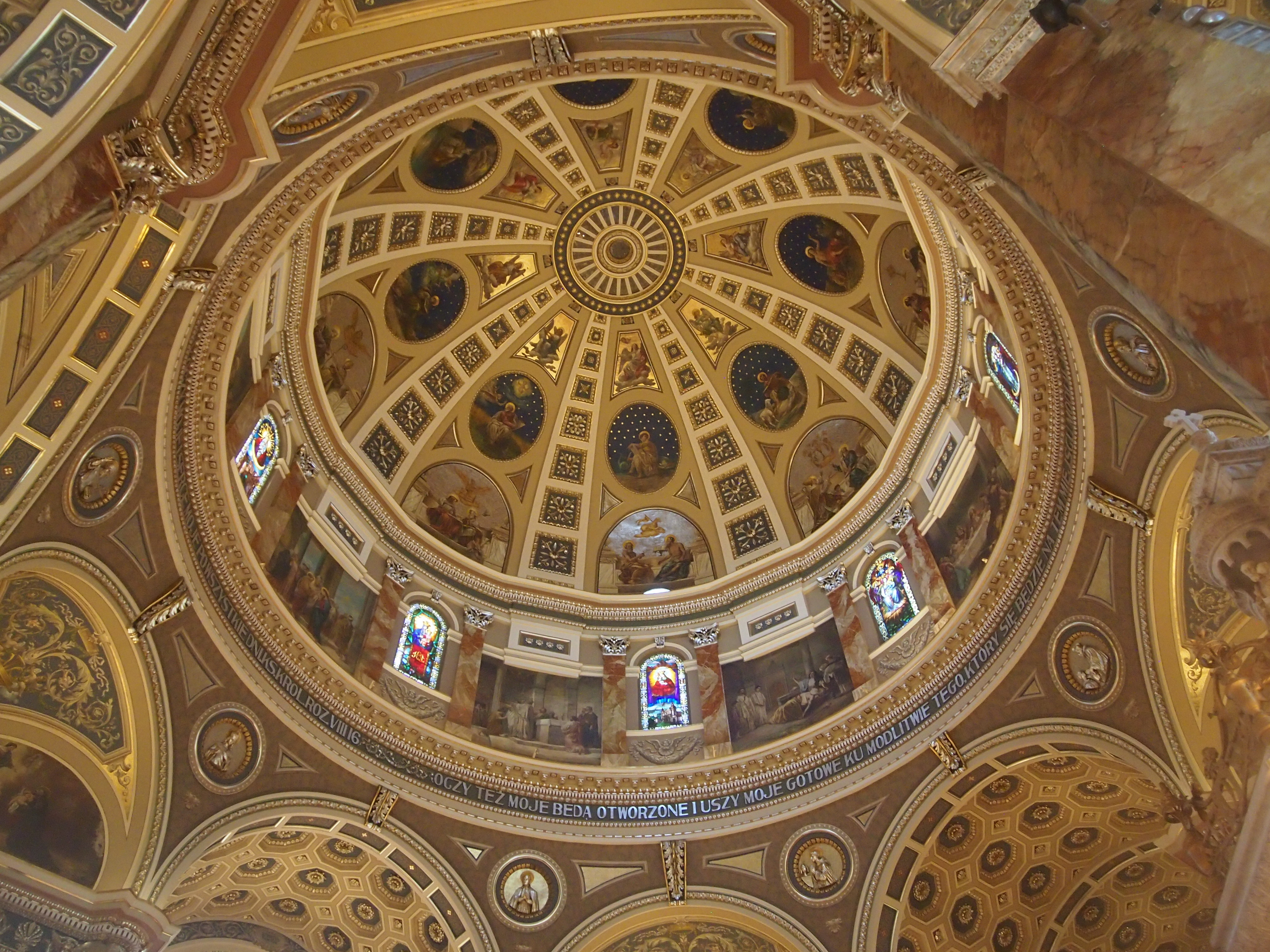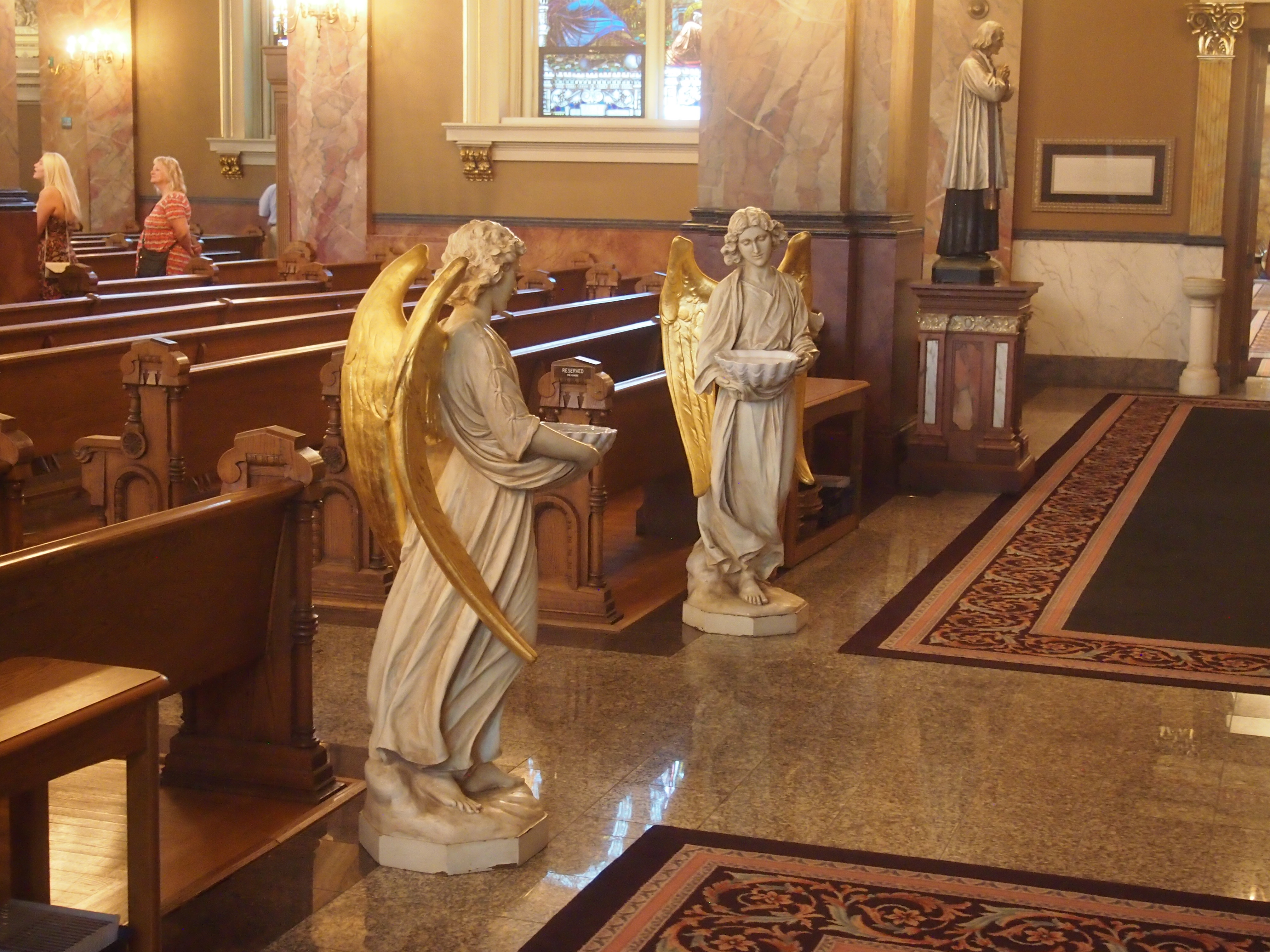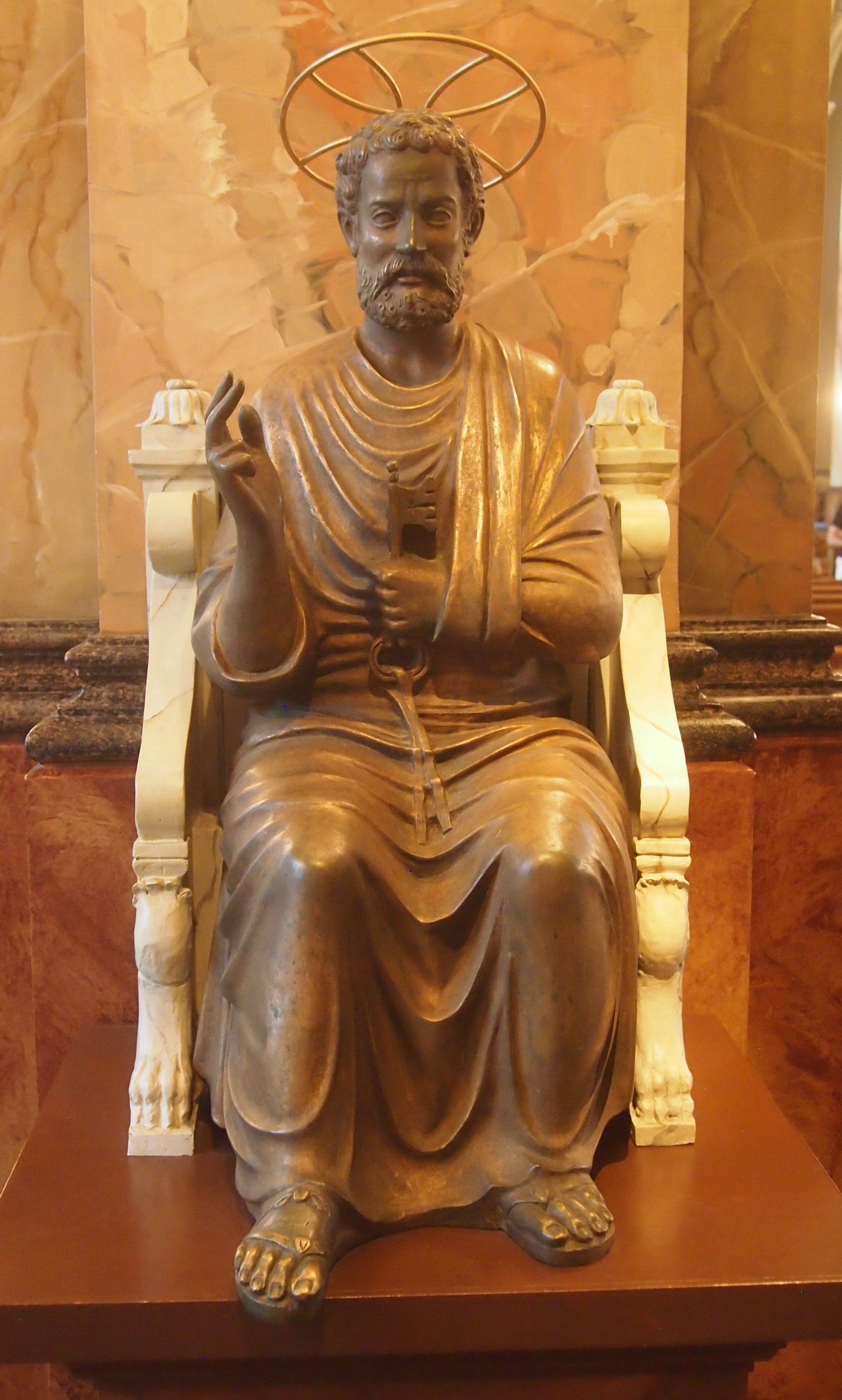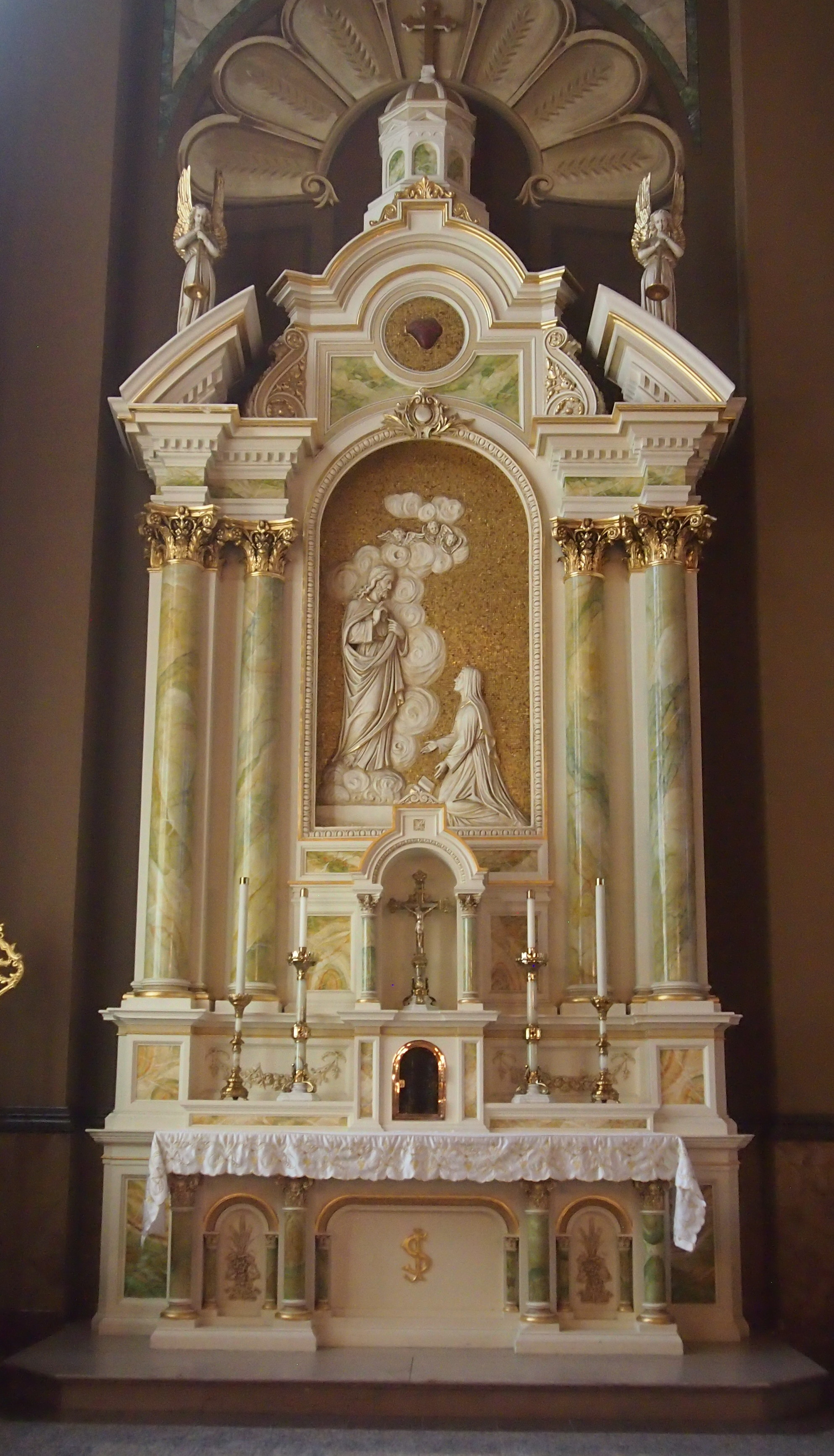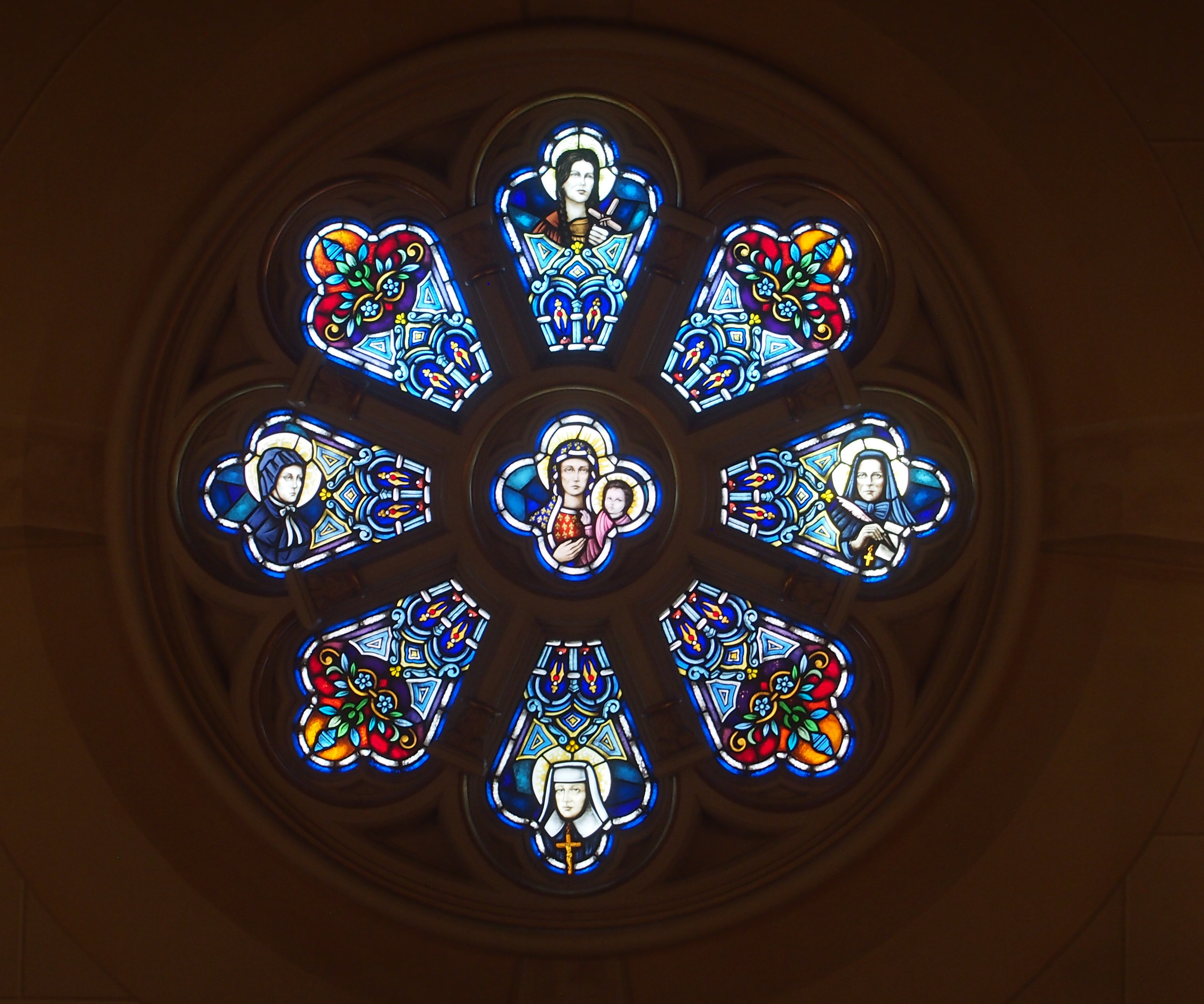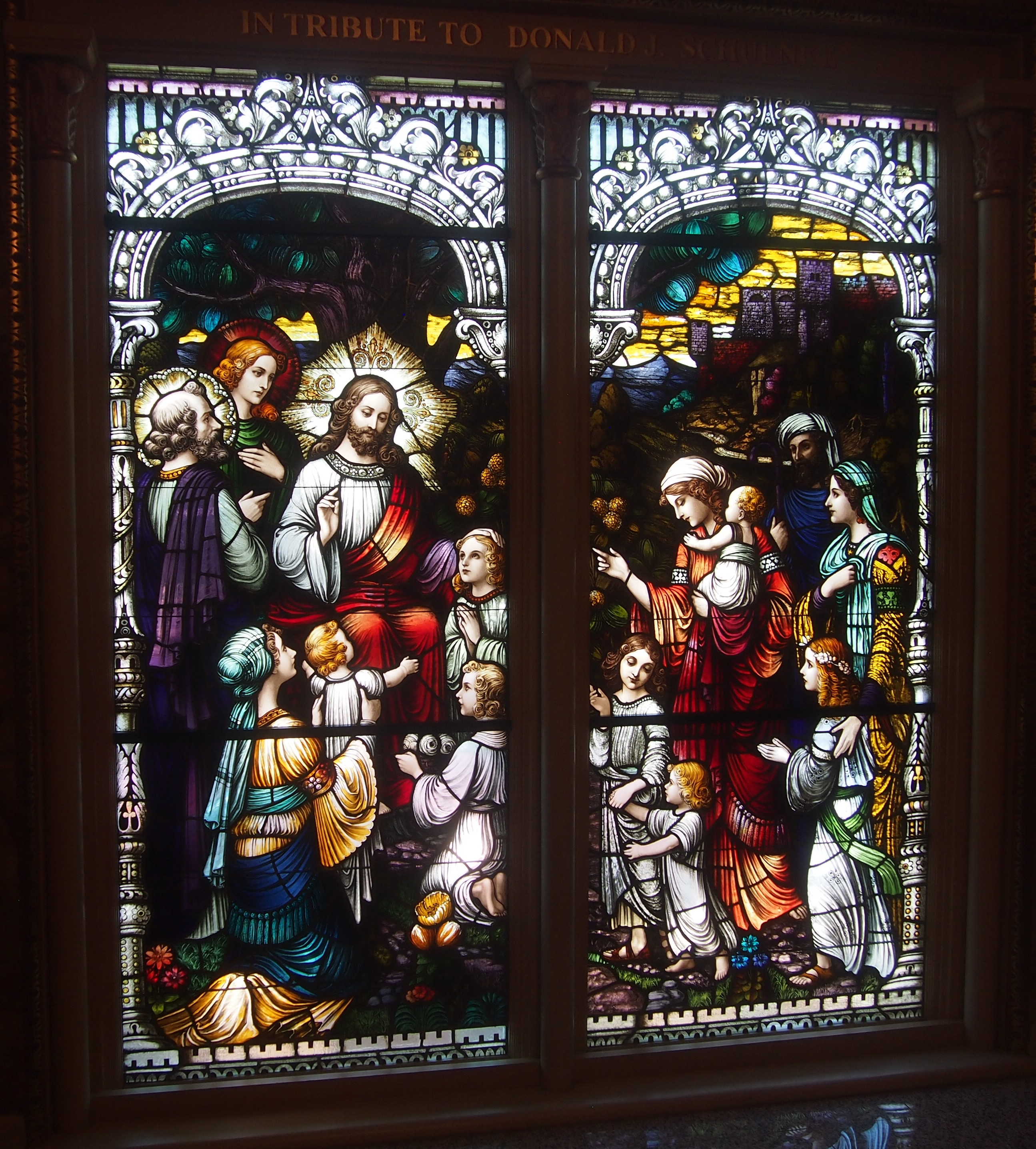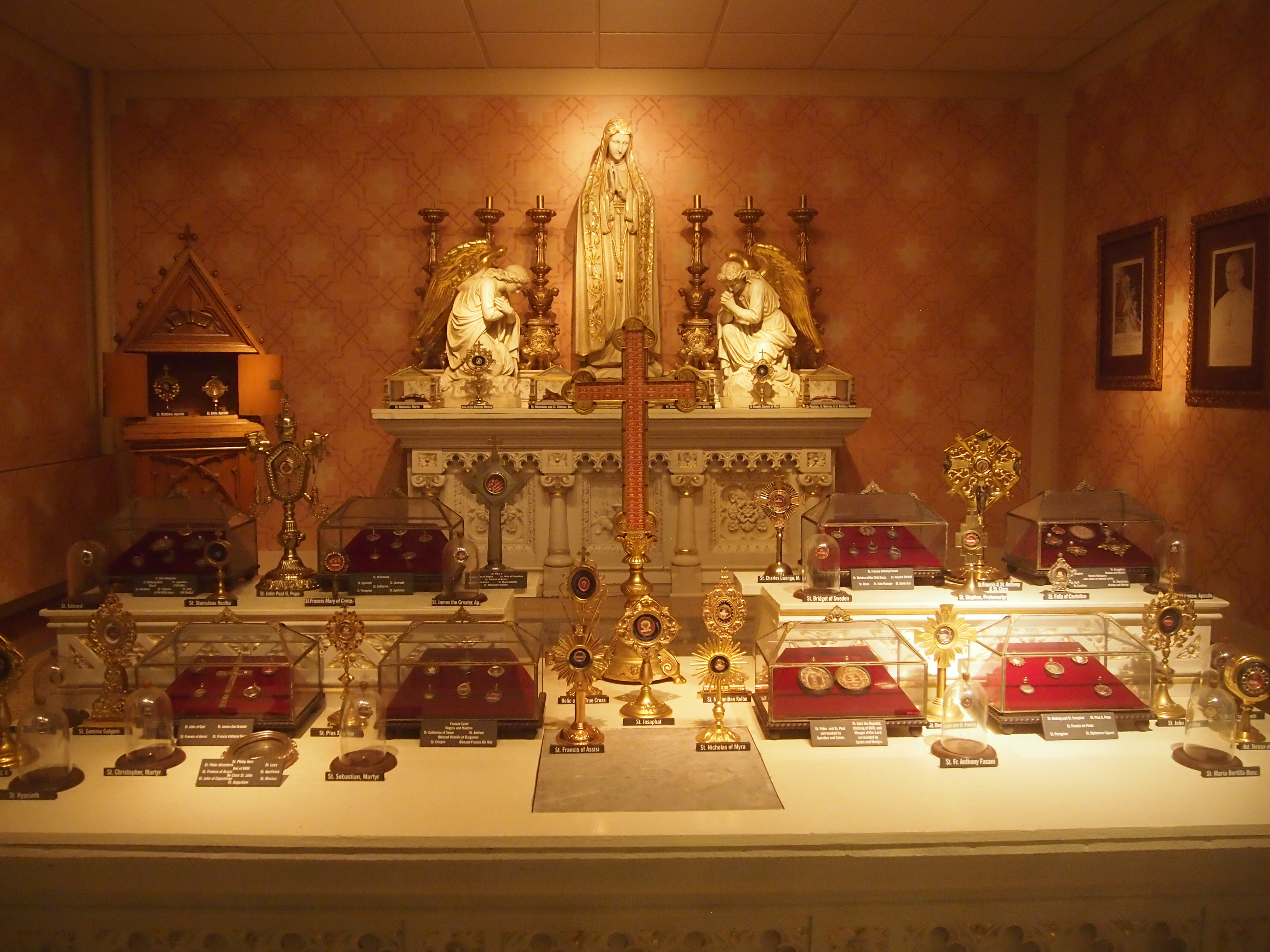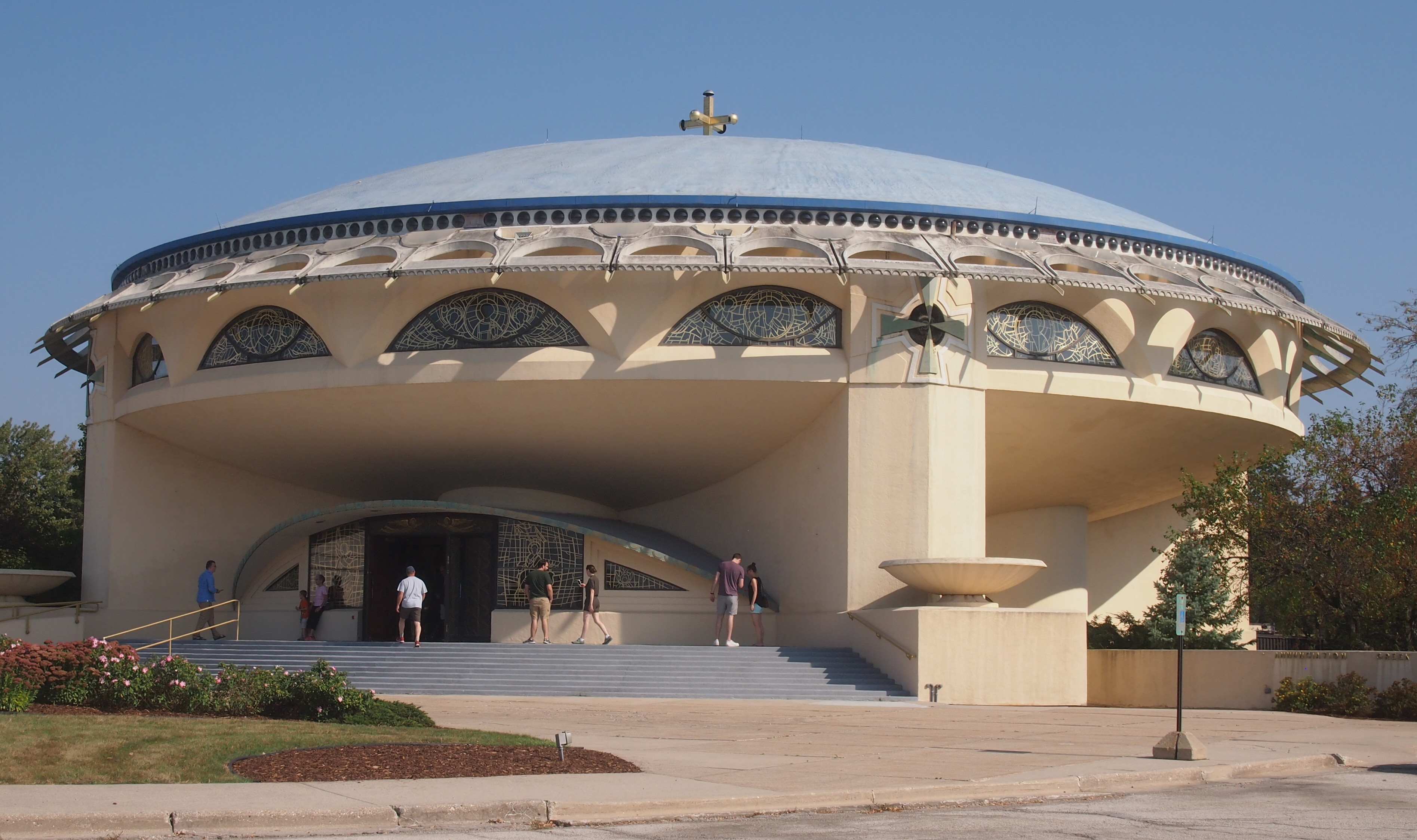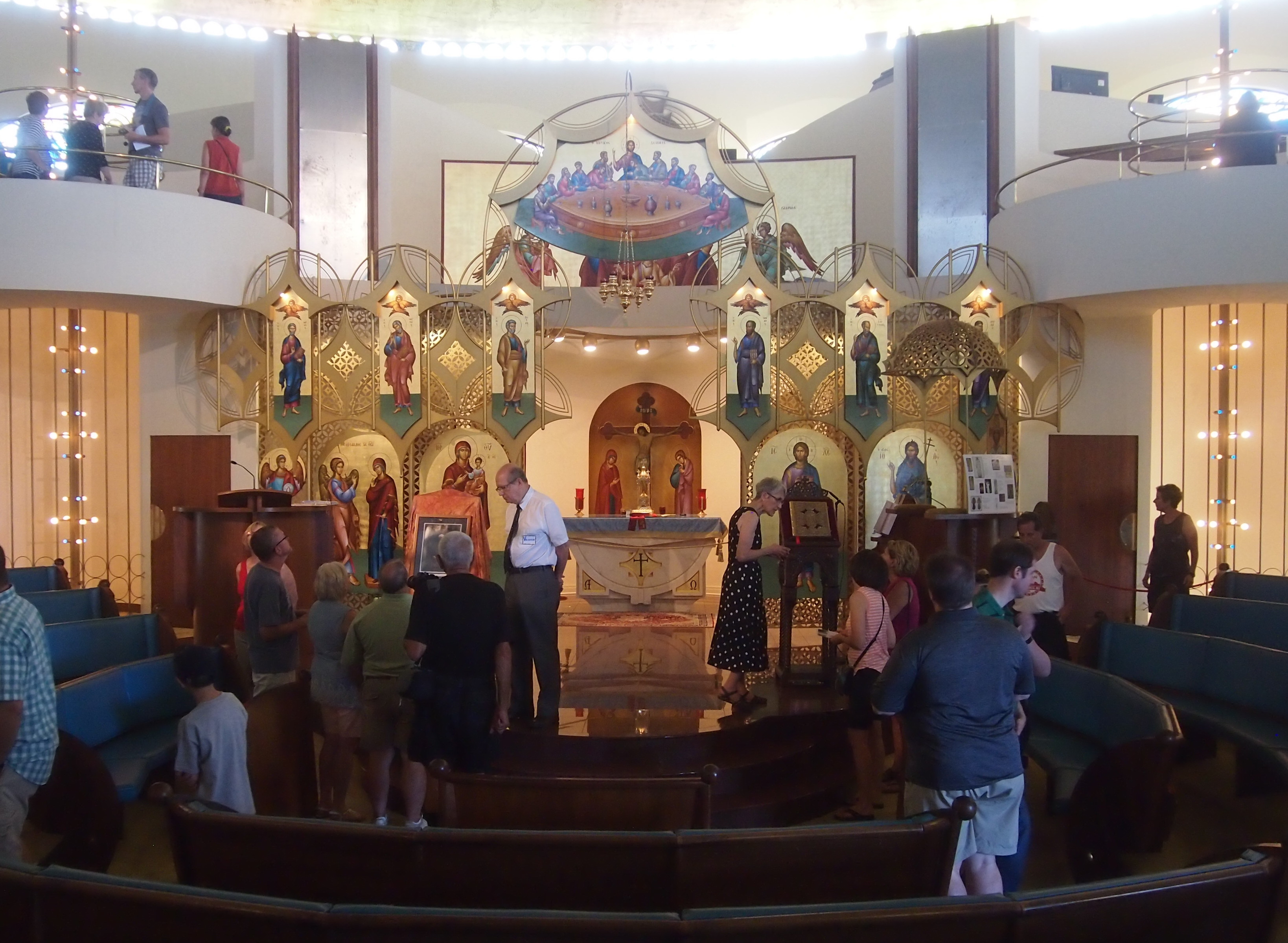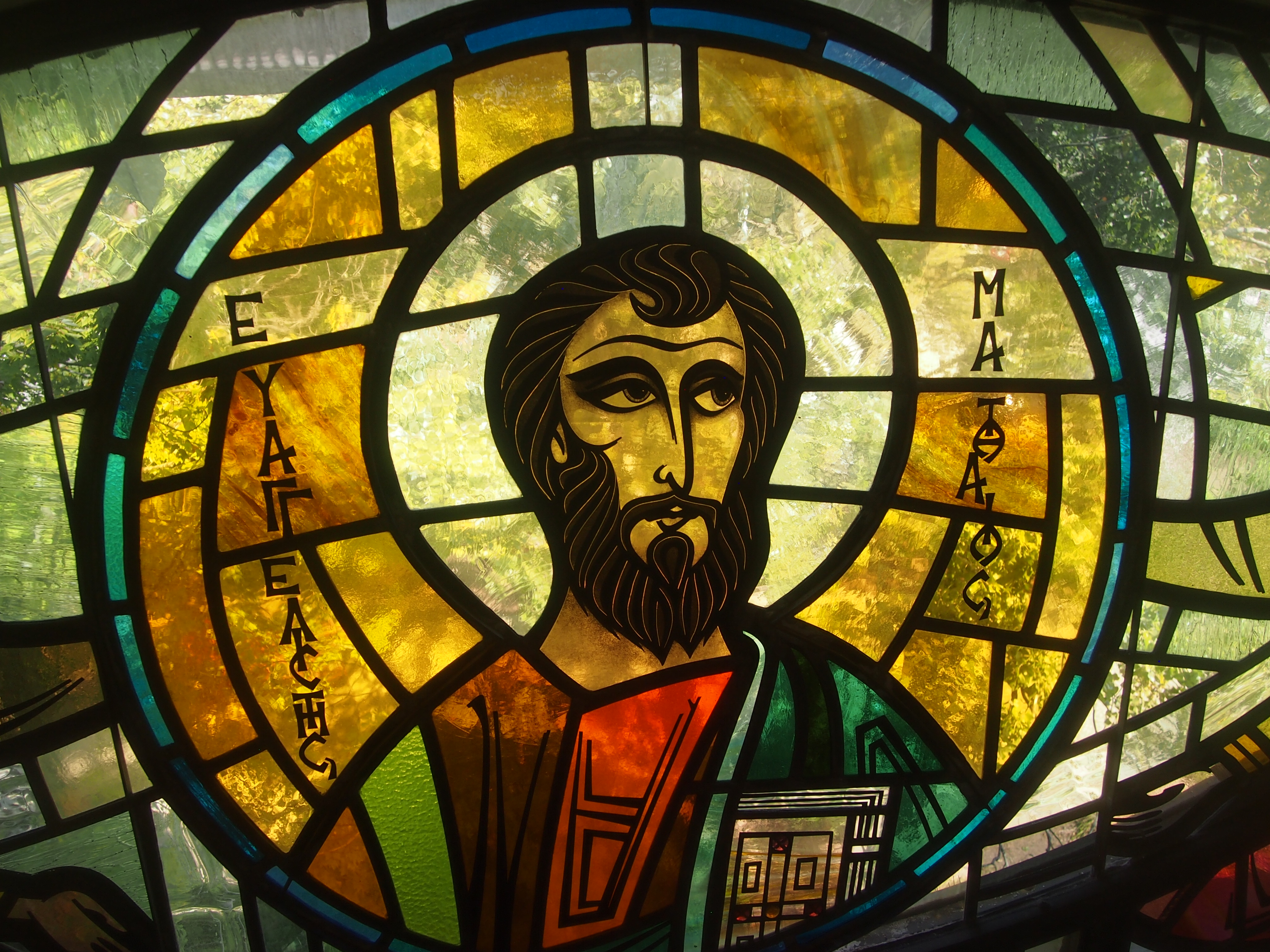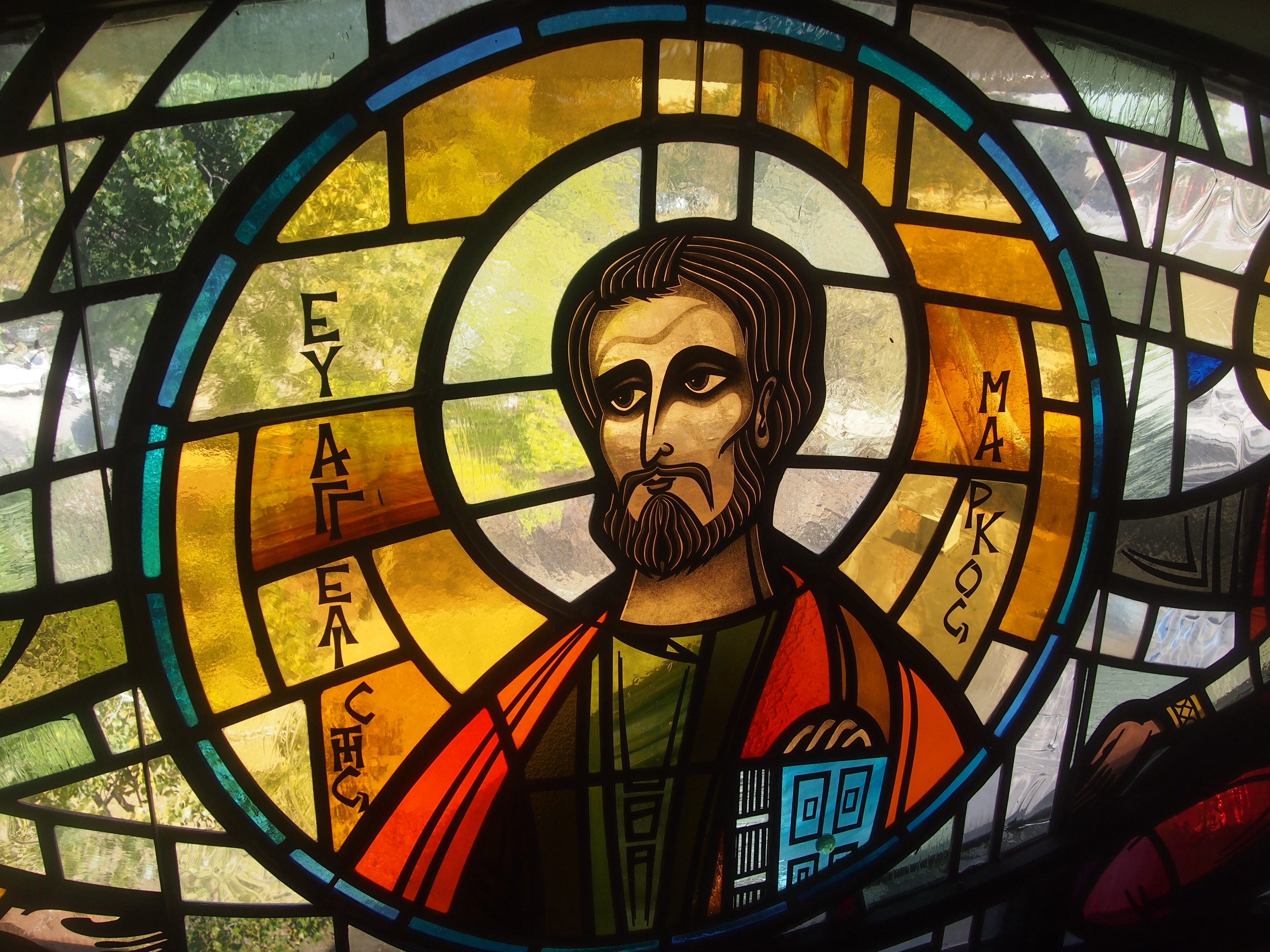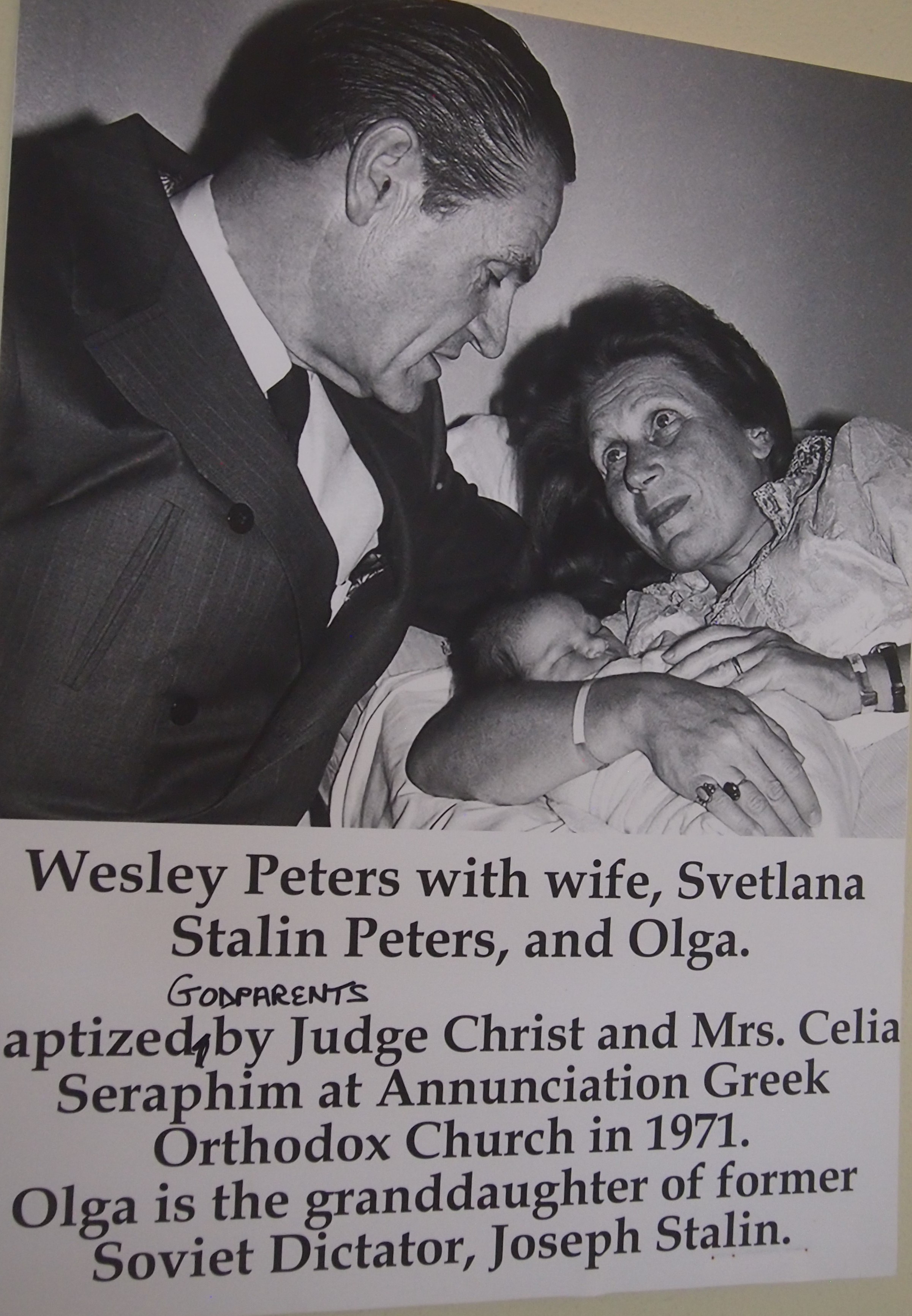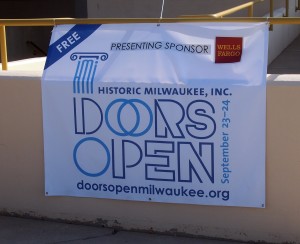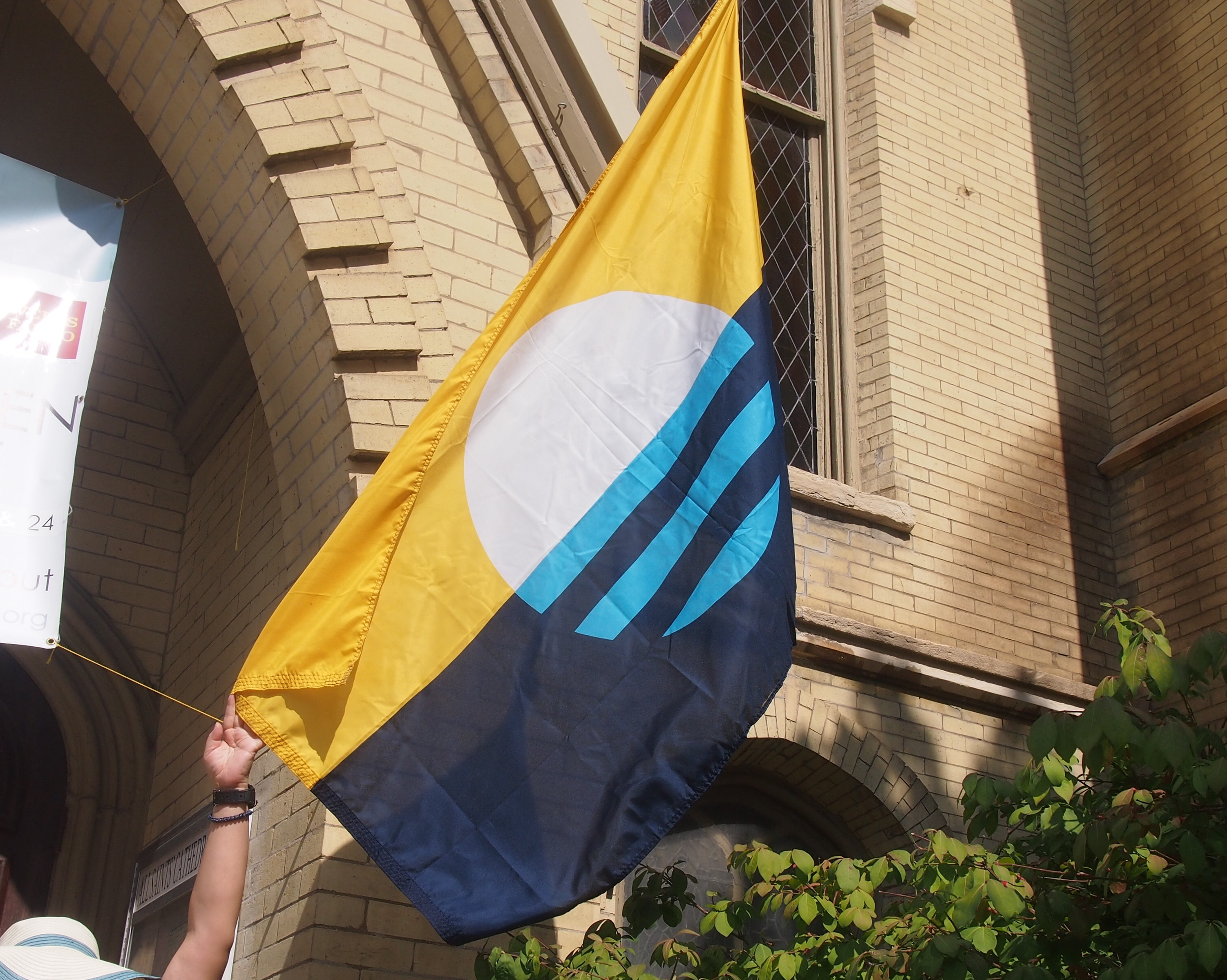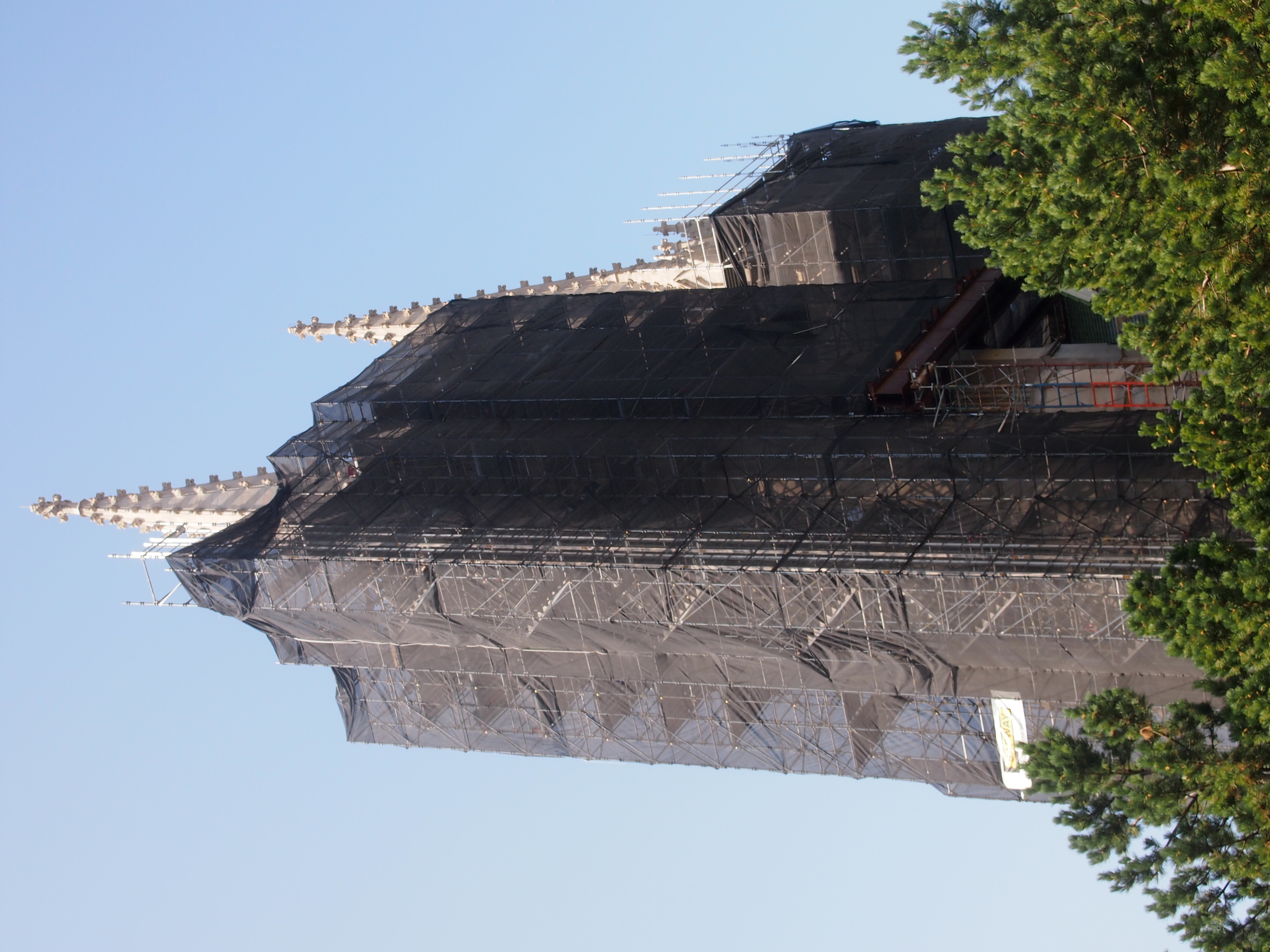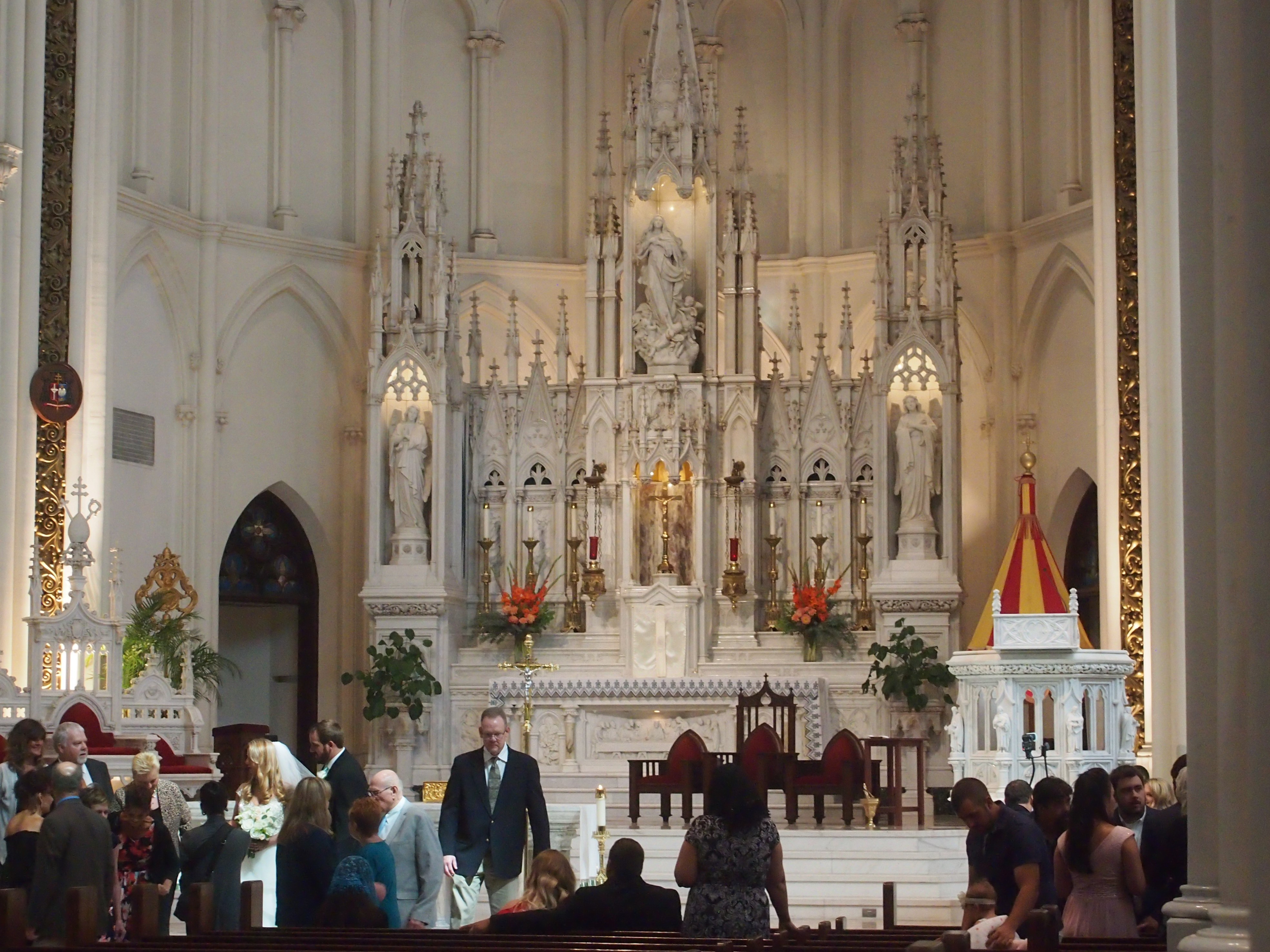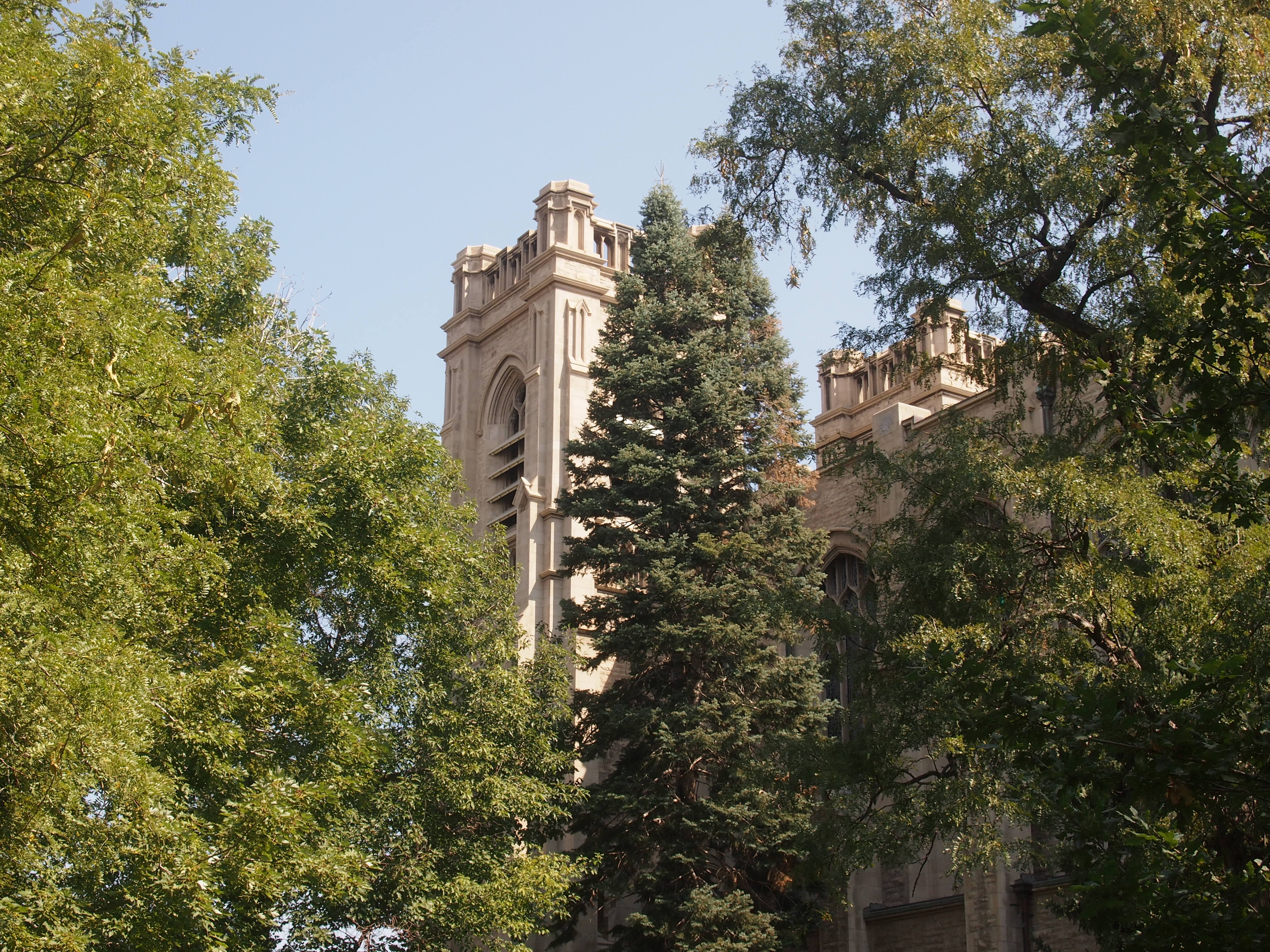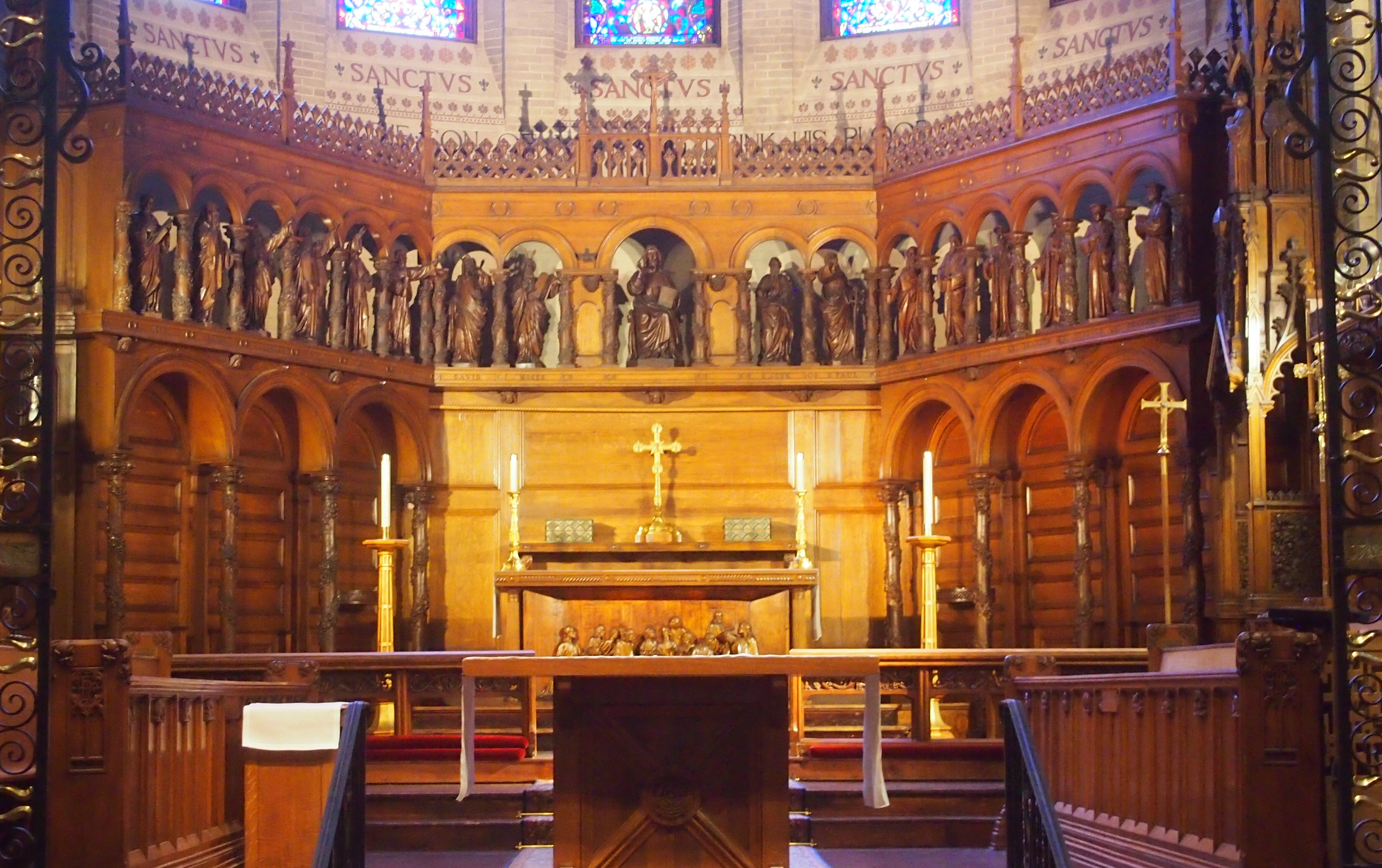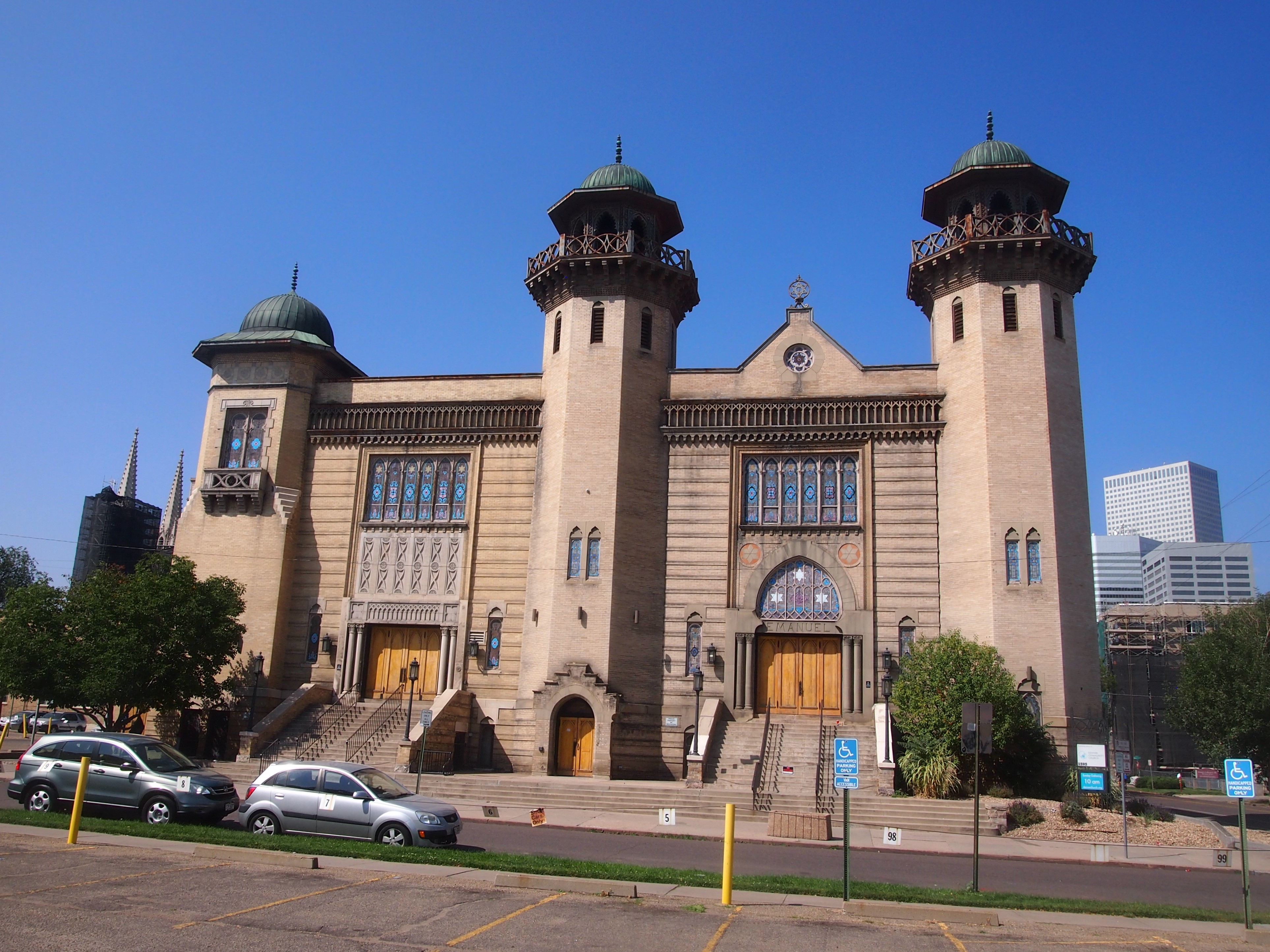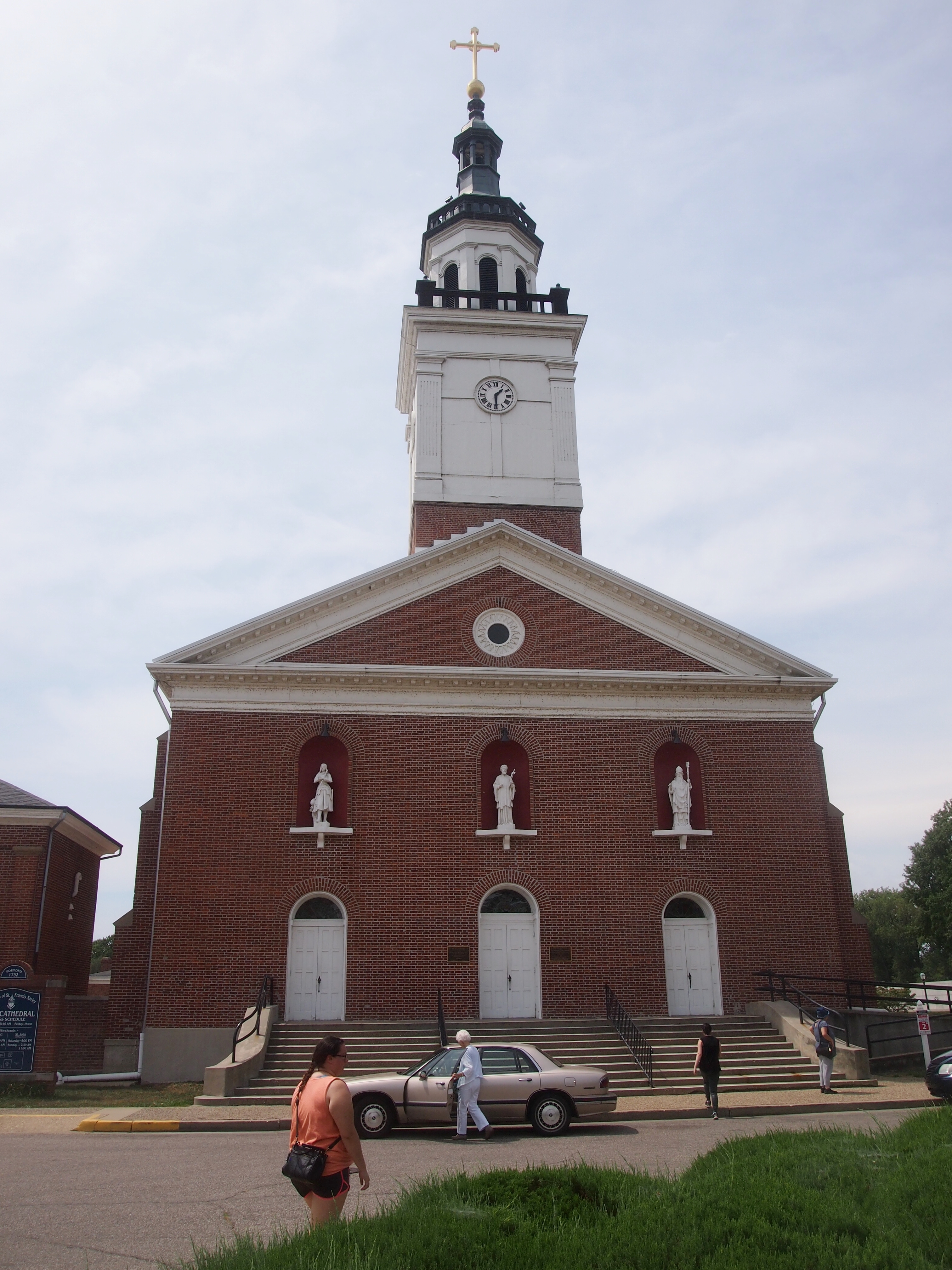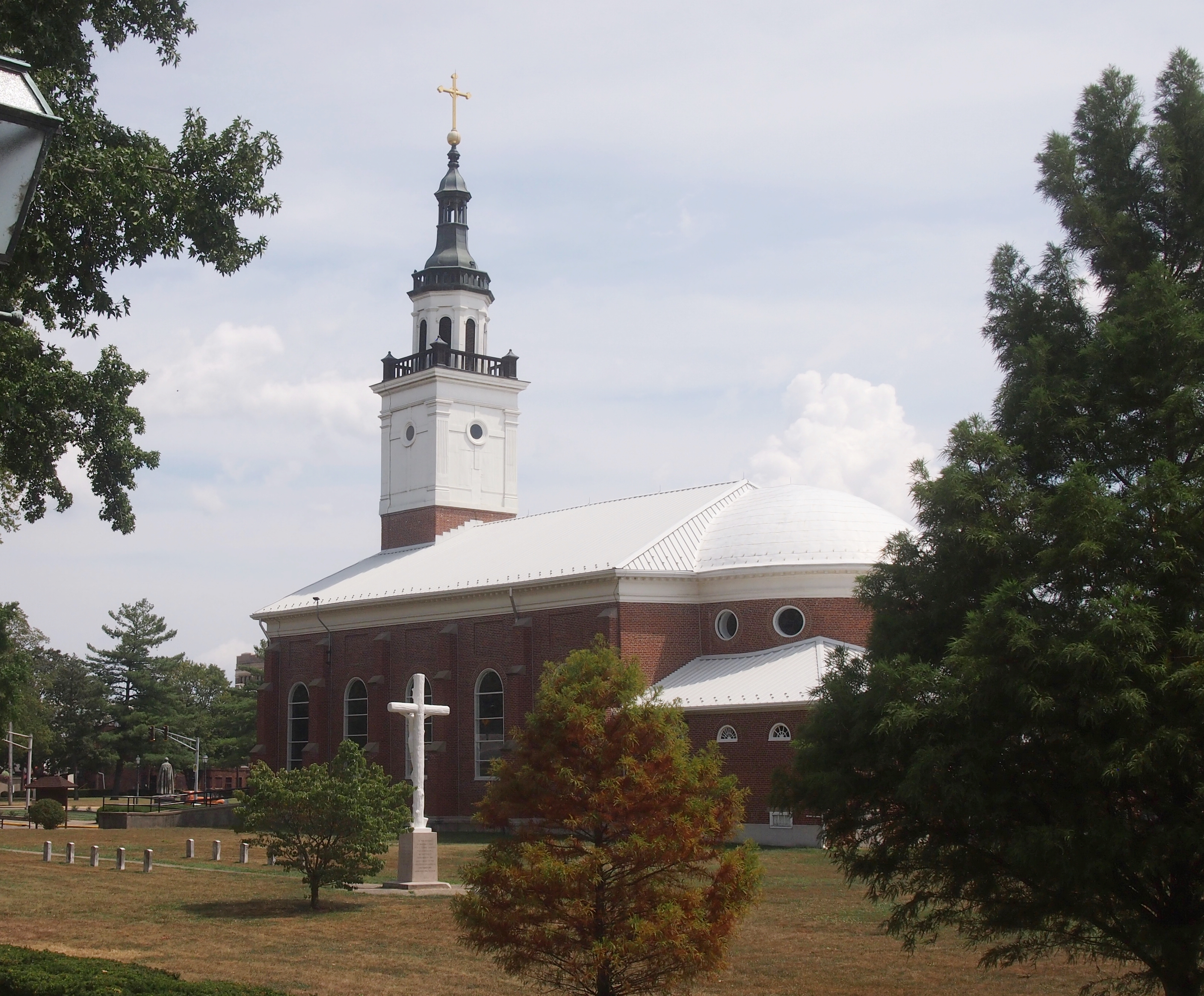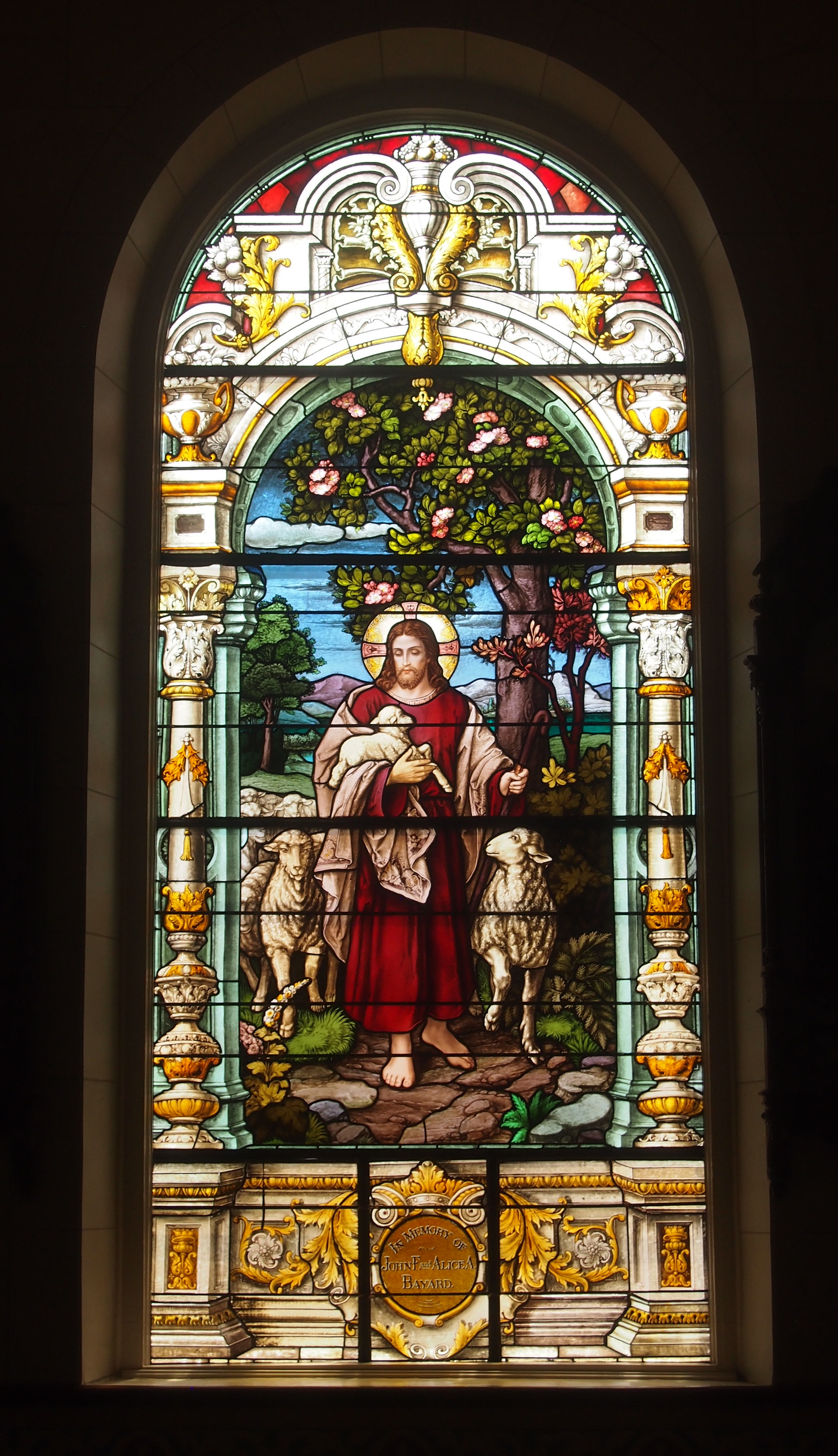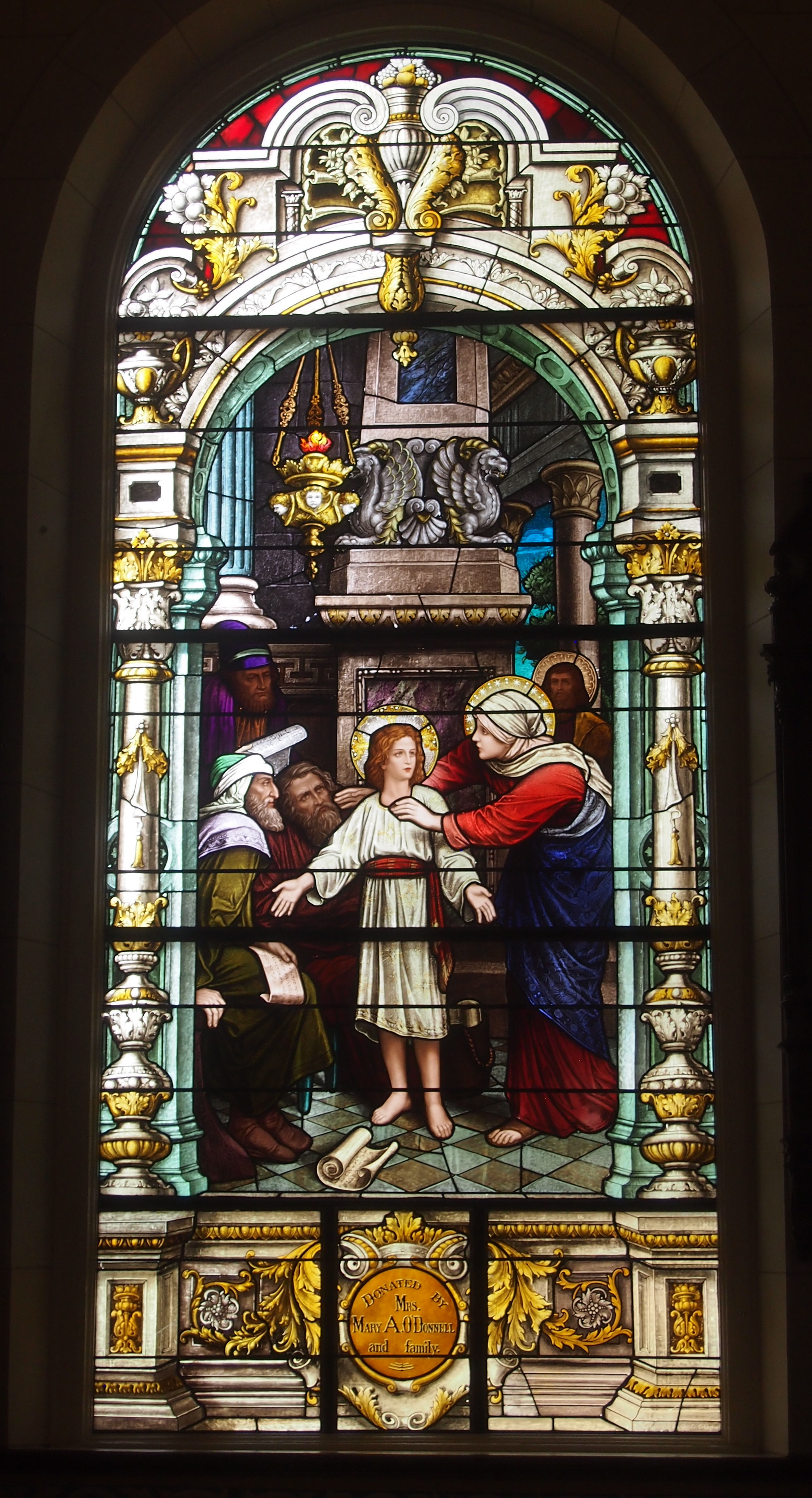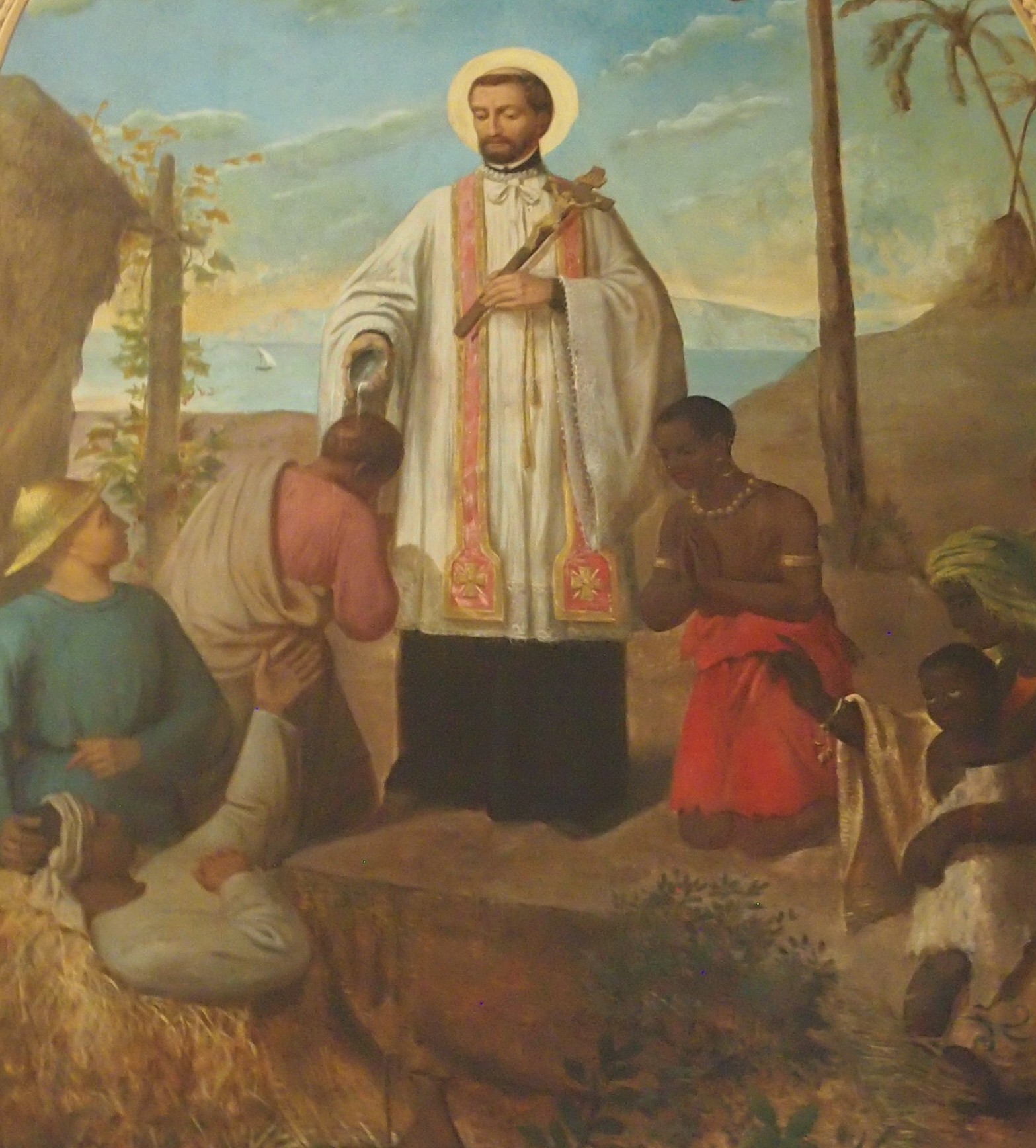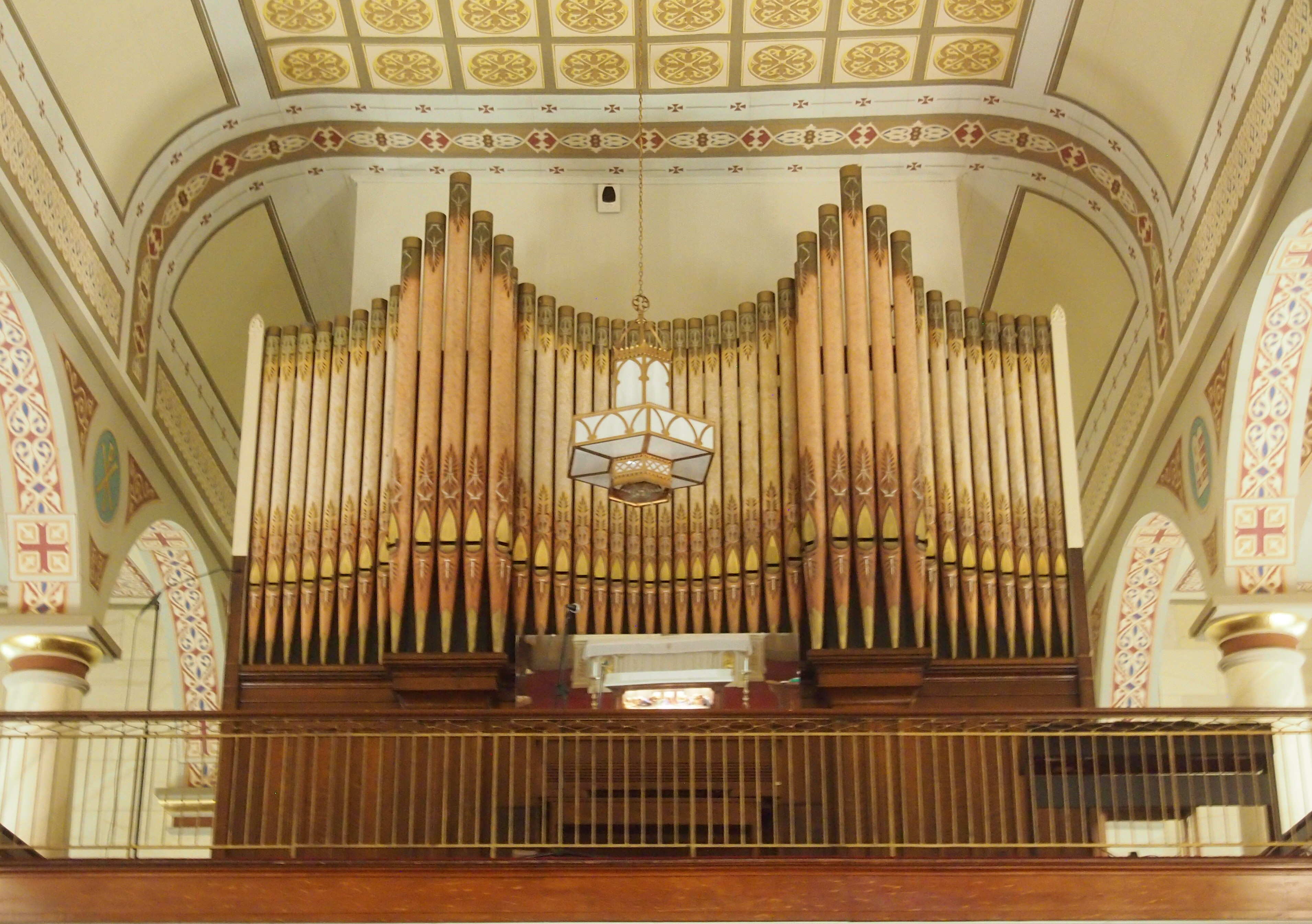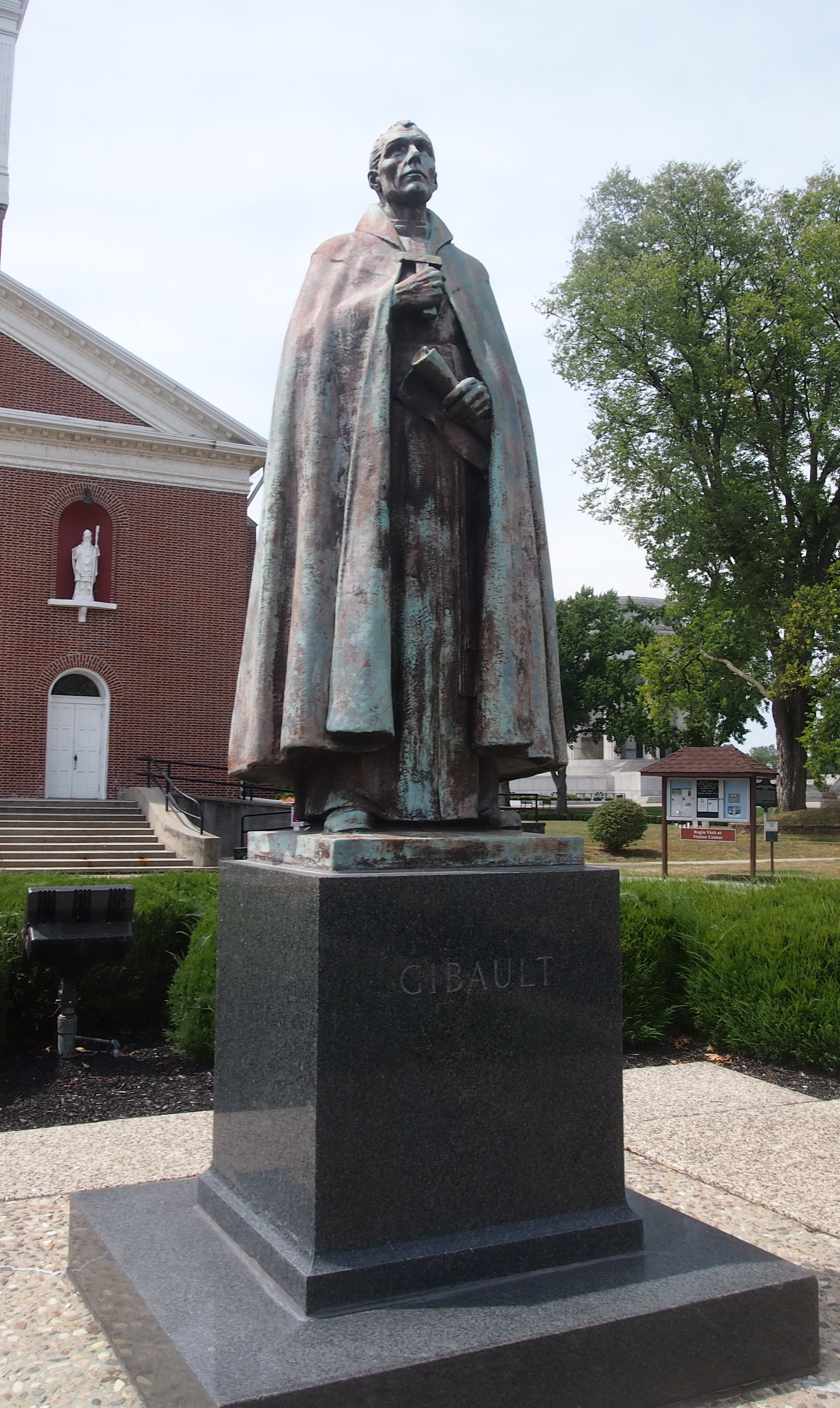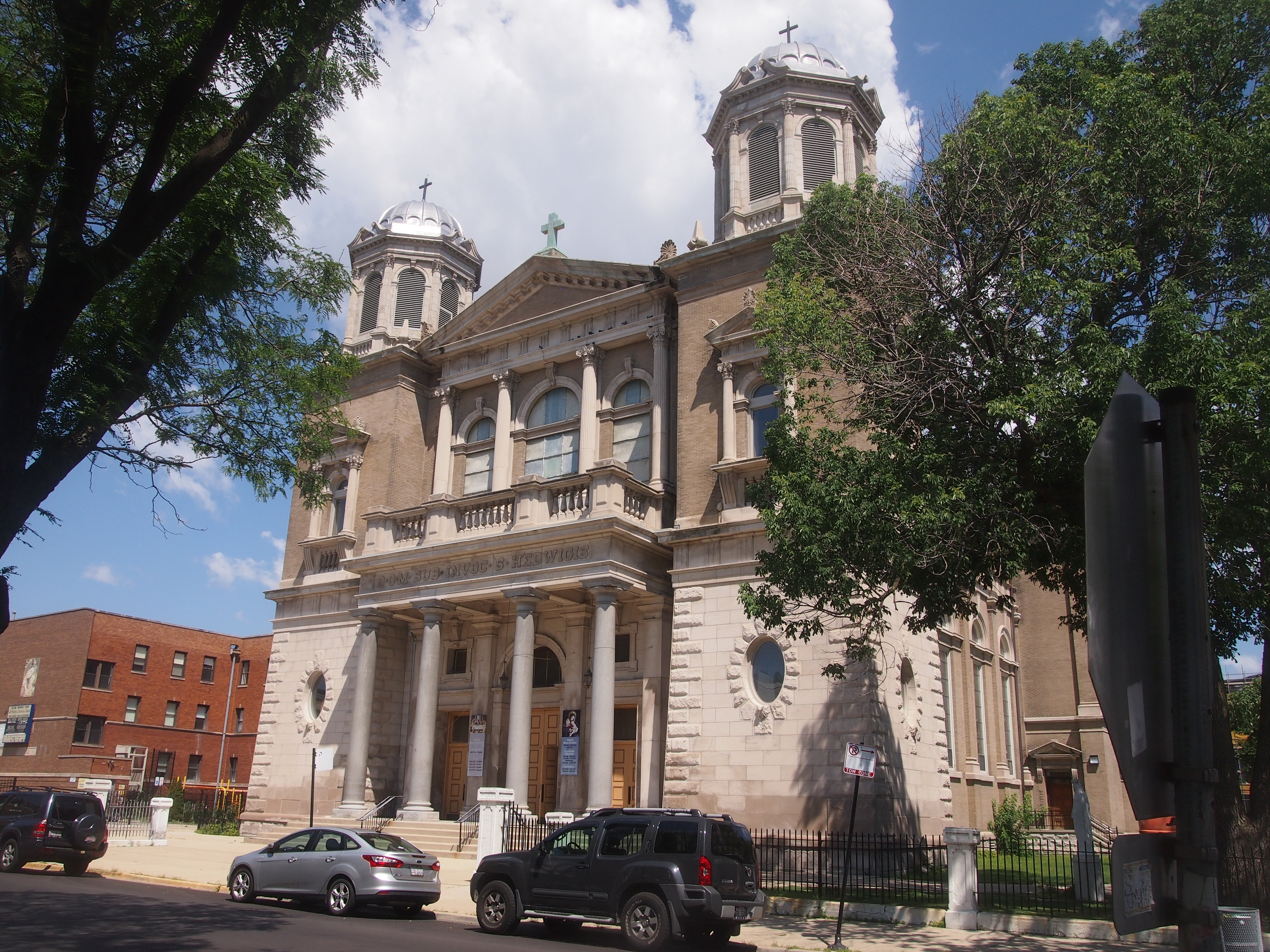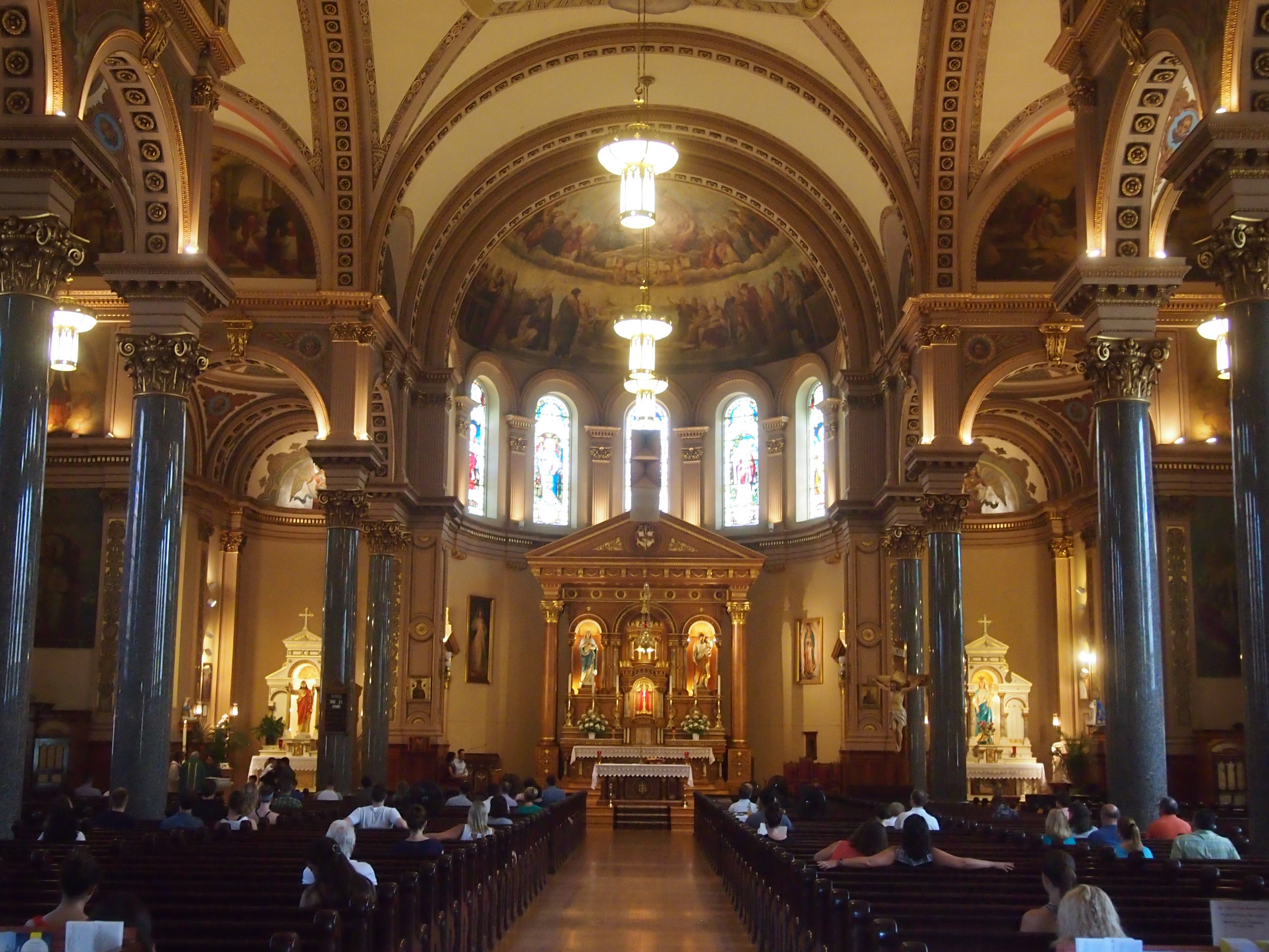Unusually warm this week from Tuesday to yesterday. Still a lot of green leaves. Autumn, but not quite autumn. It’s also the time of the year for Halloween decorations, and to avoid any store or event that uses the terms boo-nanza or spook-tacular.
Two more places from last week’s Open House Chicago, both in west suburban Oak Park. One was St. Edmund, which the sign outside says is Oak Park’s oldest Catholic parish. The church building dates from 1910.
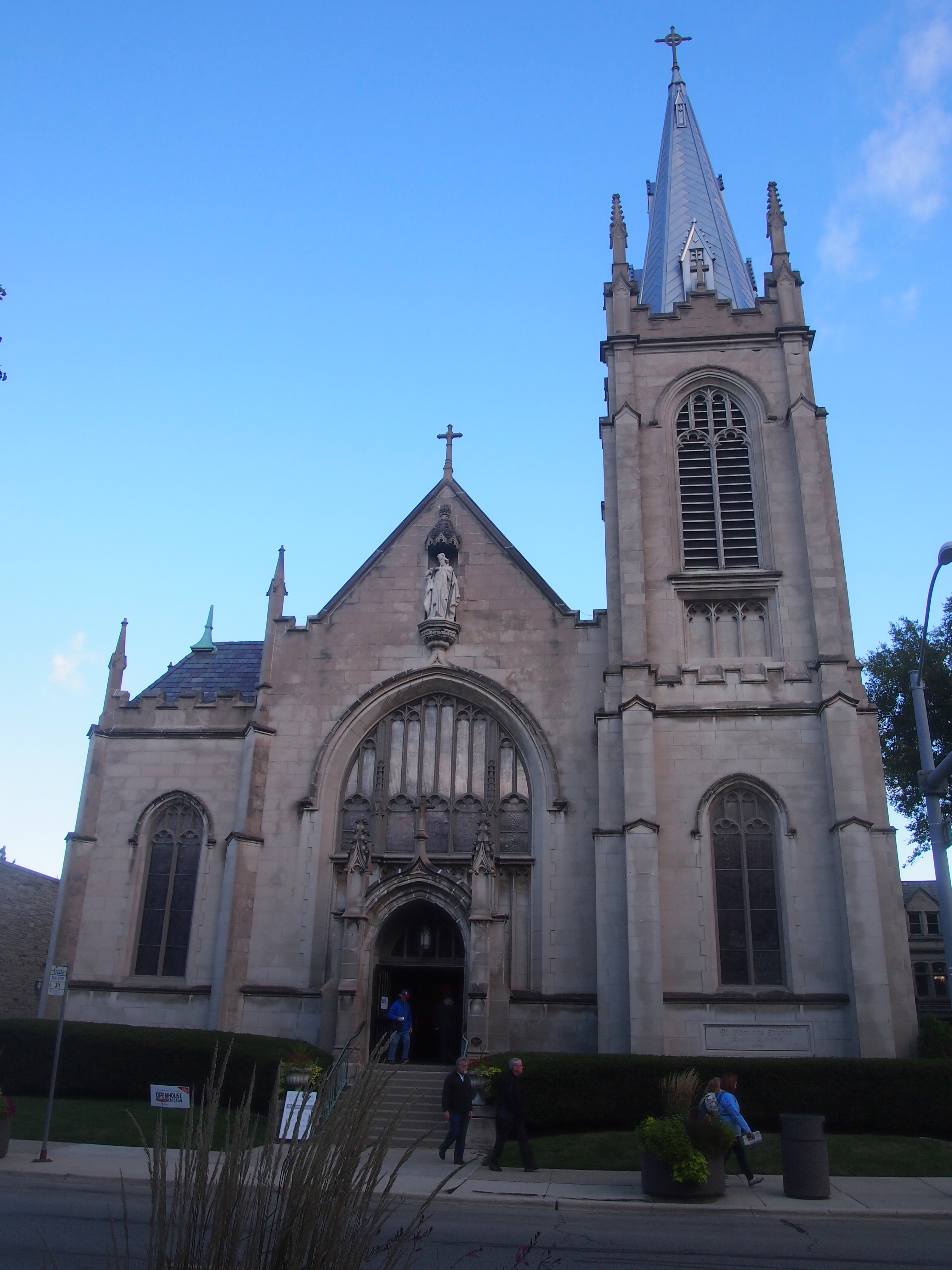 Henry Schlacks, whose work I’ve run across before, design the church. The interior is resplendent.
Henry Schlacks, whose work I’ve run across before, design the church. The interior is resplendent.
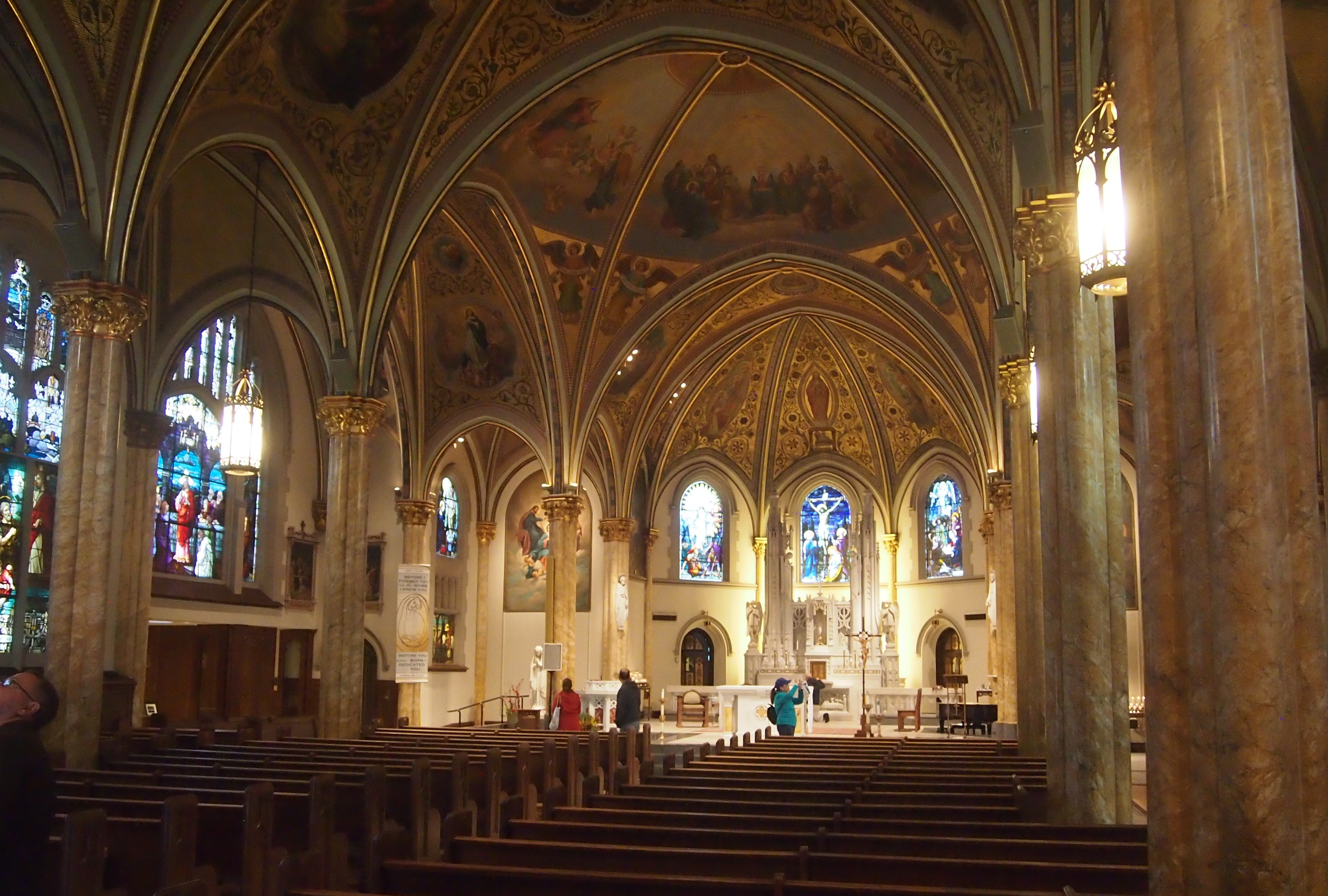 Much of its splendor is the stained glass, created by a studio in Munich (presumably pre-WWI).
Much of its splendor is the stained glass, created by a studio in Munich (presumably pre-WWI).
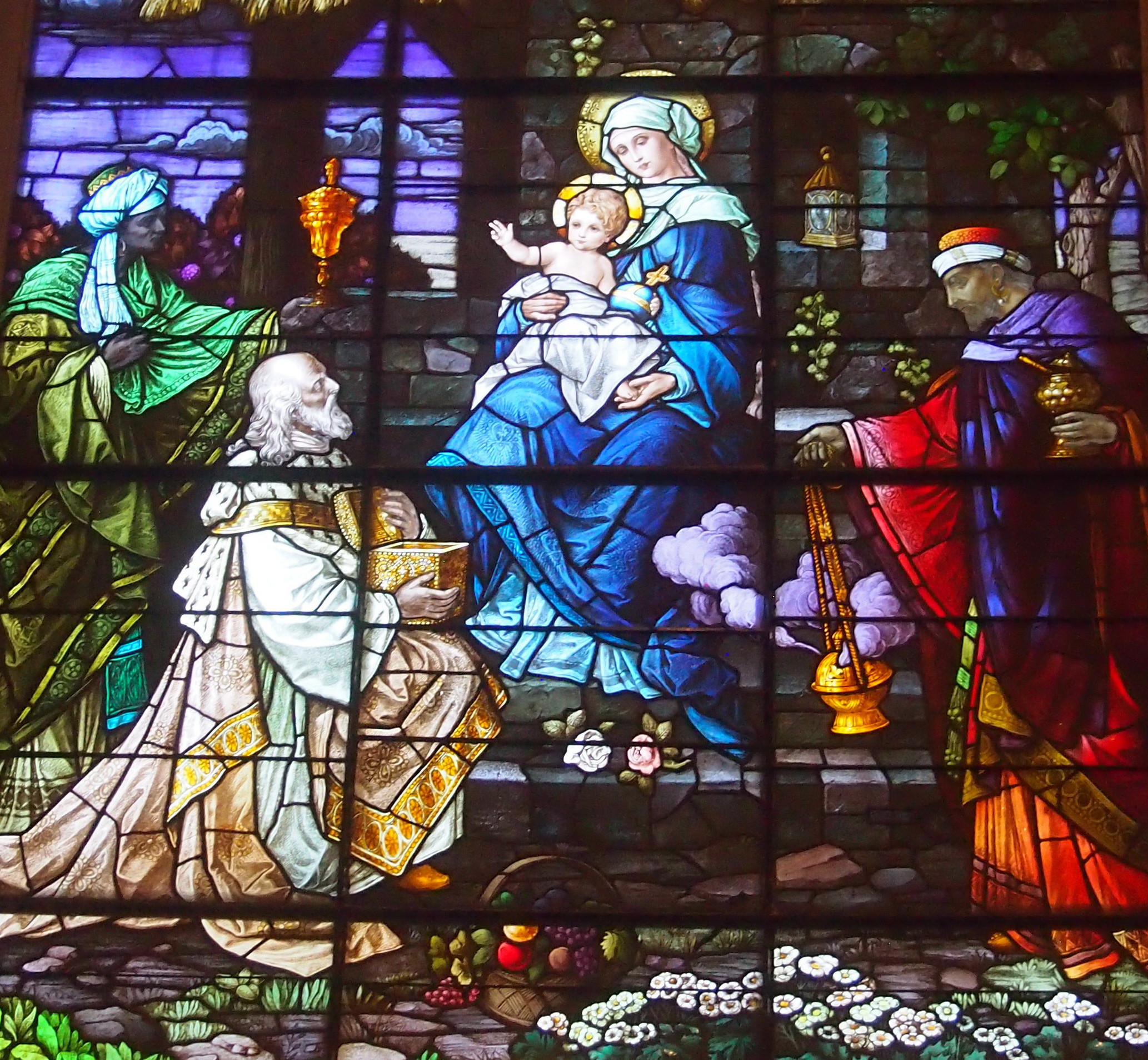
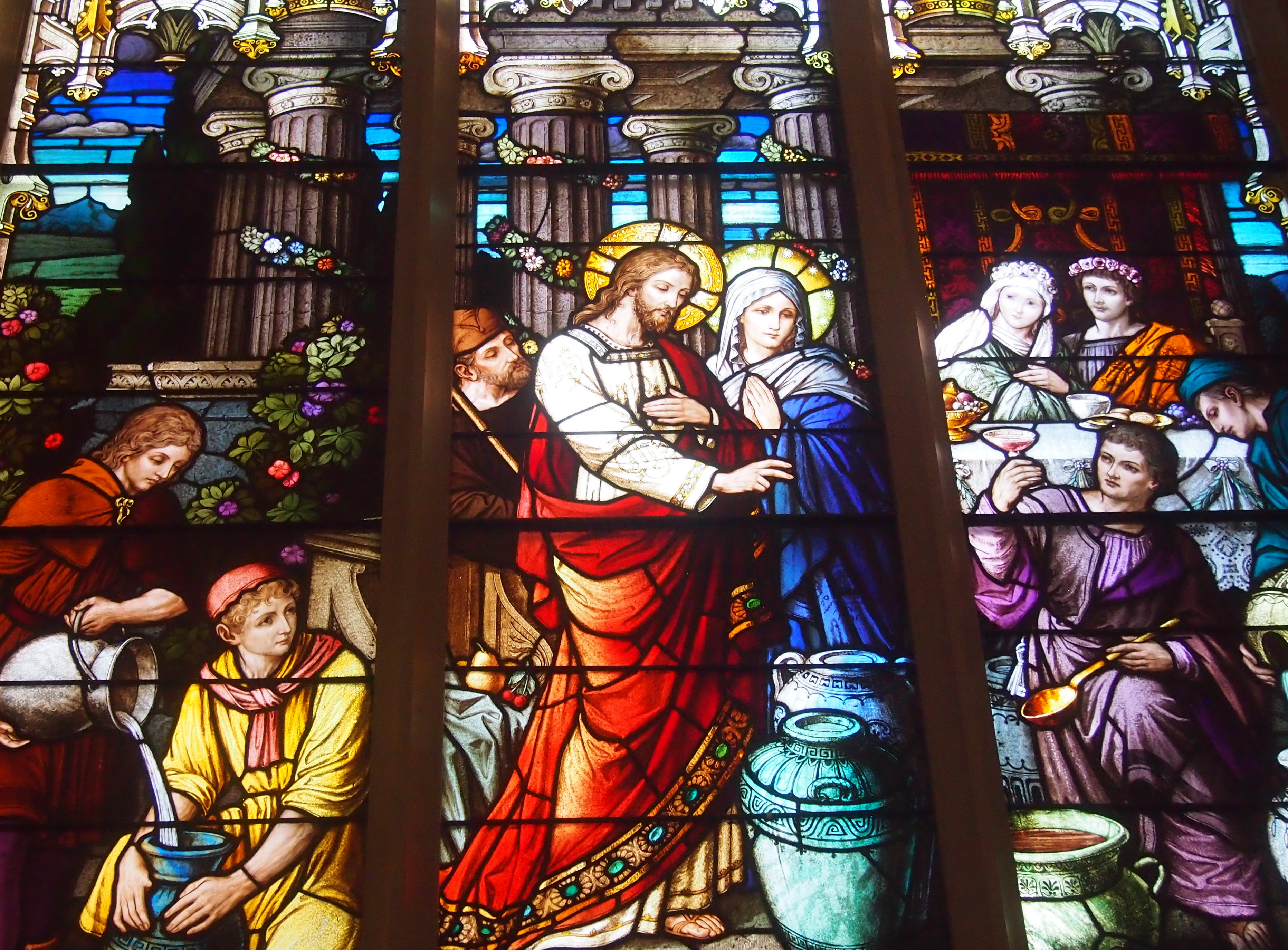 And an interesting baptismal font that, when I was there, reflected one of the windows.
And an interesting baptismal font that, when I was there, reflected one of the windows.
A few blocks away, among the numerous churches on Lake St., is Grace Episcopal Church.
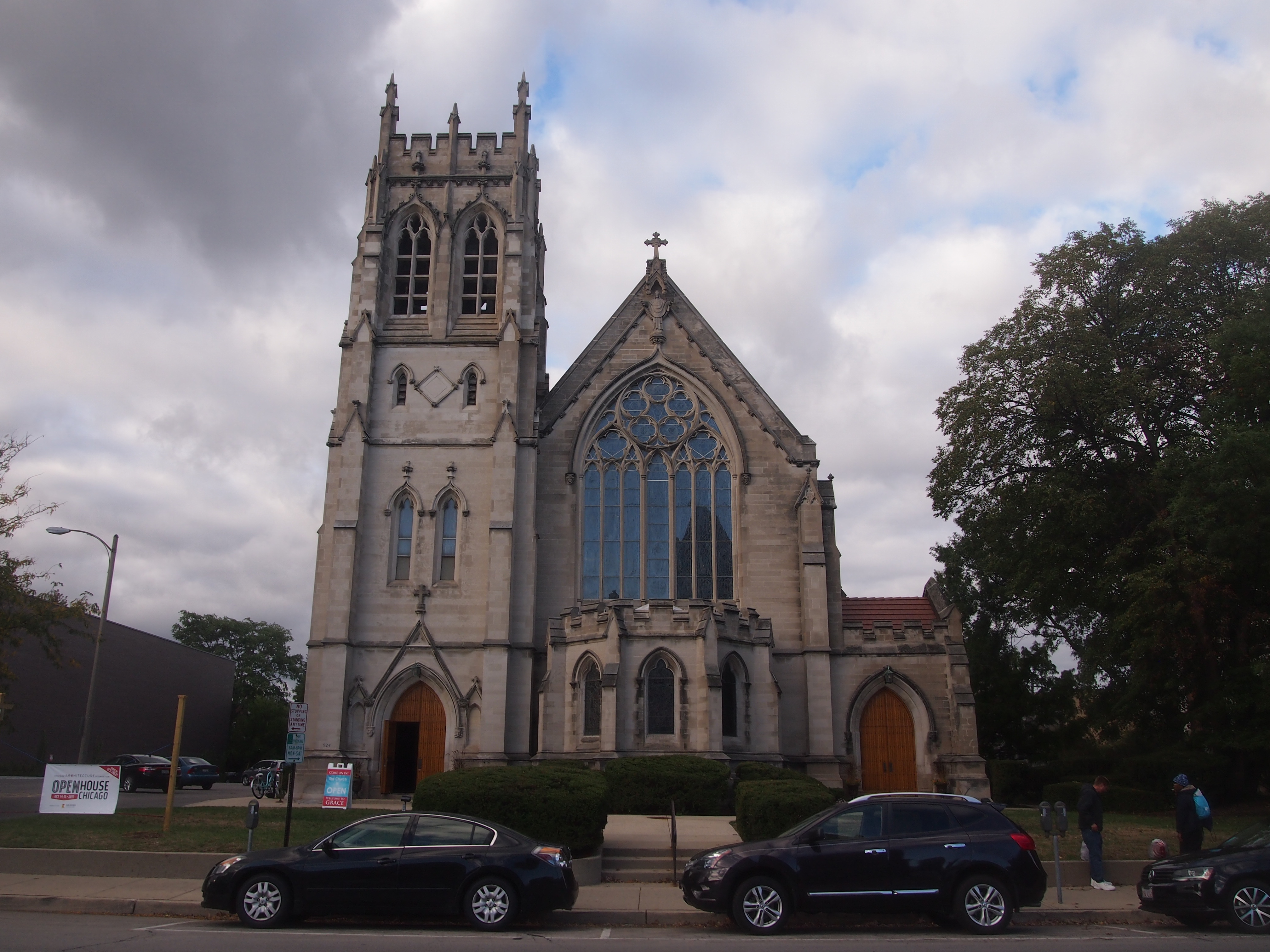 First occupied in 1905 — and the building took a lot longer to complete according to its plans, namely another 70 years — Grace Episcopal also has a resplendent interior, in its more muted way.
First occupied in 1905 — and the building took a lot longer to complete according to its plans, namely another 70 years — Grace Episcopal also has a resplendent interior, in its more muted way.

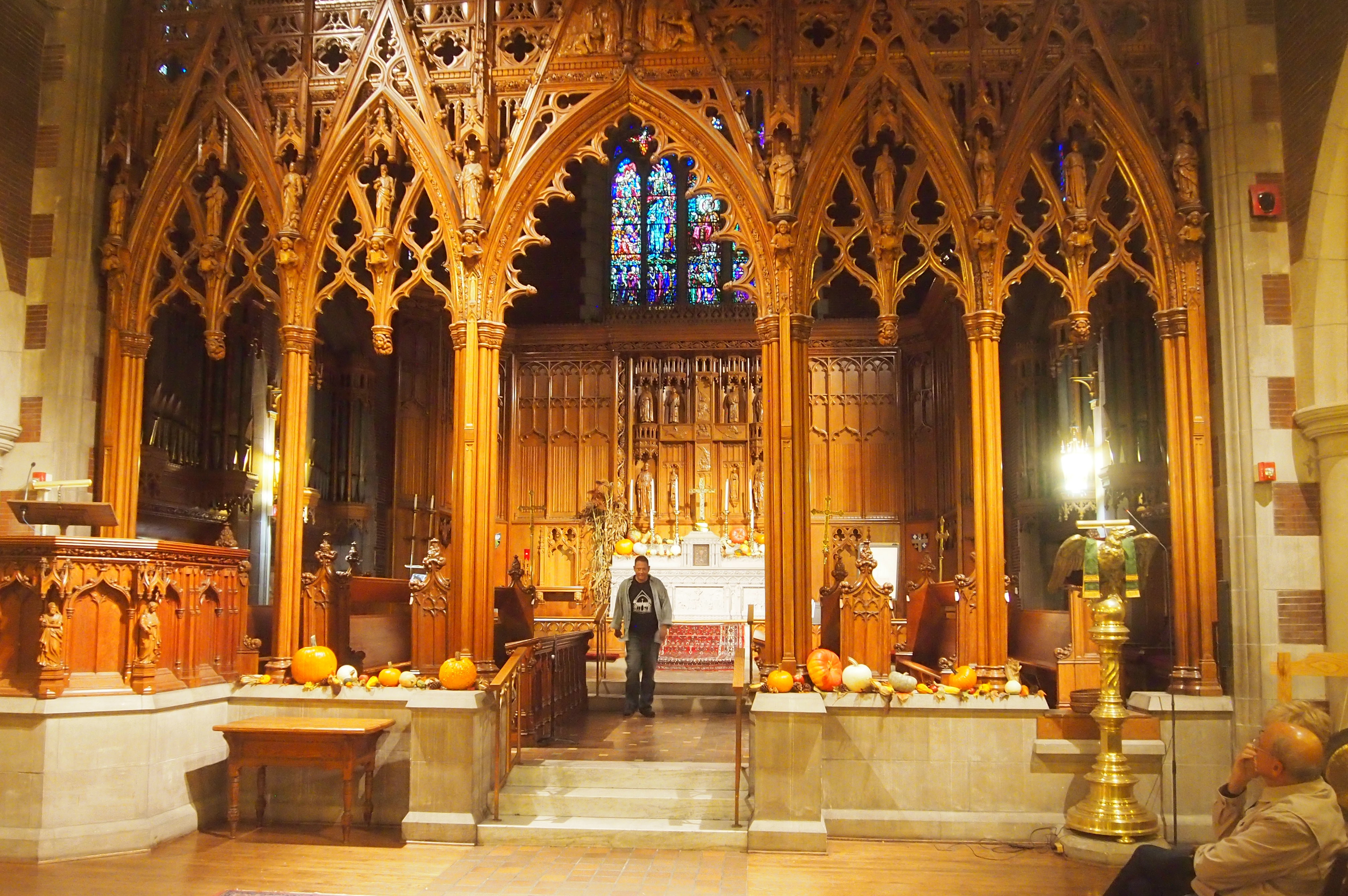 A sign near the entrance reminds visitors that the church, designed by John Sutcliffe, figured in a scene in Home Alone. I wouldn’t have remembered that, since the last and only time I saw that movie was during a bus ride from Perth to Adelaide, or maybe it was Adelaide to Sydney, in early 1992. But I did see “Everything Wrong With Home Alone” not long ago, which was funnier than the movie itself.
A sign near the entrance reminds visitors that the church, designed by John Sutcliffe, figured in a scene in Home Alone. I wouldn’t have remembered that, since the last and only time I saw that movie was during a bus ride from Perth to Adelaide, or maybe it was Adelaide to Sydney, in early 1992. But I did see “Everything Wrong With Home Alone” not long ago, which was funnier than the movie itself.
We listened to the organist practice for a while at Grace. Very nice. It’s also good to see a church equipped with a gong.
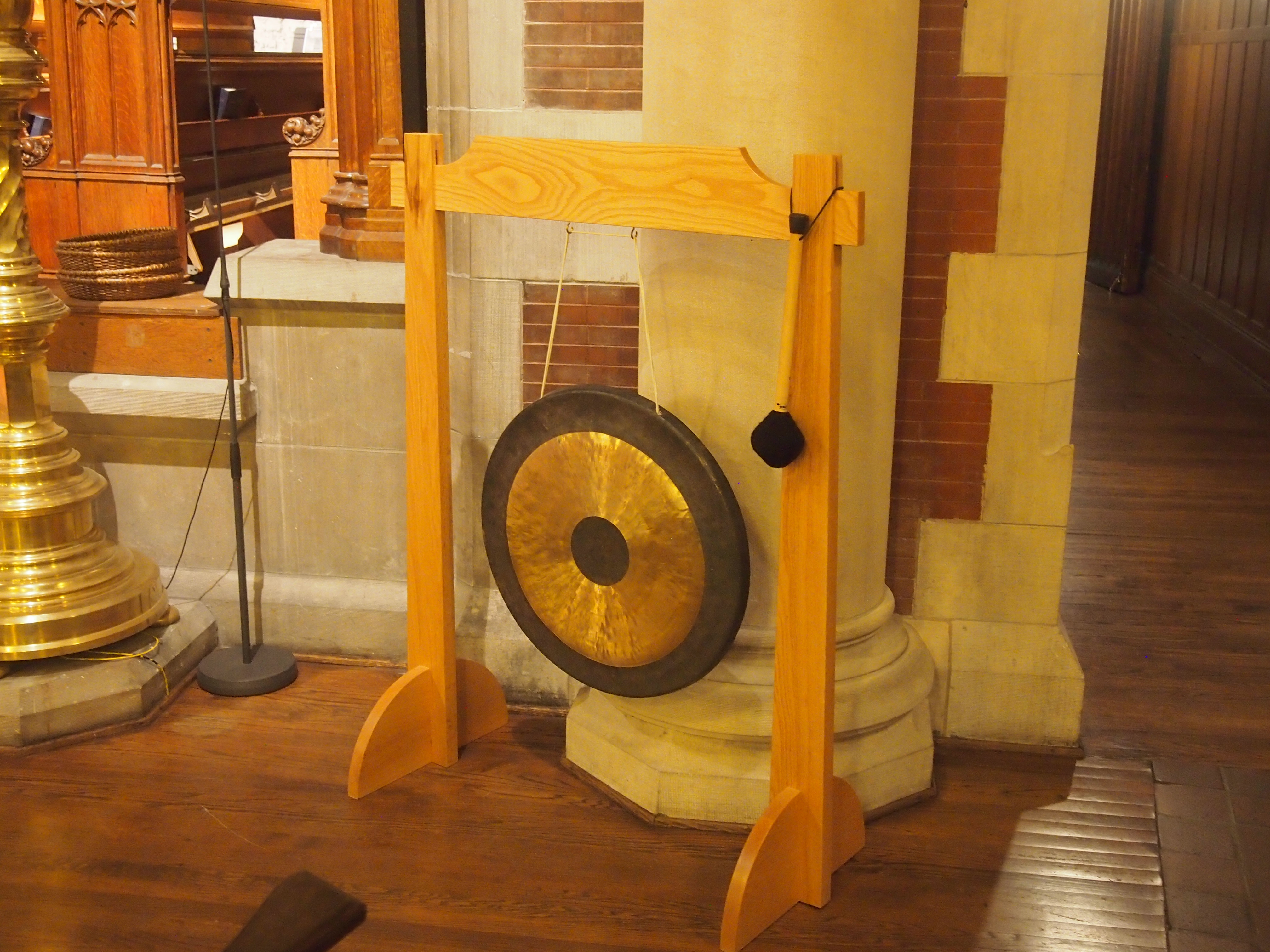 I understand that the gong used during the Winter Solstice Celebration at the Cathedral of St. John the Divine in New York is quite the thing to hear. And see.
I understand that the gong used during the Winter Solstice Celebration at the Cathedral of St. John the Divine in New York is quite the thing to hear. And see.

